 Image Source: News Line
Image Source: News Line
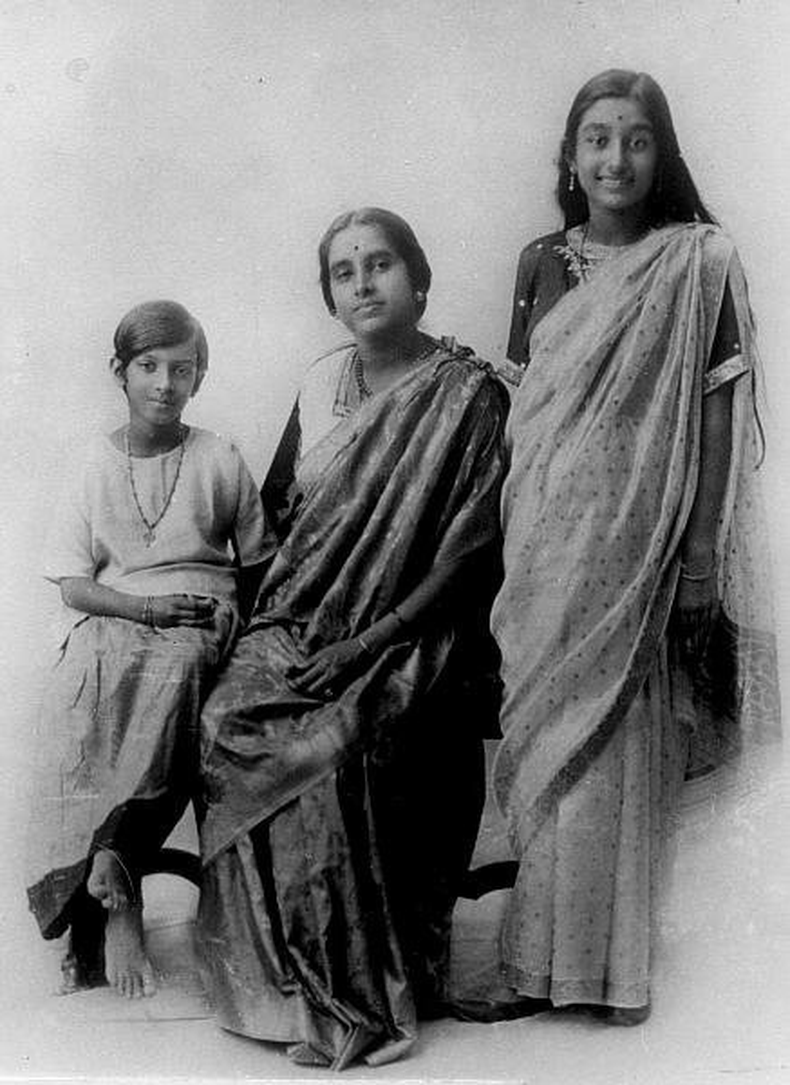


At his age and for one who had never known hardships of life it was no joke to suffer imprisonments. But his faith conquered every obstacle… He was a rare servant of humanity. He was a servant of India because he was a servant of humanity. He believed in God as Daridranarayana. He believed that God was to be found in the humblest cottages and among the depressed of the earth. Abbas Mian is not dead, though his body rests in the grave. His life is an inspiration for us all.
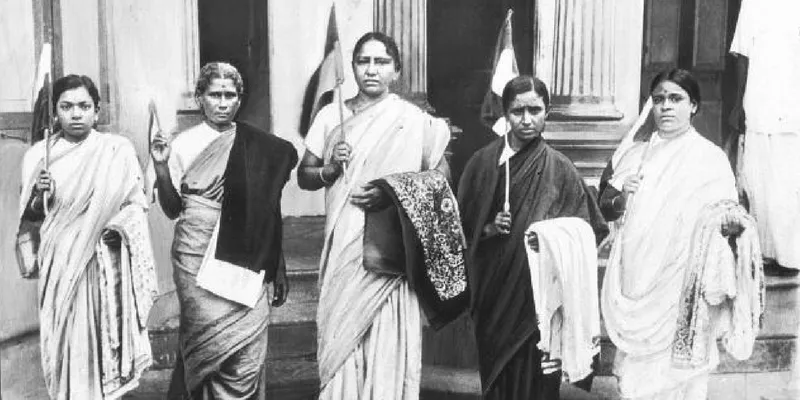








Bhura Singh Valmiki

Banta Singh
बुधु भगत
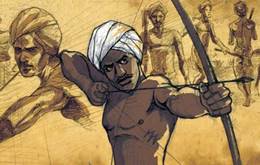

Chakali Ilamma, also known as Chityala Ilamma or Chakali Ailamma, was a prominent Indian revolutionary and freedom fighter who played a pivotal role in the Telangana Peasant Armed Struggle (1946–1951). Born into a marginalized washerman (Rajaka or Chakali) caste family, she became a symbol of resistance against feudal landlords, forced labor (vetti chakiri), and the oppressive rule of the Nizam of Hyderabad. Her defiance as a poor, lower-caste woman inspired widespread peasant uprisings, particularly among women and oppressed communities, contributing to land reforms and the broader fight for social justice in Telangana. She was affiliated with the Andhra Mahasabha and the Communist Party of India (CPI), and her actions helped ignite guerrilla warfare against exploitative zamindars and the Razakars (the Nizam's paramilitary force). Her birth is often commemorated on September 26, born in 1985.
Early Life
Role in the Telangana Armed Struggle
Death
C. P. Sadashivaiah (Chikkanayakanahalli Prabhanna Sadashivaiah) (9 January 1931 – 2 June 2007) was an Indian freedom fighter who later became an industrialist, philanthropist and inventor. He has to his credit several designs of agricultural equipments and implements, some of which he himself designed, while many he improved. His latest invention was Tractor mounted Deep trencher for which he was awarded the NRDC National award and WIPO Gold Medal


Duvvuri Subbamma
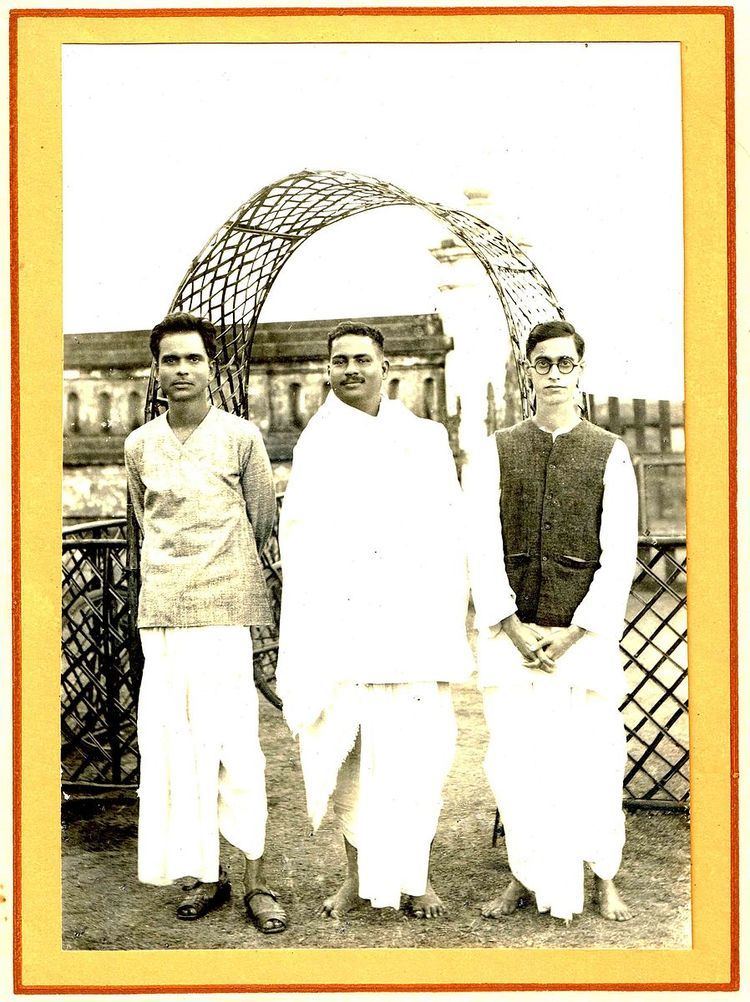
teamht
गंगू मेहतर विट्ठुर के शासक नाना साहब पेशवा की सेना में नगाड़ा बजाते थे। गंगू मेहतर को कई नामों से पुकारा जाता है। भंगी जाति के होने से गंगू मेहतर तो पहलवानी का शौक़ होने की वजह कर गंगू पहलवान के नाम से पुकारा जाता था।
सती चौरा गांव में इनका पहलवानी का अखाड़ा था, कुश्ती के दांव पेच एक मुस्लिम उस्ताद से सीखने के कारण गंगूदीन नाम से पुकारे जाने लगे और लोग इन्हें श्रद्धा प्रकट करने के लिए गंगू बाबा कहकर भी पुकारते थे।
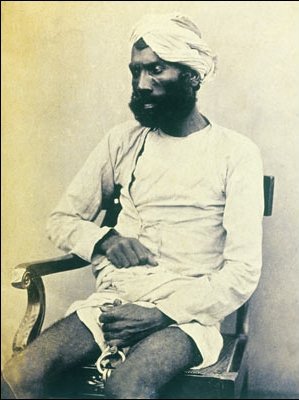
Heritage Times@HeritageTimesIN
#HeroOf1857
Indian Mutiny Rebel Gungoo Mehter who was tried at Kanpur for killing many of the #SatiChaura survivors, including many women and children. He was convicted and hanged at Kanpur on 8 September 1859.
#GungooMehter #SepoyMutiny #IndianRebellion #UprisingOf1857
गंगू मेहतर के पुरखे जिले कानपुर के अकबरपुरा गांव के रहने वाले थे। उच्चवर्णों की बेगार, शोषण और अमानवीय व्यवहार से दुखी होकर इनके पुरखे कानपुर शहर के चुन्नी गंज इलाके में आकर रहने लगे थे।
1857 की लडा़ई में इन्होने नाना साहब की तरफ़ से लड़ते हुए अपने शागिर्दों की मदद से सैंकड़ो अंग्रेज़ों को मौत के घाट उतारा था। और इस क़त्ल ए आम से अंग्रेज़ी सरकार बहुत सहम सी गई थी। जिसके बाद अंग्रेज़ों ने गंगू मेहतर जी को गिरफ़्तार करने का आदेश दे दिया। गंगू मेहतर अंग्रेज़ों से घोड़े पर सवार होकर वीरता से लड़ते रहे। अंत में गिरफ़्तार कर लिए गए। जब वह पकड़े गए तो अंग्रेज़ों ने उन्हे घोड़े में बाँधकर पूरे शहर में घुमाया और उन्हें हथकड़ियाँ और पैरों में बेड़ियाँ पहनाकर जेल की काल कोठरी में रख दिया और तरह तरह के ज़ुल्म किये।
गंगू मेहतर पर इलज़ाम था के इन्होने कई महिलाओं और बच्चों का क़त्ल किया था; पर ये बात प्रोपेगंडा का हिस्सा भी थी, क्युं के अंग्रेज़ों ने उस समय मिडीया का भरपूर उपयोग प्रोपेगंडा के लिए किया था! बहरहाल गंगू मेहतर को फांसी की सज़ा सुनाई जाती है। उसके बाद कानपुर में इन्हे बीच चौराहा पर 8 सितम्बर 1859 को फाँसी के फंदे पर लटका दिया जाता है। लेकिन दुर्भाग्यवश भारत के इतिहास में इनका नामो निशान नही है। यह नाम जातिवाद के कारण इतिहास के पन्नों में कहीं सिमट सा गया है।
शहीद गंगू मेहतर अपनी अंतिम सांस तक अंग्रेजों को ललकारते रहे : “भारत की माटी में हमारे पूर्वजों का ख़ून व क़ुर्बानी कि गंध है, एक दिन यह मुल्क आज़ाद होगा।”
एैसा कहकर उन्होंने आने वाली पीढ़ियों को क्रान्ति का संदेश दिया और देश के लिए शहीद हो गए। कानपुर के चुन्नी गंज में इनकी प्रतिमा लगाई गई है। और यह तस्वीर कानपुर के सिविल सर्जन जॉन निकोलस(1818-1889) ने गंगू मेहतर(1859) को फांसी दिये जाने से पहले लिया था।
Sanjay Gupta
#_क्रान्तिवीर_भंगी_गंगू_मेहतर गंगू मेहतर को कई नामों से पुकारा जाता है । भंगी जाति के होने से गंगू मेहतर, पहलवानी का शौक होने से गंगू पहलवान, सती चौरा गांव में इनका पहलवानी का अखाड़ा था, कुश्ती के दांव पेच एक मुस्लिम उस्ताद से सीखने के कारण गंगूदीन और लोग इन्हें श्रद्धा प्रकट करने के लिए गंगू बाबा कहकर भी पुकारते हैं । गंगू मेहतर के पुरखे जिले कानपुर के अकबरपुरा गांव के रहने वाले थे । उच्चवर्णों की बेगार, शोषण और अमानवीय व्यवहार से दुखी होकर इनके पुरखे कानपुर शहर के चुन्नी गंज इलाके में आकर रहने लगे थे । कानपुर में जन्मे ग़दर के जाबांज गंगादीन मेहतर जिन्हें गंगू बाबा के नाम से भी जाना जाता है । गंगू बाबा एक उच्च कोटि के पहलवान भी थे । वह 1857 में अंग्रेज़ों के विरुद्ध सतीचौरा के करीब वीरता से लड़े । 1857 की लडा़ई में इन्होने 200 अंग्रेजों को मौत के घाट उतारा था । और 200 अंग्रेजो की मौत के कारण अंग्रेजी सरकार बहुत सहम सी गई थी । अंग्रेजी कुत्तों ने गंगू मेहतर जी को गिरफ्तार करने का आदेश दे दिया । और अंग्रेज़ कुत्ते की तरह इनके पीछे लग गए और वीर गंगू मेहतर जी अंग्रेजों से घोड़े पर सवार होकर वीरता से लड़ते रहे । अंत में गिरफ्तार कर लिए गए । जब वे गिरफ्तार हुए उनको हथकड़ियाँ और पैरों में बेड़ियाँ पहनाकर जेल की काल कोठरी में रखा गया था और कड़ा पहरा लगा दिया गया था । उसके बाद कानपुर में इन्है बिच चौराहा पर #_8_सितंबर_185 फाँसी दे दी गई । लेकिन दुर्भाग्यवश भारत के इतिहास में इनका नामो निशान नही है । यह नाम जातिवाद के कारण इतिहास के पन्नों में कहीं सिमट सा गया है । अंतिम सांस तक अंग्रेजों को ललकारते रहे,, "भारत की माटी में हमारे पूर्वजों का खून व कुर्बानी कि गंध है, एक दिन यह मुल्क आजाद होगा ।" ~शहीद सिरोमणी गंगू मेहतर जी ऐसा कहकर उन्होंने आने वाली पीढ़ियों को क्रान्ति का संदेश दिया और देश के लिए शहीद हो गए । कानपुर के चुन्नी गंज में इनकी प्रतिमा लगाई गई है । वहां इनकी स्मृति में हर वर्ष मेला लगता है । लोग श्रद्धा सुमन अर्पित करते हैं ।। इंकलाब जिन्दाबाद ।। इस तस्वीर कानपुर के सिविल सर्जन जॉन निकोलस का जिन्होंने गंगू मेहतर को फांसी देने के पहले ये तस्वीर लिया था । ~आजाद
"भारत की माटी में हमारे पूर्वजों का खून व कुर्बानी कि गंध है, एक दिन यह मुल्क आजाद होगा।"-स्वतंत्रता सेनानी गंगू मेहतर (5.6.1858)

मुरिया विद्रोह के अंत होने के बाद राजा भैरमदेव ने बस्तर पर राज किया, बस्तर की जनता को भैरमदेव पसंद नही थे, कुछ विद्रोहो के बाद बिल्कुल भी नही, उन्हें भैरमदेव के भाई कालेन्द्र सिंह पसंद थे। सम्पूर्ण बस्तर भैरमदेव से ज्यादा कालेन्द्र सिंह का सम्मान करती थी, वे उस समय बस्तर के दीवान थे और आदिवासिओ पर प्रेम प्राप्त करने वाले वे एक मात्र सफल दीवान थे।
राजा भैरमदेव की 2 पत्नियां थी, किन्तु राजा का कोई पुत्र प्राप्त नही हुआ था, तो कालेन्द्र सिंह अपने आप को भावी राजा के रूप में देखते थे। राजा भैरमदेव के अंतिम दिनों में उन्हें पुत्र की प्राप्ति हुई, जो कालेन्द्र सिंह को राजा बनने में एक बाधा प्रतीत हुई तो उन्होंने कुछ आदिवासी नेताओ को बुला कर यह अफवाह फैला दी कि कुंवर रुद्र प्रताप सिंह में राजा के अंश नही है और वे राजा बनने के योग्य नही है, जिसका समर्थन राजा की दूसरी पत्नी ने किया। इस बात से आदिवासिओ में रुद्र कुंवर के प्रति नफरत पैदा कर दी गई। राजा के अंतिम दिनों और परिस्तिथियों को देखते हुए किशोर रुद्र प्रताप को राजा घोषित कर दिया गया और इस बात से आहत होकर कालेन्द्र सिंह ने राजा के खिलाफ षड्यंत्र रचना चालू कर दिया।
राजा होने में बावजूद रुद्र प्रताप, कालेन्द्र सिंह से डरते थे। इस डर को मिटाने में लिए उन्होंने अपने पिता की तरह अंग्रेजों से हाथ मिला लिया और कालेन्द्र सिंह को दीवान पद से हटा दिया और पंडा बैजनाथ को नया दीवान बना दिया जो अंग्रेजों के चापलूस थे। इस फैसले ने आदिवासिओ को राजा के विरुद्ध जाने पर मजबूर कर दिया और विद्रोह को चिंगारी दी। इन परिस्थितियों का फायदा उठाते हुए कालेन्द्र सिंह ने भूमकाल की भूमिका रची और उन्होंने नेतानार गांव के एक उत्साह से भरे युवक जिसे बाहरी लोगों से नफरत थी , गुण्डाधुर को युद्ध के नेतृत्व की लिए चुना। और आगे की रणनीति तैयार की।
एक उम्दा रणनीतिकार नेतानार का युवा गुण्डाधुर,
राजा और अंग्रेज के खिलाफ गुण्डाधुर ने अलग-अलग जनजातियों से नेता चुन कर पूरे बस्तर को एक धागे में बांध दिया। इन नेताओं ने संगठन बनाये जो सभी जगह से विद्रोह का नेतृत्व कर सके, जिसमे डेब्रिधुर, सोनू माझी, मुंडी कलार, मुसमी हड़मा, धानु धाकड़, बुधरु और बुटुल थे जो गुण्डाधुर के विश्वसनीय थे। इन्होंने गांव-गांव जा कर लोगो को एकत्रित किया। विरोध चिन्ह के रूप में डारा-मिरी को उपयोग किया गया, जिसमें आम की टहनी पर लाल मिर्च को बांध दिया जाता था।
जनवरी 1910 में ये सारे संगठन सक्रिय हो चुके थे। 2 फरवरी 1910 को पुसपल के बड़े बाजार में बाहरी व्यपारियो को मारा गया, 5 फरवरी को पूरा बाजार लूट लिया गया और आदिवासियों में बटवा दिया गया। गुण्डाधुर ने ऐसे बहुत बाजार को लुटवा कर बटवा दिया। 13 फरवरी तक लगभग दक्षिण-पश्चिम बस्तर गुण्डाधुर के समर्थकों के कब्जे में थी। नेतानार का एक साधारण युवा अद्भुत संगठन करता सिद्ध हुआ। ये बात अंग्रेजो तक पहुच चुकी थी, अंग्रजो में सैन्य टुकड़ी के साथ कप्तान गेयर को राजा और दीवान की मदत के लिए भेजा। राजा, पंडा बैजनाथ और गेयर ने सभी आदिवासिओ को शांत करने की नीतियां बनाई।
22 फरवरी को एक विरोध में 15 मुख्य क्रांतिकारी नेता गिरफ्तार किये गए, परंतु अंग्रेज सैनिक गुण्डाधुर को पकड़ना छोड़ उनका चेहरा भी नही देख पाए। कप्तान गेयर को गुण्डाधुर के साहस का अनुमान हो गया था। गेयर ने बस्तर की माटी की कसम कहते हुए सारे अत्याचार को खत्म करने की घोषणा की, जो अंत मे एक छलावा निकला ताकि वे गुण्डाधुर और उनके समर्थक को पकड़ सके। इसके बाद विद्रोह और बढ़ गया, महीनों तक गुण्डाधुर ने हर छोटी- बड़ी लड़ाइयों का नेतृत्व खुद किया, गेयर ने गुण्डाधुर को पकड़ने के कड़े निर्देश दिए। यह लड़ाइयों का क्रम काफी दिनों तक यूँ ही चलता रहा। करीब 14-15 लड़ाइयों में विजयी होने के बाद गुण्डाधुर ने कप्तान गेयर पर हमला कर दिया पर गेयर छिप कर भाग निकला
राजा,अंग्रेज,दीवान और अंग्रेजी सैनिक गुण्डाधुर के नाम से कांप उठते थे। पहली बार महीनों तक किसी आदिवासी ने अंग्रेजी रणनीतियों को भेदते हुए अपना परचम लहराया था।
24 मार्च 1910 को गुण्डाधुर और उनके समर्थक नेतानार में सारे लड़ाइयों का उत्साह मनाने के लिए एकत्रित हुए। सोनू मांझी जो गुण्डाधुर के विश्वनीय थे, उसे अंग्रजो ने पैसे और सत्ता के लालच में खरीद लिया था। सभी आदिवासी युद्ध से थक चुके थे, भर पेट भोजन और महुवे के नशे में अपना संयम खो चुके थे। तब सोनू मांझी ने मौके का फायदा उठाते हुए, सारी जानकारी गेयर को दे दी। 25 मार्च को सुबह बहुत मात्रा में अंग्रेज सैनिक बदुको के साथ नेतानार के तरफ बढ़ गए , और शुरुवाती कस्बो में आदिवासियों पर गोली चलाना चालू कर दिया, गोलियों के आवाज़ ने गुण्डाधुर को सचेत कर दिया और वे बाकी लोगों को सचेत करने लग गए परंतु कोई धनुष-बाण छोड़ खुद खड़े होने लायक नही थे। गुण्डाधुर ने अपनी तलवार उठायी और घने जंगलों की ओर बढ़ गए , वे जानते थे कि उनके पकड़े जाने से महान भूमकाल का पूर्ण अंत हो जाएगा।
1910 के इस महान घटना में न गुण्डाधुर मारे गए न पकड़े गए, अंग्रेजी फाइल यह कह कर बन्द कर दी गयी कि कोई बताने के समर्थ नही है कि गुंडाघुर कौंन और कहां है। बस्तर के जंगल के चीखते सन्नाटे आज भी अपने पुत्र गुण्डाधुर का इंतज़ार कर रही है।
वर्तमान के छत्तीसगढ़ में गुण्डाधुर स्मृति में साहसिक कार्य एवं खेल क्षेत्र में उत्कृष्ट प्रदर्शन के लिए गुण्डाधुर सम्मान स्थापित किया गया है।
एक आदिवासी युवा महान गुण्डाधुर की कहानी सामने रख मैं गर्व से कहता हूँ की हाँ मैं आदिवासी हूँ #HaanMainAdivasiHoon #Part05
(हाँ मैं आदिवासी हुँ। शुरुआत ऐसे किस्सों की शृंखला की जो आदिवासियों की गौरव गाथा सबको सुनाएगा। बने रहे कोसल कथा के साथ।)
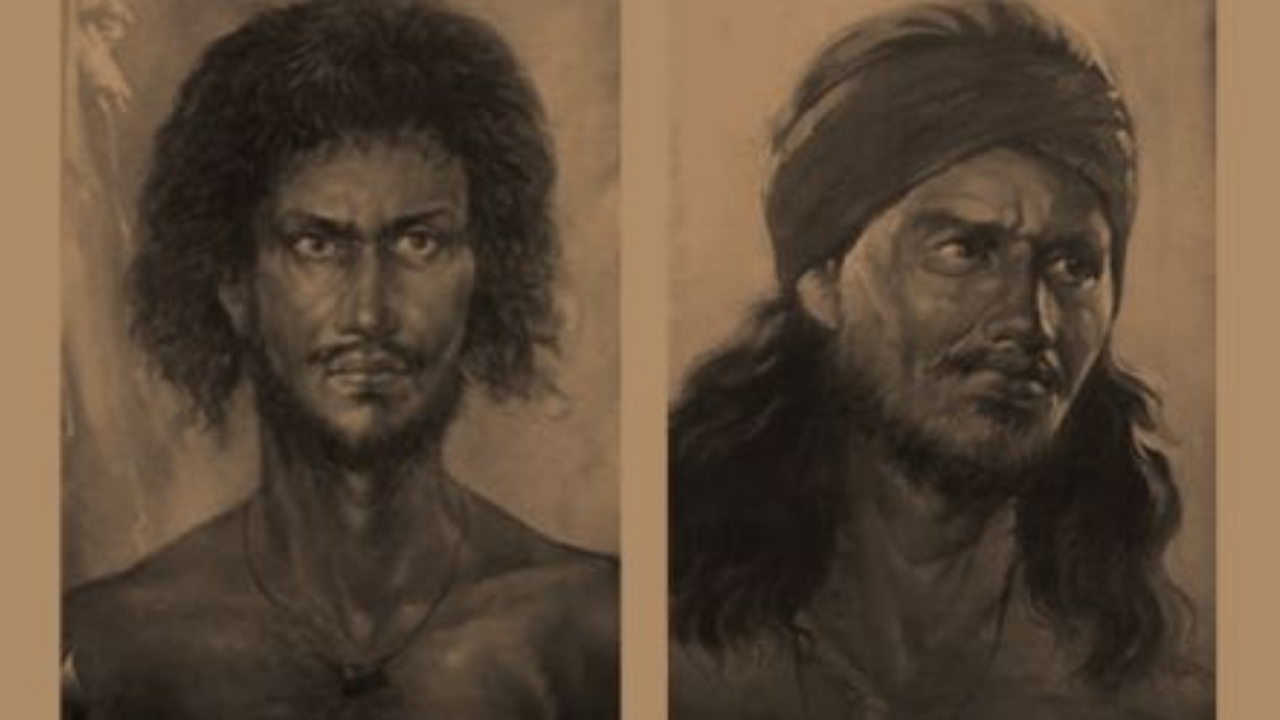


Hema Bharali

Hema Bharali addressing a press conference in 2006
Born February 19, 1919
Assam Province, British India
Died April 29, 2020 (aged 101)
Assam, India
Resting place Mumbai
Occupation Social worker
Freedom fighter
Gandhian
Sarvodaya leader
Years active 1950–2020
Awards Padma Shri
National Communal Harmony Award
Fakhruddin Ali Ahmed Memorial Award
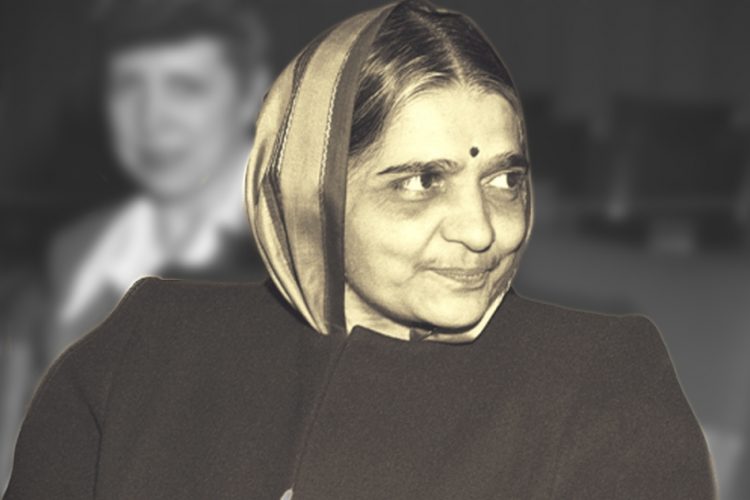

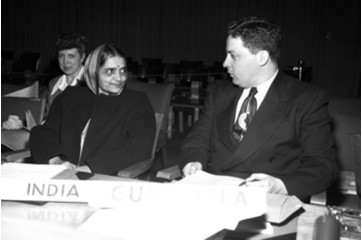


Jayanand Bharti

Jayanand Bharti (October 17, 1881 – September 9, 1952), also spelled Jayananda Bharati, was a prominent Indian freedom fighter, social reformer, and Arya Samaj activist from the Garhwal region of Uttarakhand (then part of the United Provinces under British India). Born in the remote village of Arkanda, Pauri Garhwal district, Bharti emerged as a towering figure in the Indian independence movement, known for his fearless defiance of British colonial authority and his crusade against caste oppression. His most celebrated act was leading the 1932 protest against British Governor Michael Keogh (referred to locally as "Michel Halley"), blocking his entry into Garhwal, an event that galvanized anti-colonial sentiment in the hills. Bharti also spearheaded the Dola-Palki Movement, challenging caste-based restrictions on marginalized communities, and promoted education and women's rights through the Arya Samaj. Revered as "Karmvir" (Hero of Deeds), he remains a symbol of resistance and social justice in Uttarakhand, though his contributions are often underrepresented in mainstream Indian history due to his lower-caste origins and regional focus.
Early Life and Family Background
Jayanand Bharti was born into a humble, religious family in Arkanda village, nestled in the rugged Garhwali hills. His father was a traditional Jagari, a folk ritual specialist who performed jagar—sacred chants invoking local deities for healing, protection, or community rituals. Jagars are a vital part of Garhwali culture, blending shamanistic and devotional elements, but were stigmatized by orthodox Brahmins as "impure" compared to Vedic practices, reflecting caste hierarchies. Bharti's mother, though unnamed in most records, supported his early education despite their poverty. The family belonged to the Shilpkar (Doom) caste, a Scheduled Caste (Dalit) community traditionally engaged in artisanal trades like blacksmithing, carpentry, weaving, and leatherwork, and historically marginalized as "untouchables."
Bharti faced caste discrimination from a young age, barred from temples, wells, and upper-caste settlements. Despite these barriers, he gained basic literacy and was deeply influenced by the Arya Samaj, a reformist Hindu movement founded by Swami Dayanand Saraswati that rejected caste hierarchies and idol worship while promoting Vedic education and social equality. Married early as per custom, Bharti had children but prioritized public service, traveling extensively across Garhwal to organize communities. His early exposure to caste oppression and colonial exploitation shaped his dual fight for independence and social reform.
Role in the Freedom Struggle
Bharti's activism in the Indian independence movement was rooted in the Garhwal hills, where he mobilized rural communities against British rule. His contributions were both grassroots and symbolic, blending non-cooperation with direct action. Key moments include:
1. 1932 Protest Against British Governor
On September 6, 1932, Bharti led a historic protest in Pauri Garhwal against British Governor Michael Keogh, who was touring the region to enforce colonial authority through "Aman Sabhas" (peace committees) propped up by loyalist elites. Bharti, backed by villagers, blocked Keogh’s entry, erecting human barricades and raising anti-British slogans. This act of defiance, known locally as the "Michel Halley resistance," humiliated the colonial administration and inspired widespread unrest in the hills. It was a pinnacle of the non-cooperation movement in Garhwal, showcasing Bharti’s ability to unite diverse groups—regardless of caste—against imperial rule.
2. Non-Cooperation and Boycotts
Influenced by Mahatma Gandhi and the Indian National Congress, Bharti organized boycotts of British goods, courts, and administrative systems in Garhwal. He encouraged villagers to reject foreign cloth, liquor, and colonial taxes, promoting swadeshi (self-reliance) by supporting local artisans and weavers, many of whom were Shilpkars like himself. His leadership in remote areas made him a folk hero, as he traveled on foot to rally support, often at great personal risk.
3. Congress and Arya Samaj Synergy
Bharti joined the Indian National Congress but was equally active in the Arya Samaj, which provided a spiritual and ideological framework for his activism. The Arya Samaj’s emphasis on shuddhi (purification) and caste equality resonated with his own experiences of discrimination. He used its platforms to preach anti-colonial resistance, urging Garhwalis to reject British education systems and embrace Vedic learning. His dual affiliation bridged nationalist and reformist goals, making him a unique figure in the freedom struggle.
Social Reforms and the Dola-Palki Movement
Bharti’s fight extended beyond colonial resistance to dismantling caste oppression, particularly through the Dola-Palki Andolan (1930s). In Garhwal, upper-caste communities (Brahmins and Rajputs) monopolized the use of decorated palanquins (dolas or palkis) for wedding processions, a status symbol denied to Shilpkars and other lower castes. This exclusion reinforced social hierarchies and humiliated marginalized groups. Bharti challenged this by:
- Mobilizing Shilpkar communities to demand equal rights to use dolas and palkis.
- Organizing protests and awareness campaigns, often under Arya Samaj banners, to assert dignity for Dalits.
- Facing violent backlash from upper-caste landlords, who relied on Shilpkar labor but upheld caste norms.
The movement was a landmark in Uttarakhand’s social history, empowering Dalit communities and aligning with broader anti-caste efforts by figures like Dr. B.R. Ambedkar. Bharti’s work also included:
- Education Advocacy: He established schools and libraries in villages, emphasizing literacy for women and lower castes, countering colonial and caste-based restrictions on education.
- Women’s Rights: Inspired by Arya Samaj’s progressive stance, he promoted widow remarriage and opposed child marriage, challenging patriarchal norms in rural Garhwal.
- Anti-Untouchability Campaigns: He encouraged inter-caste dining and temple entry for Shilpkars, defying orthodox Brahminical prohibitions.
Influence of Arya Samaj
The Arya Samaj was central to Bharti’s worldview. Founded in 1875, it sought to revive Vedic Hinduism, reject idol worship, and abolish caste distinctions. For Bharti, a Shilpkar facing systemic exclusion, the movement offered:
- A theological basis to challenge Brahminical supremacy, as it prioritized Vedic texts over later caste-based rituals.
- A platform for shuddhi ceremonies, which reintegrated marginalized groups into mainstream Hindu society, boosting their social standing.
- Organizational support for his schools, libraries, and anti-colonial rallies.
Bharti became a prominent Arya Samaj preacher, delivering fiery speeches that linked spiritual reform with national liberation. His adoption of Arya Samaj ideals made him a target of both British authorities and upper-caste conservatives, who saw his activism as a dual threat to their power.
Personal Sacrifices and Challenges
Bharti’s life was marked by hardship:
- Caste Discrimination: As a Shilpkar, he faced constant social ostracism, including exclusion from religious spaces and economic exploitation by upper-caste landlords.
- Colonial Repression: His protests led to arrests, fines, and surveillance by British authorities. The 1932 Keogh incident reportedly resulted in brief imprisonment, though he continued organizing post-release.
- Poverty: Despite his family’s religious role, they were economically marginalized, and Bharti often relied on community support to sustain his activism.
- Health Struggles: Traveling across rugged terrains and enduring colonial jails took a toll on his health, contributing to his death in 1952 at age 70.
Death and Legacy
Jayanand Bharti passed away on September 9, 1952, in his native Arkanda village. On the night of his death, local folklore records that the Cheralayam church bell in a nearby village rang mysteriously, interpreted as a divine acknowledgment of his sanctity—a parallel drawn with St. Euphrasia Eluvathingal’s death narrative. His passing was mourned across Garhwal, with villagers honoring him as a martyr for freedom and equality.
Bharti’s legacy endures in Uttarakhand:
- Memorials and Recognition: September 6 is celebrated as his "heroic day" in Pauri Garhwal, commemorating the 1932 protest. Local memorials and schools bear his name.
- Influence on Dalit Movements: He inspired figures like Hari Prasad Tamta, a Shilpkar leader who collaborated with Ambedkar. Bharti’s work prefigured modern Dalit assertions in Uttarakhand.
- Cultural Impact: His life is celebrated in Garhwali folk songs and jagar performances, which narrate his courage and social reforms.
Yet, Bharti remains an "unsung hero" nationally, overshadowed by upper-caste leaders in mainstream histories. His Shilpkar identity and regional focus limited his recognition, a gap that recent scholarship and Dalit activism seek to address.
Relevance Today
In 2025, as India grapples with ongoing caste inequalities and debates over reservation policies, Bharti’s life resonates profoundly. His Dola-Palki Movement parallels contemporary anti-caste struggles, such as those led by Kshama Sawant in Seattle (2023 caste discrimination ban). His integration of anti-colonial and anti-caste activism offers a model for intersectional resistance, aligning with Ambedkarite and socialist ideologies. Uttarakhand’s government and civil society increasingly honor him, with calls to include his story in national curricula.
For deeper exploration, consult:
- Uttarakhand Archives: Local histories like those by historian Shekhar Pathak detail Bharti’s role in Garhwal’s freedom struggle.
- Arya Samaj Literature: Texts on the movement’s impact in North India highlight its anti-caste activism.
- Ambedkarite Scholarship: Works on Dalit freedom fighters often reference Bharti alongside contemporaries like Tamta.
Jhalkaribai

The Koli Woman Who Became Rani Lakshmibai’s Body-Double and Died Fighting the British
Birth & Caste/Community
- Date of Birth: 22 November 1830
- Place: Village Bhojla, near Jhansi (present-day Uttar Pradesh)
- Caste/Community: Koli (Dhangar-Koli sub-group) – a community traditionally engaged in cattle-herding, farming, and water-carrying. → In modern classification: Other Backward Class (OBC) in UP, but in 1857 the Kolis of Bundelkhand were treated as a “martial” and “fearless” community by both the British and the Jhansi Durbar.
Early Life
- Born in a very poor Koli family.
- Father: Sadoba Saduva (or Moolchand) – a cattle grazer.
- Mother died early; Jhalkari was raised by her father.
- From childhood she was trained in horse-riding, archery, sword-fighting, and lathi-wielding – skills common among Bundelkhand’s Koli girls.
- Famous childhood story: single-handedly killed a leopard that attacked the village cattle, and later fought off a tiger with an axe.
Marriage & Entry into Jhansi Durbar
- Married to Puran Kori (or Puran Singh), an artilleryman (topchi) in the Jhansi army.
- During a royal hunting expedition, Jhalkari saved Maharaja Gangadhar Rao from a tiger attack. Impressed, the king enrolled her husband in the artillery and gave Jhalkari a place in the women’s wing (Durga Dal) of the Jhansi army.
- Because of her extraordinary physical resemblance to Rani Lakshmibai (same height, build, voice, and facial features), she soon became the Rani’s favourite and most trusted companion.
Role in the 1857 Revolt
- After the death of Maharaja Gangadhar Rao (Nov 1853) and the annexation of Jhansi under Dalhousie’s Doctrine of Lapse, Rani Lakshmibai prepared for war.
- Jhalkaribai was appointed commander of the women’s regiment (Durga Dal) and given charge of intelligence and commando operations.
The Historic Deception – 3–4 April 1858
When British forces under Sir Hugh Rose surrounded Jhansi fort:
- On the night of 3 April 1858, Rani Lakshmibai needed to escape with her adopted son Damodar Rao to join Tatya Tope and Rao Sahib at Kalpi.
- Jhalkaribai volunteered to act as the Rani’s body-double.
- Dressed exactly like the Rani (complete with armour, jewellery, and sword), she sat on the throne in the palace and commanded the defence from the ramparts the next morning.
- British officers were completely deceived; Hugh Rose’s own dispatches mention “the Rani” still directing artillery fire even after the fort was breached.
- Jhalkaribai fought till the last moment, personally leading charges and killing several British soldiers.
- She was finally captured (alive) on 4 April 1858 after the fall of Jhansi.
Capture, Torture & Martyrdom
- The British recognised the deception only after interrogation.
- Enraged at being fooled by a “low-caste” Koli woman, Hugh Rose ordered her execution.
- According to Bundelkhand oral tradition and later accounts, she was tied to a cannon and blown to pieces (the same fate the British had threatened for the Rani).
- Date of martyrdom: 4 April 1858 (some Koli sources say 5 April).
Legacy & Recognition
- For more than a century she remained largely forgotten in official histories, but lived on in Bundelkhand’s folk songs (especially among Koli-Dhangar communities).
- 1970s–1980s: Dalit-Bahujan and women’s movements rediscovered her story.
- 2001: Government of Uttar Pradesh (Mayawati regime) officially recognised her as a martyr.
- Institutions named after her: – Jhalkaribai INA Women’s Brigade (Indian National Army memorial, Delhi) – Jhalkari Bai Post-Graduate College, Gwalior – Statues at Jhansi Fort, Gwalior, and Bhopal – Annual Jhalkaribai Jayanti celebrated on 22 November by Koli and other OBC communities across UP, MP, and Rajasthan.
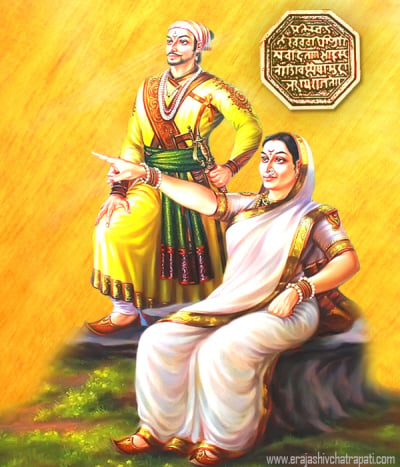



Komaram Bheem

Komaram Bheem (1901–1940) was a revolutionary tribal leader and Indian freedom fighter from the Gond community, known for his resistance against the Nizam of Hyderabad's oppressive rule and his advocacy for Adivasi rights. Below is a comprehensive overview of his life, contributions, and legacy, based on historical records and cultural references.
Early Life
- Birth and Background: Born on October 22, 1901, in Sankepalli, a village in the Adilabad district of present-day Telangana, India, Komaram Bheem belonged to the Gond tribe, a Scheduled Tribe. His family lived in the forested regions of the Hyderabad State, under the rule of the Nizam.
- Challenges: Growing up in a tribal community, Bheem witnessed the exploitation of Adivasis by feudal landlords, forest officials, and the Nizam’s administration. The Gonds faced land alienation, forced labor, and restrictions on accessing forest resources, which were their traditional livelihood.
Resistance and Rebellion
- Trigger for Revolt: The immediate spark for Bheem’s resistance was the killing of his father by forest officials over a land dispute. This incident, combined with systemic oppression, motivated Bheem to take up arms against the Nizam’s regime.
- Guerrilla Warfare: In the 1920s and 1930s, Bheem organized a guerrilla movement in the forests of Adilabad, mobilizing Gond and other tribal communities. He trained his followers in guerrilla tactics to resist the Nizam’s forces, who imposed heavy taxes and denied Adivasis their traditional rights to forest resources.
- Slogan of "Jal, Jangal, Zameen": Bheem is credited with popularizing the slogan "Jal, Jangal, Zameen" (Water, Forest, Land), which became a rallying cry for Adivasi rights, symbolizing their demand for autonomy over their natural resources. This slogan remains iconic in tribal movements across India.
- Alliance with Other Leaders: Bheem collaborated with other tribal leaders and drew inspiration from figures like Alluri Sitarama Raju, another tribal freedom fighter. His movement was primarily localized but aligned with broader anti-colonial sentiments.
Key Events
- Formation of a Tribal Army: Bheem formed a militia of Gond tribals, using traditional weapons like bows, arrows, and spears, supplemented by limited firearms. They conducted raids on Nizam’s officials and disrupted feudal operations in the region.
- Establishment of a Base: He operated from the forests of Jodeghat in Adilabad, turning it into a stronghold for his resistance. The area became a symbol of tribal defiance.
- Confrontation with the Nizam’s Forces: The Nizam’s administration, alarmed by Bheem’s growing influence, deployed police and military forces to crush the rebellion. Despite being outnumbered and underequipped, Bheem’s forces held out through strategic guerrilla warfare.
Death and Martyrdom
- Final Battle: On October 27, 1940, Komaram Bheem and his comrades were ambushed by the Nizam’s forces in the Jodeghat forests. Betrayed by an informer, Bheem was killed in the encounter at the age of 39.
- Legacy as a Martyr: His death marked him as a martyr for the Gond people and Adivasi communities. His sacrifice inspired future tribal movements and highlighted the struggles of indigenous populations against exploitation.
Legacy and Recognition
- Cultural Impact: Komaram Bheem’s life and struggle have been immortalized in tribal folklore, songs, and stories. He is revered as a hero among the Gond community and other Adivasi groups.
- Modern Recognition:
- In 2021, the Telangana government renamed the Jodeghat area as the Komaram Bheem Tribal Museum to honor his contributions.
- The 2022 Telugu film RRR, directed by S.S. Rajamouli, featured a fictionalized portrayal of Komaram Bheem, played by N.T. Rama Rao Jr., bringing his story to a global audience. While the film took creative liberties, it popularized his legacy.
- Tribal Rights Symbol: Bheem’s slogan "Jal, Jangal, Zameen" continues to resonate in movements advocating for Adivasi land rights and environmental justice in India.
Personal Traits and Ideology
- Leadership: Bheem was a charismatic leader who united diverse tribal groups under a common cause. His deep connection to Gond culture and traditions inspired loyalty among his followers.
- Ideology: He fought not only against the Nizam’s rule but also for the broader cause of tribal self-governance and rights to their ancestral lands and resources. His resistance was rooted in the preservation of Adivasi identity and autonomy.
Historical Context
- Hyderabad State under the Nizam: During Bheem’s time, Hyderabad was a princely state ruled by the Nizam, known for its feudal system and exploitation of tribal communities. The Nizam’s policies restricted Adivasi access to forests, imposed heavy taxes, and displaced tribes from their lands.
- Broader Freedom Struggle: While Bheem’s rebellion was localized, it coincided with India’s broader independence movement against British colonial rule. His fight against the Nizam indirectly challenged the colonial-feudal nexus.
Sources and Verification
- Historical accounts from Telangana’s tribal history and government records confirm Bheem’s role as a Gond leader and freedom fighter.
- The Telangana government’s initiatives, such as the Komaram Bheem Tribal Museum, and academic references to his life corroborate his contributions.
- Cultural depictions, including RRR and Gond folklore, align with documented history, though some artistic embellishments exist in popular media.
Komaram Bheem remains a towering figure in the history of India’s tribal resistance, symbolizing the fight for dignity, autonomy, and justice for marginalized communities.

Khushi Ram Arya
Khushi Ram Arya 'Silpakaar' (also known as खुशीराम आर्य 'शिल्पकार'; born December 14, 1886 – died May 5, 1971) was a pioneering Indian freedom fighter, social reformer, Arya Samaj leader, and one of the earliest Dalit activists in the Kumaon region of present-day Uttarakhand (then part of United Provinces under British rule).
Early Life and Background
Born in Dauliya village, Haldwani (Nainital district), he hailed from the Shilpkar community, a group of traditional artisans (such as blacksmiths, carpenters, and musicians) classified as Scheduled Caste (SC) in Uttarakhand. Shilpkars historically faced severe untouchability and social exclusion as Dalits. Influenced by the Arya Samaj movement, which promoted social equality and Vedic reforms, Khushi Ram adopted "Arya" as a suffix to his name—a common practice among many Shilpkars for upliftment and to assert dignity.
Contributions to Social Reform and Dalit Upliftment
Khushi Ram was a trailblazer in the early Dalit awakening in Kumaon. He campaigned vigorously against untouchability, child marriage, alcohol consumption, and other social evils prevalent in his community. Key highlights include:
- Founding and leading the Shilpkar Sudharini Sabha (later associated with broader Shilpkar organizations), which organized conventions like the Shilpkar Mahasabha in 1913 for Dalit upliftment.
- In 1913, he organized a sacred thread (janeu) ceremony in Sunkia village (Nainital), attended by prominent Arya Samaj and Congress leader Lala Lajpat Rai, symbolizing equality and integration into broader Hindu reform movements.
- Pioneering the Dola-Palki Movement: In 1920, he defied upper-caste restrictions by using a palanquin (dola-palki) in a marriage procession in Ramgarh village—the first such challenge, inspiring similar protests across the hills.
- Promoting education, self-respect, and unity among artisan castes (Lohar, Tamta, etc.), helping coin and popularize "Shilpkar" as a collective identity in the 1921 census.
His efforts aligned with Arya Samaj's anti-caste stance, leading many Shilpkars to adopt surnames like "Arya" or "Ram."
Role in the Freedom Struggle
Khushi Ram actively participated in India's independence movement, collaborating with leaders like Govind Ballabh Pant and Badri Dutt Pandey. He mobilized the oppressed communities against British rule while linking social reform with national freedom.
Political Career
- Elected as an MLA in the United Provinces during British India.
- Served as a member of the Uttar Pradesh Legislative Assembly from 1946 to 1967, representing the region post-independence.
Legacy
Remembered as the "Kumaon Kesari" (Lion of Kumaon) among Dalit warriors, Khushi Ram's work laid the foundation for Scheduled Caste assertion in Uttarakhand. His birthday is commemorated by Shilpkar organizations, with events honoring his role in social justice. A park in Haldwani (Tikonia) is named Khushi Ram Park in his memory.



 Depiction of Kanaklata’s death at Kanaklata Udyan, Tezpur|Wikimedia Commons
Depiction of Kanaklata’s death at Kanaklata Udyan, Tezpur|Wikimedia Commons photo by google image
photo by google image photo by -google image
photo by -google imageLaxman Naik

Early Life and Background
Laxman Naik was born into a poor Bhumia tribal family in the thickly forested and hilly region of Koraput agency (then under Madras Presidency). Like most adivasis of the area, his family depended on shifting cultivation (podu), minor forest produce, and small-scale agriculture. He received no formal education but was respected in his village for his honesty, courage, and leadership qualities. By the 1930s he had emerged as a natural leader of the local Bhumia and other tribal communities.
Entry into Freedom Struggle
- 1930s: Influenced by Congress workers who visited Koraput agency area.
- 1937–38: Actively participated in the Congress campaign against the oppressive forest laws of the British and the Jeypore Maharaja.
- 1941–42: Became a close associate of senior Congress leaders of Koraput such as Sadashiva Tripathy, Radhakrushna Biswasray, and Biswanath Pattnaik.
Role in Quit India Movement (1942)
When Mahatma Gandhi gave the “Do or Die” call on 8 August 1942, Koraput was one of the few districts where the movement turned into a full-scale tribal rebellion, largely because of Laxman Naik.
Key actions led by Laxman Naik:
- Mobilised thousands of tribal peasants in Mathili, Tentuliguma, and Papadahandi areas.
- Organised complete boycott of forest officials and refusal to pay land revenue and forest taxes.
- Led processions carrying the tricolour and shouting “British Raj Murdabad”.
- Stopped forced labour (bethi/begari) and collection of minor forest produce for the colonial government.
- On 21 August 1942, a massive rally of over 5,000 adivasis was organised at Mathili.
The Mathili Police Firing & Martyrdom (21–24 August 1942)
- 21 August 1942: Laxman Naik led a procession to Mathili police station to submit a memorandum.
- British-armed police opened fire without warning, killing 42 tribals on the spot (including women and children) and injuring over 400. This is known as the Mathili Massacre.
- Laxman Naik was arrested the same day.
- A false case was foisted on him: he was accused of murdering a forest guard named G. Ramayya on 24 August 1942 (three days after his arrest, when he was already in custody).
- The trial was a complete sham. British officials pressured witnesses, and the Sessions Court sentenced him to death on 13 November 1942.
- The Madras High Court confirmed the death sentence on 16 March 1943.
- He was hanged inside Berhampur Circle Jail on 29 March 1943.
Legacy & Recognition
- The Government of India released a commemorative postage stamp in his honour in 2007.
- Laxman Naik College, Laxman Naik Stadium, and several schools and roads in Koraput and Nabarangpur districts are named after him.
- 29 March is observed as Shaheed Diwas in southern Odisha.
- He is officially recognised as one of the 12 major martyrs of Odisha in the freedom struggle.
- His statue stands at Mathili Chowk and at the Odisha Legislative Assembly premises.
Laxman Naik remains the most powerful symbol of tribal resistance against British colonialism in eastern India and is often called the “Birsa Munda of Odisha”.
 pronunciation (help·info)) (born Lakshmi Swaminathan) (24 October 1914 – 23 July 2012) was a revolutionary of the Indian independence movement, an officer of the Indian National Army, and the Minister of Women's Affairs in the Azad Hind government. Sahgal is commonly referred to in India as Captain Lakshmi, a reference to her rank when taken prisoner in Burma during the Second World War.
pronunciation (help·info)) (born Lakshmi Swaminathan) (24 October 1914 – 23 July 2012) was a revolutionary of the Indian independence movement, an officer of the Indian National Army, and the Minister of Women's Affairs in the Azad Hind government. Sahgal is commonly referred to in India as Captain Lakshmi, a reference to her rank when taken prisoner in Burma during the Second World War.Matadeen Bhangi
Matadeen Bhangi (also spelled Matadin Bhangi or Matadin Valmiki in some sources, reflecting his Valmiki community affiliation) was a pioneering Indian freedom fighter from the marginalized Dalit (Valmiki/Bhangi) community. Born into a family of sanitation workers, he became a laborer in the British East India Company's cartridge manufacturing unit at the Barrackpore Cantonment (near modern-day Kolkata, West Bengal, though some accounts link his roots to Meerut, Uttar Pradesh). Despite facing severe caste-based discrimination, Matadeen played a pivotal role in igniting the spark of the 1857 Revolt—India's First War of Independence—by challenging both colonial exploitation and the hypocrisy of caste hierarchies within the Indian ranks. His story highlights the often-overlooked contributions of Dalit communities to the freedom struggle, where he is revered as the "father" or "architect" of the uprising that preceded Mangal Pandey's famous act.
Early Life and Background
- Birth and Family: Matadeen was born on November 29, 1828 (though some commemorations cite 1825), into a Valmiki (Bhangi) family in Meerut, Uttar Pradesh. The Bhangi community, traditionally engaged in sanitation and manual scavenging, was deemed "untouchable" under the rigid caste system, denying them access to education, land, or dignified work. His family migrated for livelihood, eventually settling in areas under British control. Due to caste barriers, Matadeen remained illiterate but developed a sharp awareness of social injustices through daily hardships.
- Occupation: He worked as a low-wage laborer (often described as a "sepoy" or camp worker) in the British military's cartridge factory at Barrackpore. His role involved handling gunpowder and cartridges, exposing him to the infamous "greased cartridges"—rumored to be coated with cow and pig fat, offending Hindu and Muslim soldiers' religious sentiments. This proximity to the sepoys (Indian soldiers) made him a witness to growing discontent against British rule.
Role in the 1857 Revolt: Sowing the Seeds of Rebellion
Matadeen's heroism unfolded in early 1857, months before the revolt's official outbreak on May 10, 1857, in Meerut. He is credited with awakening the sepoys to the dual threats of colonial racism and internal caste prejudice, effectively laying the groundwork for the mutiny.
- The Confrontation with Mangal Pandey: In a defining incident in February or March 1857, a parched and exhausted Matadeen approached Mangal Pandey (a high-caste Brahmin sepoy) for water from his lota (vessel). Pandey refused, citing caste purity: "Arey Bhangi, mera lota chhukar apvitra kar dega kya?" (Hey scavenger, will you defile my vessel by touching it?). Undeterred, Matadeen retorted with biting sarcasm: "Pandit, tumhari panditai us waqt kahan chali jati hai jab tum aur tumhare jaise chutiyadhari [Brahmins] gai aur suar ki charbi lage cartridges ko muh se kaatkar bandookon mein bharte ho? Kya tab jaat-paat ya dharm bhool jate ho? [Pandit, where does your priestly pride go when you and your kind bite into cartridges greased with cow and pig fat to load your guns? Do you forget caste and religion then?]" This exchange exposed the hypocrisy of upper-caste sepoys who enforced untouchability but compromised their "purity" for British service. The words spread like wildfire through the cantonment, radicalizing soldiers and fueling rumors about the cartridges.
- Inspiring the Spark: Matadeen's dialogue is seen as the "first spark" that ignited the revolt. It directly influenced Mangal Pandey's rebellion on March 29, 1857, when he attacked British officers at Barrackpore, leading to his execution on April 8. Dalit narratives emphasize that without Matadeen's intervention, the sepoy mutiny might not have escalated. He is described as the "janak" (father) or "sutradhar" (architect) of the 1857 uprising, with British records allegedly identifying him as the primary instigator.
- Broader Impact: His actions symbolized resistance against both imperialism and Brahmanical oppression, uniting diverse castes under anti-colonial fervor. The revolt spread from Barrackpore to Meerut, Delhi, and beyond, involving figures like Rani Lakshmibai and Bahadur Shah Zafar.
Martyrdom and Legacy
- Death: Matadeen was arrested shortly after the Barrackpore incident as the British cracked down on agitators. Tried in a hasty court-martial, he was hanged on April 8, 1857—making him one of the first, if not the first, martyrs of the revolt. His execution predated Pandey's by mere hours or days, underscoring his foundational role.
- Historical Erasure: Mainstream histories, often dominated by upper-caste narratives, credit Mangal Pandey as the revolt's hero, marginalizing Matadeen. Dalit scholars and activists argue this reflects caste bias, as British records and oral traditions (especially in Valmiki communities) affirm his primacy. He is invoked in Ambedkarite and Bahujan discourses as proof of Dalit agency in nation-building.
Commemoration and Modern Relevance
- Annual Tributes: His birth anniversary (November 29) and martyrdom day (April 8) are marked by Valmiki and Dalit organizations in Bihar (e.g., Bihar Sharif), Uttar Pradesh (Meerut), Jharkhand (Deoghar), and Haryana (Bhiwani) with seminars, floral tributes, and discussions on his "krittva" (deeds). In 2023, his 195th birth anniversary was celebrated by groups like Sाहित्यिक मंडली शंखनाद.
- Cultural Impact: Matadeen's story inspires poetry, blogs, and social media campaigns (#Matadin_Valmiki, #1857_First_War_Of_Independence). He is portrayed as a symbol of intersectional resistance—against colonialism, casteism, and untouchability. Recent X posts (e.g., from 2025) urge reclaiming his legacy from "Valmiki" sanitization, insisting on "Bhangi" to honor his roots.
- Why He Matters Today: In an era of caste debates, Matadeen's life underscores Dalit contributions to independence, challenging narratives that erase subaltern voices. As one tribute notes, "Matadeen Bhangi nahi hote to 1857 ka gadar itihas ke panno mein darj na hota" (Without Matadeen Bhangi, the 1857 revolt wouldn't be etched in history).
Matadeen Bhangi's courage reminds us that India's freedom was forged not just by elites but by the oppressed who dared to question both empire and inequality. Shat shat naman (salutes) to this forgotten revolutionary.
From their inception trade unions in Madras were drawn into long, and often bloody, confrontations with the management. According to the noted economist Amiya Kumar Bagchi,
Madras had led the trade union movement with the organisation of workers into Madras Labour Union, but the movement could not flourish in a region with abundant labour, slow industrial growth and employees who were determined not to make any concession to labour organisations.
Buckingham & Carnatic Mills workers' strike is a case in point. The management of the Mills did not even concede workers right to combine. The union was banned by the British authorities. A flash point occurred when a British manager threatened workers with a gun, which was snatched by workers and started firing back. The police came and opened fire killing two young workers.
Singaravelar, Thiru Vi Ka, and other leaders called for a strike on 21 June 1921. The management retaliated by instigating a caste war through recruitment of workers from 'low' castes to fill the strikers' vacancies. The strike turned into a caste war between two warring groups. On 29 August 1921, police firing near the Mills' premises in Perambur, near Madras, killed seven people. When their funeral procession was taken out some miscreants threw stones, leading to another round of caste violence. Two more firings – on 19 September and 15 October 1921 followed. After six months, the strike came to an end, failing to meet any of its objectives. From then Singaravelar started seeking political backing for the working class movement.
The Tashkent Party (ie. CPI) and the Executive Committee of the Communist International tried to build contacts independently and through me with communist group in Calcutta led by Muzaffar Ahmed and the group in Madras led by M. Singaravelu.
Abani Mukherji, a close associate of M.N. Roy, smuggled himself to India from Moscow via Berlin in December 1922 and surreptitiously met local communist leaders. After meeting Dange at the Gaya session of the Congress in December 1922, and meeting Bengal communist groups, Mukherji moved to Madras and met Singaravelar. Mukherji helped him with his efforts to form Hindustan Labour Kishan Party and also to draw up its manifesto. Earlier Singaravelar had met Dange at the Gaya session of the Congress.
Singaravelar and the Congress
When Gandhi launched non-cooperation movement starting from September 1920 to February 1922 Singaravelar accepted Gandhi's leadership and became one of the influential leaders of the Presidency Congress Party. He set fire to his lawyer's gown at a public meeting in May 1921 as symbolic of boycotting the British courts. In May 1921, he wrote a letter to Mahatma Gandhi explaining his action, "I have given up my profession as a lawyer today. I shall follow you as you strive for the people of this country."
An important event of the period was the visit of Prince of Wales and his consort to India. When they came to Madras, Singaravelar organised the boycott of the delegation through an unprecedented hartal or complete shutdown of shops and establishments of the town. The shutdown was complete, but there were instances of compulsion.
Gandhi in an article in Young India, dated 9 February 1922 criticized the hartal and Singaravelar for not imbibing the true spirit of non-cooperation movement. He quoted a letter from one of his disciples, Dr. Rajan:
Just two days ago, Mr. Singaravelu Chettiar, president Madras District
Congress Council, held a public meeting on the Madras beach. The first resolution congratulated the citizens of Madras on their successful hartal and
the second resolution condemned the excesses committed that day.
I wired to Mr. Singaravelu not to have this ugly meeting but evidently no notice seems to have been taken of it
Gandhi's comment on the passage was,
The confession, therefore, that Dr. Rajan has made is an
invigorating process. It strengthens him and the cause for which he stands. Non-co-operation is a vicious and corrupt doctrine, truly an "ugly" word, if it does not mean down-right self-purification. Stubborn and implacable resistance against internal corruption is
enough resistance against the Government.
Singaravelar in Gaya congress convention
When the Indian National Congress met in Gaya, in 1922,Singaravelar participated, seeing himself as a representative of workers. He spoke in favour of labour legislation and felt that the labour movement in India must be a part of the congress movement. M. N. Roy praised him for calling himself a communist, in Vanguard dated 1 March 1923
That Singaravelu participated in the Gaya Congress Meeting in which people with different ideas took part will be considered a historic event. When many leaders were afraid that their honour and respect as important leaders will be lost and young men were afraid of the steps that the government would take, this sixty-year-old grey-haired elder called him a communist". It is impossible not to praise him.
The theme of his speech was that "it is necessary approach the workers personally and make Trade Unions a part of the Congress." Following his speech, the Gaya meeting adopted the Labor Resolution that said,
It is the opinion of this conference that all Indian Labourers should be united. To safeguard their rights and prevent their exploitation and for equal distribution of wealth among all, the various labour and kisan unions should be unified and for this purpose, a committee of six has been constituted.
The first May Day in India
On 1 May 1923, Singaravelar founded the Labour Kishan Party of Hindusthan(a party of workers and peasants) in Madras. The foundation ceremony was purposefully kept on the May Day; and for the first time in India, under the auspices of the newly formed party, the day was observed as International Workers' Day. On that occasion, again for the first time the red flag was used in India. Singaravelar made arrangements to celebrate the May Day in two places in the One meeting was held at the beach opposite to the Madras High Court; the other was held at the Triplicane beach. The Hindu newspaper, published from Madras reported,
The Labour Kisan party has introduced May Day celebrations in Chennai. Comrade Singaravelar presided over the meeting. A resolution was passed stating that the government should declare May Day as a holiday. The president of the party explained the non-violent principles of the party. There was a request for financial aid. It was emphasised that workers of the world must unite to achieve independence.
Labour Kishan Party of Hindusthan
Labour Kishan Party of Hindusthan was a part of a larger, but not inter-connected, moves by various Indian communist groups to find a mass-based political platform. Dange, for instance, wrote to M. N. Roy of the émigré Communist Party of India and a leader of the Comintern, regarding his desire to start a Socialist Labour Party of India. In reply, Roy explained the relation between émigré Communist Party of India and 'mass party of revolutionary nationalist struggle',and further said that "each of the Indian "centres" produced a separate scheme and it was some time before they could agree to combine." Roy was probably referring to Singaravelar's proposal to start a similar party. Same year Dange wrote in his journal Socialist that all his activities were now a part of the Labour Kishan Party of Hindusthan and he asked for opening up of its branches everywhere.
Singaravelar announced that it would join the Indian National Congress and would strive to function as the labour and farmer wing of that party. Labour Kishan Party was a precursor to Workers and Peasants Party of 1925 that would function within the Congress, as a left wing platform for the same. In the manifesto of the party Singaravelar described Congress 'our chief political organ, appear to define "nation" by referring to propertied class
In December 1923 Singaravelar started a fortnightly journal called The Labour Kisan Gazette. Singaravelar also started the Tamil Weekly Thozhilalar in which he wrote about the working class movements spreading in various parts of the world during the early part of the 1920s.
In 1925, Singaravelar was elected as a member of the Madras Corporation. On Singaravelar's initiative first ever mid-day meal scheme was introduced in Madras for providing cooked meals to children in corporation schools.
Formation of Communist Party of India
In the Gaya congress session of 1922, the president of the session, C. R. Das moved a resolution for 'Council-Entry programme,' that is, 'Non-Cooperation from within the Councils.' He however met with vehement opposition from the Mahatma and the 'no-changers'. C. Rajagopalachari led the Council-Entry opposition. The resolution lost. M. N. Roy wrote,
It has been proved at Gaya, if proof were still needed, that the National. struggle can be led, neither by the reactionary petty-bourgeoisie acting through the orthodox “No-Changers” under the divine guidance of St. Rajagopal, nor by the radical intellectuals desirous of harking back to the folds of Constitutionalism, under the guise of loyalty to the memory of Tilak. Between these two centripetal forces, Bengal's “Sentimental Tommy”(C.R. Das) croaked. Before he could wreck the Councils, the Councils wrecked him. What is to be done? A new party must be organised.
Early communists like Dange, Singaravelar, M. N. Roy's associate, Abani Mukherji, a deportee from Fiji and a lawyer Manilal Doctor were present at the Gaya session and saw Gandhi's support to the 'no-changers.' Efforts to form a unified platform intensified. On 29 January 1923, Dange wrote to Singaravelar that,
You perhaps know that Roy wants to hold a conference of Indian Communists in Berlin. I think it is a mad venture Indians to go hunting Communism in European Conference, whatever has to be done must be done in India.
Kanpur Bolshevik Conspiracy case
In January 1924 the Government of India compiled a brief on activities of communists in India. The Government Counsel recommended prosecution against the first eight in the list, namely, M. N. Roy, Muzaffar Ahmed, Shaukat Usmani Gulam Hussain, S. A. Dange, Singaravelu, Ramcharan Lal Sharma and Nalini Gupta. But no recommendations were made against S. D. Hussain, M. P. T. Velayudham (an associate of Singaravelar), Sampurnand, Manilal Doctor and Satya Bhakta.[22] The report was submitted to the Governor General and on further legal scrutiny some lacunae were found. The scope of the case was revised to bring in a conspiracy angle: that the Third Communist International had appointed Roy as its agent and had instructed him to establish a communist party with the help of Shaukat Usmani, S. A. Dange, Singaravelu, Gulam Hussain and Muzaffar Ahmed.
As the charges were getting framed Dange and Singaravelar were arrested under Regulation III of 1918 that allowed detention without trial in August 1923. Subsequently, Muzaffar Ahmed (Calcutta), Shaukat Usmani (Kanpur) and Gulam Hussain (Lahore) were arrested. On 20 December 1923 Nalini Gupta was also arrested under the same regulation. Roy evaded arrest since he was abroad. Ramcharan Lal Sharma was not arrested because he had migrated to the French territory of Pondicherry due to police harassment.
On 17 March 1924 cases were framed against the accused in what was called the Cawnpore (now spelt Kanpur) Bolshevik Conspiracy case. The specific charge was that they as communists were seeking "to deprive the King Emperor of his sovereignty of British India, by complete separation of India from imperialistic Britain by a violent revolution." Out of the six accused in custody only four—S. A. Dange, Shaukat Usmani, Muzaffar Ahmed and Nalini Gupta—were produced. Singaravelar, now 64, was confined to bed due to illness. He was later released on bail. Gulam Hussain was pardoned after he confessed that he had received money in Kabul.
The case attracted interest of the people towards Comintern plan to bring about violent revolution in India. Communist trials had taken place in India, in frontier towns like Peshawar where Russian trained muhajir communists were put on trial. "But no case had attracted public gaze like the Kanpur case. Pages of newspapers daily splashed sensational communist plans and people for the first time learned such a large scale about communism and its doctrines and the aims of the Communist International in India." Names of accused like S.A. Dange, Muzaffar Ahmed, Shaukat Usmani and Singaravelu Chettiar came to be recognised across the country.
First communist conference
In 1924, shortly after the Kanpur Conspiracy Case, Satyabhakta, a Congress worker in the United Provinces had decided to organise a 'legal' Communist Party, that is, a party that would not attract treasonable charges such as in the Kanpur case. Initially no significant notice was taken of Satyabhakta's venture, but when Nalini Gupta was released from the jail (July 1925) and later when Muzaffar Ahmed was released in September on grounds of poor health, their interest fell on Satyabhakta's party for organizational work—in the absence of any other structure. Satyabhakta then announced a communist conference in DeMarxistcember 1925, at Kanpur, to be concurrently held with Indian National Congress convention. His idea was to demarcate himself from the existing communist groups. N. N. Roy was skeptical when he wrote in the October 1925 issue of his magazine,Masses of India that
It is premature to say that what shape this 'Communist Party' will ultimately assume and how far it is going to be Communist in Programme and actions.
The conference was held on 25–26 December 1925. Singaravelu Chettiar was elected to preside over the session. The meeting adopted a resolution for the formation of the Communist Party of India. According to the Constitution, the object of the Party was, to quote,
establishment of workers' and peasants' republic based on socialisation of means of production and distribution, by the liberation of India from British imperialist domination.
The British Government's extreme hostility towards communists, made them to decide not to openly function as a communist party; instead, they chose a more open and non-federated platform, under the name the Workers and Peasants Parties.
Singaravelar and railway employees' strike
Employees of various railway systems in India, the North-Western Railway, Bengal Nagpur Railway, and The East Indian Railway went on to strike demanding better working conditions and for better treatment by the management.Singaravelar went on a tour to north India to extend his support to the striking railway employees. In February 1927 he reached Bhopal and met the striking workers. In Howrah and Bengal 30,000 workers were on strike. Singaravelar along with a group of workers from Madras State also took part in the strike.
South Indian Railway Strike
After returning from his North Indian tour Singaravelar was drawn into another railway employees' strike. In 1927, the workers of the South Indian Railways were resisting measures by the management to retrench them through a fresh assessment of their skills. Also the management had decided relocating employees working in different railway workshops to one near Tiruchirapalli(Trichy). The workers demanded the withdrawal of both these measures. When the management refused to accede to their demands, the workers went on strike from 19 July 1928. All the railway employees, irrespective of their seniority, joined the strike. from 21 July 1928 the trains were stilled.
The strike eventually failed. Singaravelar along with a prominent leader of the strike, Sakkarai Chettiar, and a number of employees were arrested.Singaravelar was sentenced the ten years imprisonment, which was reduced to 18 months on appeal.
Singaravelar and the self-respect movement

The statue of Singaravelu Chettiar, on the side of a busy street in Puducherry.
Singaravelar felt that E. V. Ramasamy's self-respect movement (that advocated for upliftment of intermediate castes and opposing upper castes viz. the brahmins) and the communist movement should work together to save the Tamil labour forces from the clutches of both religious and economic exploiters. This appealed to Naicker and he published Singaravelar's contributions in his magazine,Kudiyarasu. In 1931, Naicker undertook a journey to Soviet Russia and other European countries. On his return, he invited Singaravelar to Erode for discussions. Naicker convened a meeting of the movement at his residence on 28–29 December 1932, and drew out what was called the Erode Plan. Naicker had taken a decision to support pro-British Justice Party and to oppose the Indian National Congress in the elections that followed. Unlike Congress, the Justice Party had agreed to implement a policy of appointments to government jobs in proportion to caste ratios, as demanded by the leaders of the self-respect movement.
Significance of Singaravelar's association with the self-respect movement is brought out by Karthigesu Sivathamby, a prominent Tamil scholar from Sri Lanka who has closely studied the social movements in Madras province,
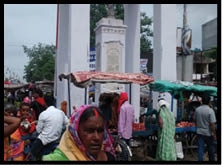




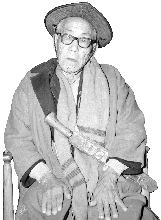


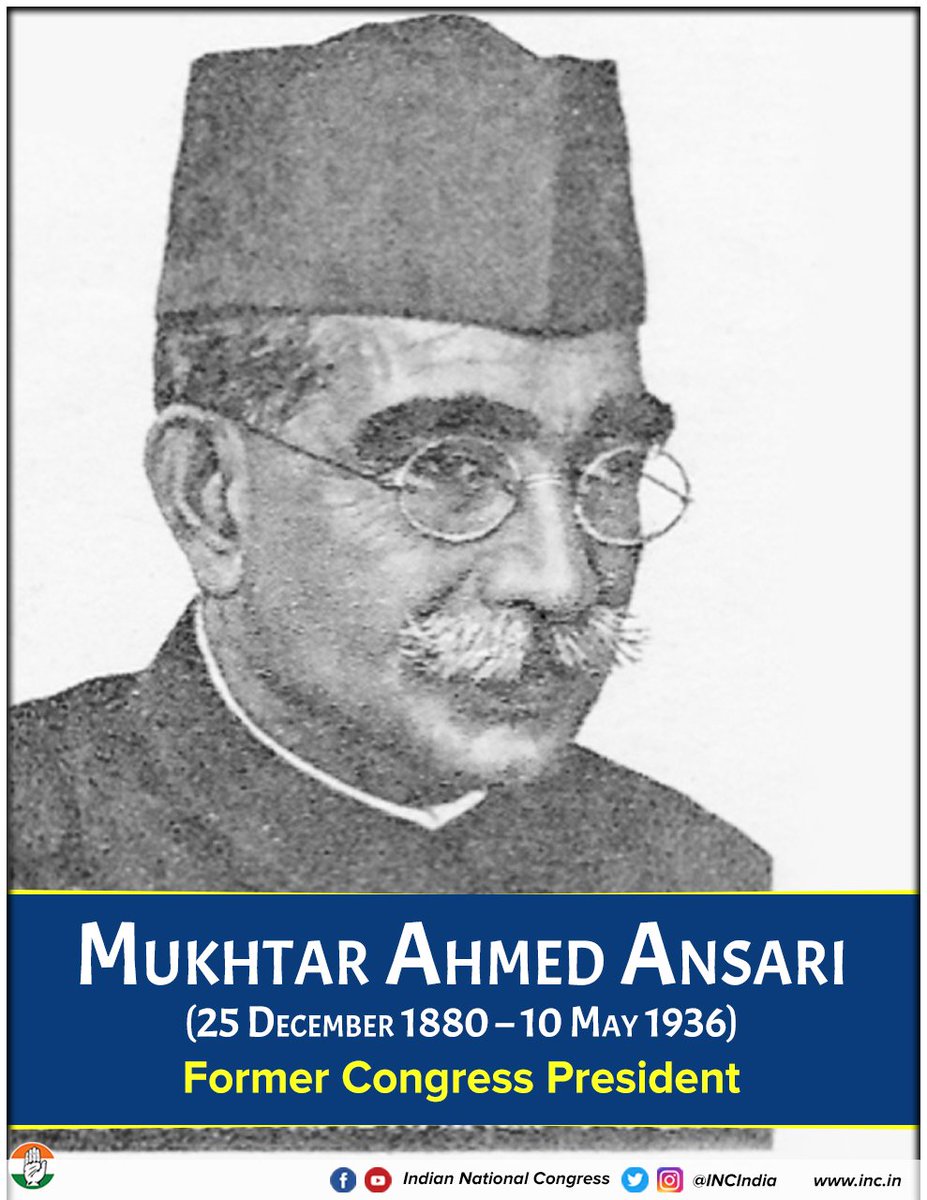
 Madan Lal Dhingra Biography in Hindi
Madan Lal Dhingra Biography in HindiMunshi Hariprasad Tamta
Munshi Hariprasad Tamta, born on August 26, 1887, in Almora, Uttarakhand, was a pioneering social reformer and activist who fought against caste-based discrimination and uplifted the marginalized Dalit communities in the Kumaon region. Born to Govindi Devi and Govind Prasad, a copper craftsman and trader, Hariprasad belonged to a relatively prosperous but socially oppressed family. He lost his father early and was raised by his maternal uncle, Shrikrishna Tamta, a prominent social worker. Despite facing severe caste barriers, he pursued education up to middle school, mastering Urdu, Persian, Arabic, and English, earning the title "Munshi." His early experiences of untouchability, notably being denied a seat at a 1911 coronation event for King George V in Almora, fueled his lifelong resolve to eradicate caste-based discrimination.Social Reforms and the Shilpkar Identity
At the time, Dalits in Uttarakhand faced extreme poverty, illiteracy, superstition, and derogatory labels like "Doom." Hariprasad sought to unify and dignify these communities by introducing the term "Shilpkar" (artisan), reflecting their skilled craftsmanship. After five years of relentless advocacy, he secured official recognition for the term "Shilpkar" in 1927, replacing offensive labels in government records. In 1905, he founded the Tamta Sudhar Sabha, which he later renamed the Kumaon Shilpkar Sabha in 1914, serving as its president until his death. The organization aimed to promote education, cottage industries, health awareness, and social equality while eradicating child marriage and untouchability. Through the Shilpkar Sabha, he established 150 primary and adult education schools to foster literacy among Dalits.
Land Reforms and Economic Empowerment
Hariprasad’s efforts led to significant land reforms during the 1930s–1940s, with the British government distributing 30,000 acres of agricultural land to landless Shilpkars, resulting in settlements like Harinagar, Narsingh Danda, and Haripur. These initiatives provided economic stability and reduced dependence on exploitative upper-caste landlords. His advocacy also challenged the stereotype that Dalits were unfit for military service, convincing British authorities that a community skilled in crafting weapons could wield them. By 1941, his efforts enabled the recruitment of 5,000 Shilpkars into pioneer battalions of the Indian Army, boosting their confidence and economic prospects. In recognition, the British Army honored him with a Guard of Honour in Lucknow in 1942, a rare distinction for a civilian in colonial India.
Political and Media Contributions
Hariprasad was a key political figure, serving as vice-president of the All India Depressed Classes Association’s Uttar Pradesh branch from 1934 to 1940. In 1937, he was elected unopposed to the United Provinces Legislative Assembly from Gonda district, showcasing his widespread popularity. He also served as chairman of the Almora Municipality from 1942 to 1945, proving his administrative prowess. In 1934, he launched the Hindi weekly Samta, which awakened political and social consciousness among Shilpkars. His niece, Lakshmi Devi Tamta, became Uttarakhand’s first Dalit woman graduate and editor of Samta, marking a milestone for women in journalism.
Legacy
In 1935, the British government conferred the title of Raybahadur on Hariprasad for his social contributions. Often called the "Ambedkar of Uttarakhand," he supported Dr. B.R. Ambedkar’s Poona Pact in 1931 by sending a telegram to the Round Table Conference in London. Beyond social reform, he ventured into business, establishing the Hill Motors Transport Company in 1920, the first to operate vehicles between Almora, Nainital, and Haldwani, and opened a driving training center in Haldwani.
Hariprasad passed away on February 23, 1960, in Allahabad, leaving behind no children after losing his wife, Parvati Devi, early in life. His death was a significant loss to the Shilpkar community, but his legacy endures through annual commemorations, statues in Almora and Haldwani, and settlements named after him. The Kumaon Shilpkar Sabha and his initiatives continue to inspire Dalit movements in Uttarakhand, cementing his role as a revolutionary who brought dignity, education, and opportunity to the oppressed.
Nathuram Valmiki

Nathuram Valmiki (also spelled Nathu Ram Valmiki or Nathuram Balmiki; c. 1890s–1970s) was an Indian independence activist and revolutionary, best known for his daring role in the Chittagong Armoury Raid of 1930—one of the most audacious assaults on British colonial authority during the freedom struggle. Born into the Valmiki community (a Scheduled Caste group traditionally associated with sanitation and scavenging work, devotees of the sage Valmiki, author of the Ramayana), Nathuram's life exemplifies the intersection of caste oppression, anti-colonial resistance, and Dalit assertion. Though often overshadowed by leaders like Surya Sen and Ganesh Ghosh in historical narratives, his contributions highlight the participation of marginalized communities in India's armed revolutionary movement.
Early Life and Background
- Birth and Family: Nathuram was born around the late 1890s in Chittagong (now in Bangladesh, then part of undivided Bengal Presidency, British India). Exact birth records are scarce, as was common for lower-caste families. He hailed from a poor Valmiki (Balmiki) household—his father worked as a municipal sweeper, and the family lived in the fringes of Chittagong's urban underclass. The Valmiki community, numbering in the millions across Bengal and Punjab, faced severe untouchability, economic exclusion, and social stigma, which fueled Nathuram's early resentment against both British rulers and the caste-ridden Indian society.
- Awakening: Growing up amid the Swadeshi Movement (1905–1911) and witnessing Jallianwala Bagh (1919), Nathuram was radicalized young. He received minimal formal education, working odd jobs like scavenging and laboring at the Chittagong port, where he encountered revolutionary pamphlets from the Hindustan Republican Association (HRA) and later the Hindustan Socialist Republican Association (HSRA).
Entry into the Freedom Struggle
Nathuram joined the revolutionary fold in the mid-1920s, inspired by Masterda Surya Sen, the schoolteacher-turned-guerrilla leader who formed the Chittagong Branch of the Indian Republican Army (IRA) in 1924. Sen's group, comprising students, workers, and peasants, aimed to replicate the Irish Easter Rising through armed uprisings.
- Ideological Shift: Unlike many upper-caste revolutionaries, Nathuram's motivation blended nationalism with anti-caste sentiment. He viewed British rule as an extension of Brahminical hierarchies and sought dignity through armed equality. Sen, a Marxist-influenced leader, welcomed Dalit recruits, fostering a rare inclusive space in the otherwise caste-segregated independence movement.
- Training and Preparation: Nathuram trained in bomb-making, rifle handling, and guerrilla tactics in secret camps near Chittagong. He participated in early actions like disrupting British rail lines and collecting arms from sympathizers.
Role in the Chittagong Armoury Raid (April 18, 1930)
The raid was a meticulously planned operation to seize weapons from the British Armoury and Auxiliary Force Institute, declare a provisional revolutionary government, and spark a peasant uprising. Nathuram, then in his early 30s, played a pivotal frontline role:
- Assignment: As part of a 65-member squad (mostly young locals), he was in the second striking group led by Ganesh Ghosh and Ambika Chakravarty. Disguised as revolutionaries, they targeted the armoury at Jalalabad Hill.
- The Action: At dawn, the group overpowered guards, looted 600 rifles, 42,000 rounds of ammunition, and grenades. Nathuram personally helped secure the magazine and hoist the tricolor at the site, symbolizing the short-lived "Chittagong Republic." Simultaneously, another unit under Sen raided the European Club.
- Aftermath: British reinforcements arrived, leading to a fierce gun battle. Nathuram escaped into the hills with survivors, joining Sen's jungle warfare phase. The raid inspired nationwide fervor, with songs like "Go Forward" becoming anthems.
For months, the group evaded capture in the Chittagong Hill Tracts, conducting hit-and-run attacks. Nathuram's knowledge of local terrain—gained from his laborer days—proved invaluable for foraging and ambushes.
Arrest, Trial, and Imprisonment
- Capture: On May 17, 1930, during a raid on Pahartali Police Station, British forces encircled the revolutionaries. Nathuram was among 12 arrested after a prolonged firefight; Sen escaped but was later caught.
- Trial: In the Chittagong Armoury Raid Case (1930–1932), Nathuram faced the Alipore Sessions Court and Calcutta High Court. He defiantly pleaded "not guilty" but justified the violence as "necessary for freedom." Charged with waging war against the King, he was sentenced to life imprisonment (kala pani) and transported to the Cellular Jail in the Andaman Islands.
- Cellular Jail Ordeal: From 1932 to 1945, Nathuram endured brutal conditions—solitary confinement, forced labor (oil grinding, rope-making), and torture. Fellow inmates like Batukeshwar Dutt and Ganesh Ghosh noted his resilience; he organized secret literacy classes for Dalit prisoners, teaching Ramayana verses to counter caste slurs.
Post-Independence Life and Legacy
- Release and Return: Freed in 1945 amid World War II pressures, Nathuram returned to a partitioned India. Post-1947, he settled in Tripura (then part of East Pakistan, later India), working as a government peon while advocating for Valmiki rights.
- Later Activism: In the 1950s–1960s, he joined the Scheduled Castes Federation (founded by Dr. B.R. Ambedkar), campaigning for land reforms and anti-discrimination laws. He wrote memoirs (unpublished during his lifetime) and spoke at Ramlila events, linking Valmiki's epic to revolutionary ideals.
- Death: Nathuram passed away in the early 1970s (exact date unrecorded) in obscurity, succumbing to ailments from jail injuries. He left behind a family that continues to preserve his story through oral histories.
Significance and Recognition
Nathuram Valmiki represents the Dalit dimension of India's armed struggle—a narrative often erased in mainstream histories dominated by Gandhi, Nehru, or upper-caste revolutionaries. His participation challenged the Congress's non-violent monopoly and highlighted revolutionary inclusivity under Sen.
- Cultural Impact: Featured in films like Khelein Hum Jee Jaan Sey (2010, portraying a fictionalized version) and books such as Do and Die by Manini Chatterjee. The 2023 biopic Chittagong Armoury Raid includes his character.
- Modern Relevance: In Dalit movements, he's invoked alongside figures like Uda Devi (1857 Revolt) as proof of subaltern agency. Annual commemorations in Chittagong (now Bangladesh) and Tripura honor him.
Nathuram Valmiki's life underscores that freedom fights were waged not just by elites but by the "untouchables" who bore the empire's heaviest yoke. His story reminds us: in the arsenal of independence, every rifle counted—and so did every voice from the shadows.

Owen Jones (born August 8, 1984) is a prominent British left-wing journalist, author, political commentator, and activist, widely recognized for his advocacy on issues of social justice, workers' rights, anti-establishment critique, and progressive causes. While not a "freedom fighter" in the traditional sense of armed revolutionaries or anti-colonial leaders (such as those in India's independence movement), Jones embodies a modern form of activism through his writing, public speaking, and mobilization against inequality, austerity, and authoritarianism. He has been a vocal supporter of movements like Black Lives Matter, Palestinian rights, and anti-racism campaigns, often framing his work as a fight for democratic freedoms and economic equity. Below is a comprehensive overview of his life, career, activism, and influence.
Early Life
- Birth and Family: Born in Sheffield, South Yorkshire, England, Jones grew up in Stockport, Greater Manchester. He comes from a politically active, working-class background with strong leftist roots. His mother, Ruth Aylett, is a British computer scientist and academic, while his father, Robert Jones, was a trade union organizer and Marxist historian who worked with the National Union of Rail, Maritime and Transport Workers (RMT). This environment instilled in him early exposure to socialist ideas, labor struggles, and anti-capitalist thought.
- Education: Jones attended Bramhall High School and Ridge Danyers Sixth Form College in Stockport. He then studied History at University College, Oxford, graduating in 2005 with a BA. At Oxford, he became involved in student politics, serving as president of the Oxford University Labour Club and engaging in debates on class, inequality, and international solidarity.
- Influences: His formative years were shaped by family discussions on trade unionism, the miners' strike of 1984–85 (which he witnessed as a child), and leftist thinkers like Noam Chomsky and Karl Marx. Jones has cited his Welsh grandfather, a miner, as a key inspiration for his focus on working-class narratives.
Career and Writing
Jones began his professional life as a parliamentary researcher for Labour MP John Trickett before transitioning to journalism. His career exploded with his debut book, establishing him as a sharp critic of British society and politics.
- Journalism:
- He started as a columnist for The Independent in 2010, switching to The Guardian in 2014, where he writes a weekly column. His pieces often dissect power structures, media bias, and right-wing populism.
- Contributions appear in The New Statesman, Tribune, The National (Scotland), Le Monde diplomatique, and The Sunday Mirror. He has also written for international outlets like The New York Times and The Nation.
- In 2016, he briefly quit The Guardian in protest over its coverage of Labour leader Jeremy Corbyn but returned shortly after.
- Books (Key Publications):
- Chavs: The Demonization of the Working Class (2011): His breakthrough work, critiquing how the British media and elite portray the working class as feckless "chavs" (a derogatory stereotype). It won acclaim, including a spot on The New York Times' top 10 non-fiction books of 2011, and sparked national debate on class stigma.
- The Establishment: And How They Get Away With It (2014): Exposes how a network of elites (politicians, media, corporations) perpetuates inequality. It became a bestseller and was praised for its investigative rigor.
- The Grammar of Dissent (2015): Co-edited anthology on protest and civil liberties.
- This Land: The Story of a Movement (2020): A firsthand account of the Corbyn era in Labour, blending memoir and analysis. Reviewed as a "political page-turner" by The New Statesman.
- Other works include contributions to anthologies like The Good Immigrant (2016) and his 2023 newsletter/book The Year of the Virus, reflecting on COVID-19's impact on inequality.
- Media Presence:
- Hosts The Owen Jones Show (YouTube/podcast, launched 2021) and The Owen Jones Podcast, with millions of views. Episodes feature interviews with activists, politicians, and thinkers on topics like Gaza, trans rights, and climate justice.
- Frequent TV/radio appearances on BBC, Channel 4, and Sky News, where his combative style—rooted in facts and passion—has made him a polarizing figure.
Activism and Political Engagement
Jones's activism extends beyond writing; he is a hands-on organizer who views journalism as a tool for mobilization. His work aligns with "freedom fighting" in the contemporary sense: defending civil liberties, challenging oppression, and amplifying marginalized voices.
- Key Causes:
- Workers' Rights and Anti-Austerity: Campaigned against Conservative austerity policies post-2010, supporting strikes and unions. He was a leading voice in the People's Assembly Against Austerity (2013–present).
- Labour Party and Corbynism: A staunch Corbyn supporter (2015–2020), Jones advised on media strategy and co-founded the pro-Corbyn group Momentum. He critiqued Labour's centrist shift under Keir Starmer, arguing it abandons socialist principles.
- Anti-Racism and LGBTQ+ Rights: Advocated for Black Lives Matter (BLM) in the UK, linking it to colonial legacies. As a gay man (he came out at 15), he fights homophobia and transphobia, notably criticizing media sensationalism around gender issues.
- Palestine and Anti-Imperialism: A fierce critic of Israel's actions in Gaza, calling it "genocide" in 2023–2025 columns. He supports BDS (Boycott, Divestment, Sanctions) and has faced backlash, including death threats, for pro-Palestinian protests. In 2025, he warned of eroding UK protest rights amid crackdowns on Gaza demos.
- Environmental and Anti-Fascist Activism: Supports Extinction Rebellion and anti-far-right efforts, writing against figures like Tommy Robinson (whom he called a "career criminal" in 2018).
- Notable Actions:
- Organized rallies, including a 2019 "March for the Future" against climate inaction.
- In 2024–2025, he used his platform to highlight authoritarian trends, like UK police powers restricting protests, drawing parallels to historical fights for free speech.
- Collaborated with Amnesty International UK on human rights campaigns.
- Challenges and Controversies:
- Jones has endured intense online harassment, including homophobic and antisemitic abuse (despite his Jewish heritage on one side). In 2019, he was physically assaulted outside a London pub by a far-right supporter.
- Critics (e.g., from the right) label him a "hard-left agitator"; supporters praise his unapologetic advocacy. He left Twitter (now X) in 2023 over toxicity but returned via newsletters.
Legacy and Recognition
- Impact: At 41 (as of 2025), Jones has influenced a generation of young socialists, with his work credited for shifting UK discourse on class and power. His books have sold over 500,000 copies, and his online following exceeds 1 million across platforms.
- Awards: Shortlisted for the Orwell Prize (2016) and George Polk Award; won the Political Book Awards for Chavs (2012).
- Cultural Reach: Featured in documentaries, TEDx talks, and as a consultant for TV shows on class (e.g., a 2013 BBC talk on working-class portrayals). His slogan-like phrases, like "the establishment protects its own," echo in activist circles.
- Personal Life: Openly gay and an atheist, Jones lives in London. He emphasizes mental health advocacy, drawing from his own experiences with anxiety. Politically, he remains unaffiliated with Labour since 2020, focusing on independent journalism.
Owen Jones's journey from Oxford history student to leftist firebrand illustrates how intellectual critique and street-level activism can converge to challenge systemic injustices. In an era of rising populism and eroded freedoms, his voice continues to rally for a more equitable world. If this isn't the Owen Jones you meant (e.g., if referring to a historical figure or another individual), or if you'd like details on specific works/events, let me know!
Ponaka Kanakamma
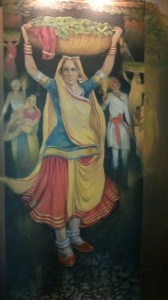
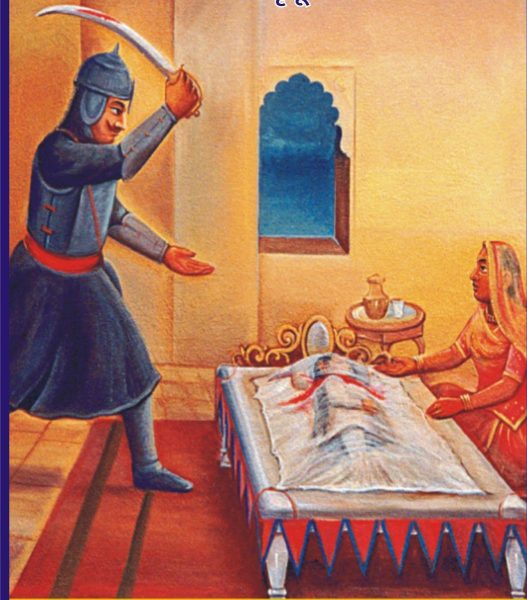 Source: gyandarpanपुत्र की मृत्यु के बाद पन्ना उदयसिंह को लेकर बहुत दिनों तक सप्ताह शरण के लिए भटकती रही पर दुष्ट बनबीर के खतरे के डर से कई राजकुल जिन्हें पन्ना को आश्रय देना चाहिए था, उन्होंने पन्ना को आश्रय नहीं दिया। पन्ना जगह-जगह राजद्रोहियों से बचती, कतराती तथा स्वामिभक्त प्रतीत होने वाले प्रजाजनों के सामने अपने को ज़ाहिर करती भटकती रही। कुम्भलगढ़ में उसे यह जाने बिना कि उसकी भवितव्यता क्या है शरण मिल गयी। उदयसिंह क़िलेदार का भांजा बनकर बड़ा हुआ। तेरह वर्ष की आयु में मेवाड़ी उमरावों ने उदयसिंह को अपना राजा स्वीकार कर लिया और उसका राज्याभिषेक कर दिया। उदय सिंह 1542 में मेवाड़ के वैधानिक महाराणा बन गए।
Source: gyandarpanपुत्र की मृत्यु के बाद पन्ना उदयसिंह को लेकर बहुत दिनों तक सप्ताह शरण के लिए भटकती रही पर दुष्ट बनबीर के खतरे के डर से कई राजकुल जिन्हें पन्ना को आश्रय देना चाहिए था, उन्होंने पन्ना को आश्रय नहीं दिया। पन्ना जगह-जगह राजद्रोहियों से बचती, कतराती तथा स्वामिभक्त प्रतीत होने वाले प्रजाजनों के सामने अपने को ज़ाहिर करती भटकती रही। कुम्भलगढ़ में उसे यह जाने बिना कि उसकी भवितव्यता क्या है शरण मिल गयी। उदयसिंह क़िलेदार का भांजा बनकर बड़ा हुआ। तेरह वर्ष की आयु में मेवाड़ी उमरावों ने उदयसिंह को अपना राजा स्वीकार कर लिया और उसका राज्याभिषेक कर दिया। उदय सिंह 1542 में मेवाड़ के वैधानिक महाराणा बन गए। Panna Dai Biography in Hindi
Panna Dai Biography in Hindi Panchabhai Patel Was Resident Of Karadi Village Near Dandi In Navsari District Of Gujarat, India. He Was A Talpada Koli Patel Of Gujarat.
Panchabhai Patel Was Resident Of Karadi Village Near Dandi In Navsari District Of Gujarat, India. He Was A Talpada Koli Patel Of Gujarat.
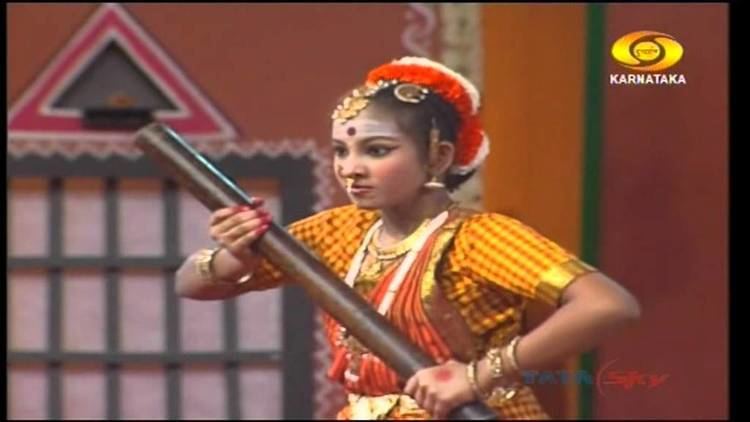
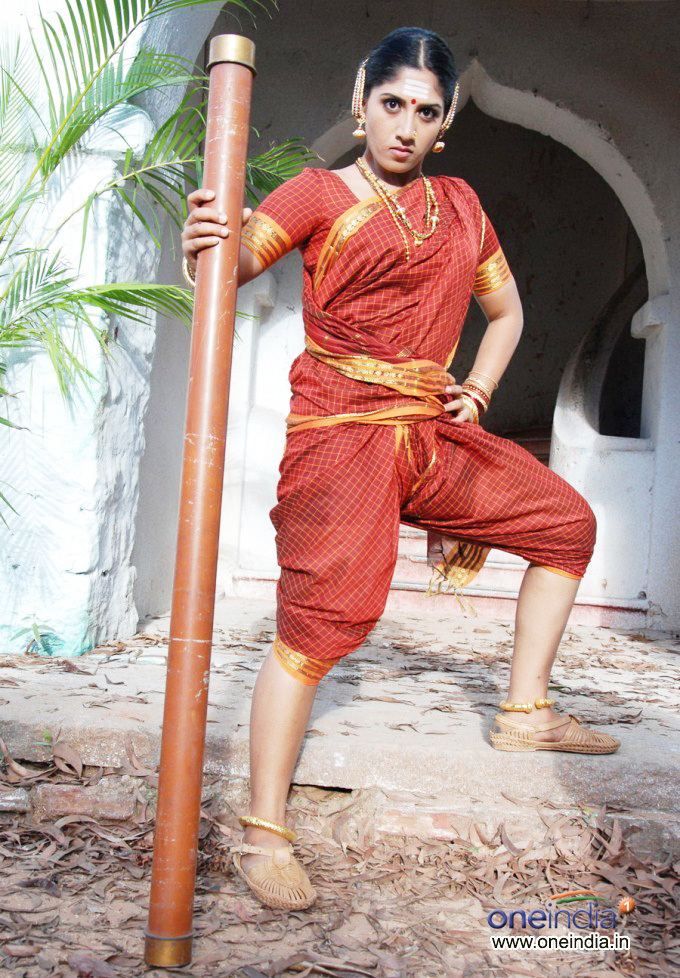
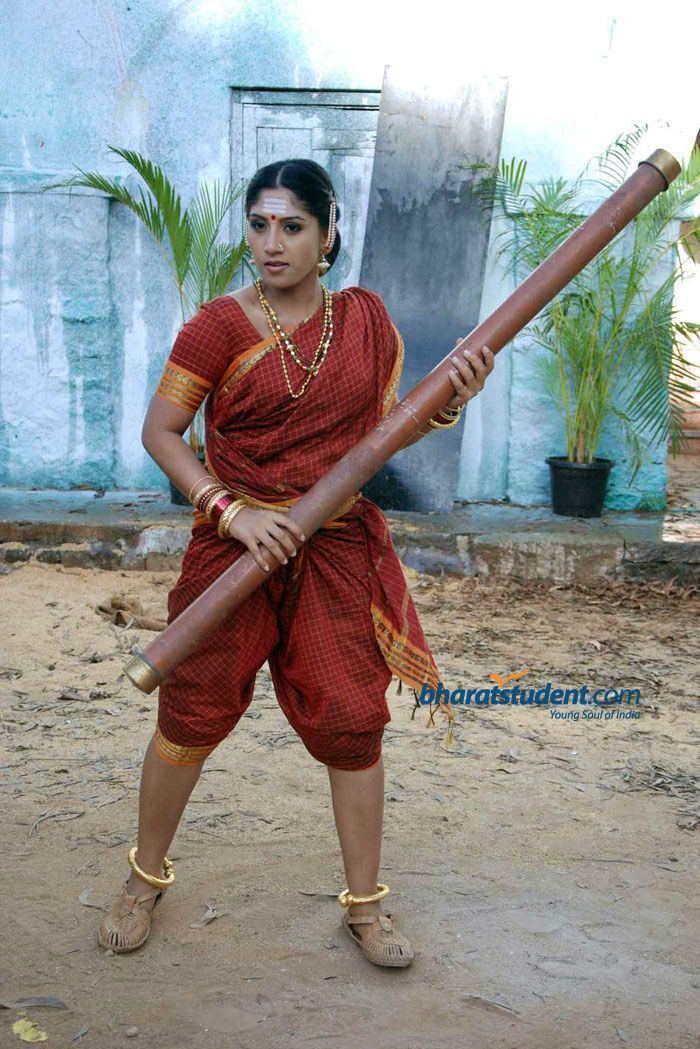
Ramphal Mandal
Ramphal Mandal was a young and courageous freedom fighter from Bihar, India, who played a significant role in the Indian independence movement, particularly during the Quit India Movement of 1942. Born on August 6, 1924, in Madhurapur village, Bajpatti, Sitamarhi district, Bihar, to Gokhul Mandal and Garbi Mandal, Ramphal belonged to the Dhanuk community, an Extremely Backward Class (EBC) in Bihar. He was married to Jagapatiya Devi at the age of 16.
Life and Contribution:
- Role in the Freedom Struggle: Ramphal Mandal was an active participant in the Quit India Movement, a mass civil disobedience campaign launched by Mahatma Gandhi to demand complete independence from British rule. On August 24, 1942, he was involved in a violent confrontation in Sitamarhi, where he and others were accused of killing four British officials, including the Sub-Divisional Officer (SDO) Hardeep Narayan Singh, a police inspector, a havaldar, and a peon, using a garasa (a traditional weapon). This act was seen as a bold defiance against British authority.
- Arrest and Execution: Ramphal was arrested on September 1, 1942, and initially detained in Sitamarhi jail. He was later transferred to Bhagalpur Central Jail on September 5, 1942. After a trial under case number 473/42, he was sentenced to death. On August 23, 1943, at the age of 19, Ramphal Mandal was executed by hanging in Bhagalpur Central Jail, earning him the title of the "first martyr of Bihar" in the context of the Quit India Movement.
- Legacy and Recognition: Despite his significant sacrifice, Ramphal Mandal’s contributions remained relatively obscure for many years, and his family reportedly received little support from the government, living in poverty and anonymity. In recent years, his martyrdom has been increasingly commemorated, particularly by the Dhanuk and Pachpania communities, as well as political groups like the Janata Dal (United) (JDU) and Bharatiya Janata Party (BJP), who organize events on his birth and martyrdom anniversaries to honor his legacy.
- Commemorative Events: His martyrdom day (August 23) and birth anniversary (August 6) are observed with events such as memorials and fairs in his native village, Madhurapur. For instance, on August 23, 2024, his 81st martyrdom day was commemorated in Bihar, and in 2025, his 101st birth anniversary was celebrated. Political parties, particularly the JDU, have used these events to consolidate support among the EBCs, highlighting his role as a symbol of courage and sacrifice.
- Community and Political Significance: Ramphal Mandal’s legacy is particularly significant for the Pachpania community, which includes castes like Dhanuk, Kewat, and others, who form a substantial portion of Bihar’s EBC population. His story is used to inspire pride and unity among these communities, especially ahead of elections, as seen in JDU’s efforts to honor him before the 2025 Bihar Assembly elections.
Notable Aspects:
- Ramphal Mandal was only 19 at the time of his execution, making him one of the youngest martyrs of the Quit India Movement. His bravery, despite his youth, has been described as exemplary, with some accounts noting that he faced his execution with remarkable courage, reportedly “laughing” as he went to the gallows.
- His actions were part of a broader resistance against British oppression, and his sacrifice is seen as a pivotal moment in Bihar’s contribution to India’s freedom struggle.
Ramphal Mandal’s story is a testament to the courage of ordinary individuals from marginalized communities who made extraordinary sacrifices for India’s independence. His legacy continues to inspire, particularly in Bihar, where he is remembered as a symbol of resistance and martyrdom.

From Wikipedia, the free encyclopedia
Naik Raghoji Rao Bhangre

Born
Raghoji Ramji
8 November 1805
Deogaon, Akole
Died 2 May 1848
Cause of death Hanged By British Government
Nationality Indian
Other names Raghuji, Raghojee
Predecessor Ramji Bhangre
Movement Indian independence movement
Parent(s)
Naik Ramji Manaji Bhangre (father)
Family Valoji Rao Bhangre (Grandfather), Bapuji Rao Bhangre (Brother)

 भारत
भारत
Rani Gaidinliu: Daughter of the Hills
Aditi Shah

Haipou Jadonang|E-pao net
16-year-old Gaidinliu would head the movement after the death of her cousin.





Born 3 February 1816 (Sri Bhaini Sahib, Punjab)
Died 18 January 1872 (Dhaka, Bangladesh)
Nationality Indian
Guru Sikh Gurus
Philosophy Philosophy of Guru Granth Sahib
Sect Namdhari
Motto Civilize the world!
Formation 1857
Type Religious and Spiritual
Legal Status Active
Purpose Educational, Religious Studies, Spirituality
Headquarters India, Punjab, Sri Bhaini Sahib
Father Sardar Jassa Singh
Early Education Bhaini Sahib in Gumukhi and Gurbani
Army Service He served the Khalsa army under Kanwar Naunihal Singh, the grandson of Maharaja Ranjit Singh, for several years.
Boycott He involved masses in the boyott of British-run educational institutions, law courts and foreign-made goods.
Fight for Independence Ram Singh played a significant role in ending British rule in India.
Formed “Sant Khalsa” Sant Khalsa was founded by him, which eventually led to the Kuka movements.
Guru Gobind Singh’s Granth Disregarding idols, Ram Singh considered Granth Sahib, written by Guru Gobind Singh, the most sacred text.
Malerkotla Massacre Following the Malerkotla massacre in 1872, Bhaini Sahib was sieged and the Kuka movement was forbidden by law.
Arrest and capture Ram Singh was imprisoned at Alahabad and was later deported to Burma.
Namdharis’ beliefs The Kukas consider him “amar”, or an immortal being.
राम सिंह कुका की जीवनी
राम सिंह कुका एक सैनिक, धार्मिक नेता और भारतीय स्वतंत्रता आंदोलन के एक प्रमुख योगदान कर्ता थे। राम सिंह कुका, कुका आंदोलन के संस्थापक थे। अंग्रेजों के साथ उनकी असहयोग की नीति, मुख्यतः पंजाब में जनता के बीच बेहद लोकप्रिय थी।
राम सिंह कुका का जन्म वर्ष 1816 में पंजाब के लुधियाना जिले के भैनी गाँव में हुआ था। राम सिंह कुका सिख सेना में एक सैनिक के रूप में शामिल हुए और वहाँ पर वे भाई बालक सिंह से मिलकर काफी प्रभावित हुए। भाई बालक सिंह की मृत्यु के बाद, राम सिंह कुका ने धर्म-प्रचारक कार्यों की जिम्मेदारियों को संभाला। राम सिंह कुका ने सिखों के बीच जाति व्यवस्था के खिलाफ लड़ाई लड़ी थी और उन्होंने अंतरजातीय विवाह और विधवा पुनर्विवाह के लिए लोगों को प्रोत्साहित किया था।
राम सिंह कुका ने ब्रिटिश शासन का पूर्ण रूप से विरोध किया और उनके खिलाफ गहन असहयोग आंदोलन की शुरुआत की। राम सिंह कुका के नेतृत्व में लोगो ने अंग्रेजी शिक्षा, मीलों में बने कपड़े और बाहर से आए अन्य आयातित सामानों का भी बहिष्कार किया। कुका या नामधारी आंदोलन ने समय के साथ अपनी गति बढ़ा दी थी और ब्रिटिश ने कई कुका स्वतंत्रता सेनानियों को हिंसक रूप से मारने का विरोध किया था। राम सिंह कुका को बंदी बनाकर रंगून भेज दिया गया और उसके बाद उन्हें आजीवन कारावास की सजा सुनाकर अंडमान जेल भेज दिया गया। 29 नवंबर 1885 में राम सिंह कुका का निधन हो गया था।
बाबा राम सिंह का उनके अनुयायियों पर इतना गहरा प्रभाव पड़ा था कि उनकी मृत्यु के बाद भी उनके अनुयायियों ने विश्वास नहीं किया कि वह वास्तव में मर चुके हैं। उनको लगता था कि लोगों का मार्ग दर्शन करने के लिए वह वापस लौट आएंगे। राम सिंह कुका की मृत्यु के बाद, असहयोग और सविनय अवज्ञा की प्रणाली को बाद में महात्मा गांधी द्वारा अपनाया गया था।
राम सिंह कुका के बारे में कुछ जानने योग्य तथ्य और जानकारी
उपनाम सतगुरू
जन्म स्थान 3 फरवरी 1816 (श्री भैनी साहिब, पंजाब)
मृत्यु 18 जनवरी 1872 (ढाका, बांग्लादेश)
राष्ट्रीयता भारतीय
गुरु सिख गुरु
दर्शन गुरु ग्रंथ साहिब के दर्शन
संप्रदाय नामधारी
सिद्धांत दुनिया को सभ्य बनाना
गठन 1857
वर्ग धार्मिक और आध्यात्मिक
कानूनी स्थिति सक्रिय
उद्देश्य शैक्षिक, धार्मिक अध्ययन, आध्यात्मिकता
मुख्यालय भारत, पंजाब, श्री भैनी साहिब
पिता सरदार जस्सा सिंह
प्रारंभिक शिक्षा भैनी साहिब के गुरुमुखी और गुरुबानी में
सेना में कार्य उन्होंने कई वर्षों तक महाराजा रणजीत सिंह के पोते कुँवर नौनिहाल सिंह के अधीन खालसा सेना के साथ कार्य किया।
बहिष्कार उन्होंने जनता को शामिल करके ब्रिटिश शैक्षणिक संस्थानों, कानून अदालतों और विदेशी वस्तुओं का बहिष्कार किया।
स्वतंत्रता के लिए लड़े भारत में ब्रिटिश शासन का अंत करने में राम सिंह ने एक महत्वपूर्ण भूमिका निभाई थी।
“संत खालसा” का गठन राम सिंह द्वारा संत खालसा की स्थापना की गई थी, जिसने अंत में कुका आंदोलन का नेतृत्व किया था।
गुरु गोविन्द सिंह के ग्रंथ गुरु गोबिंद सिंह द्वारा मूर्तियों के विरूद्ध, लिखित ग्रंथपाठमें राम सिंह ग्रंथ साहिब को सबसे पवित्र माना जाता है।
मलेरकोटला नरसंहार वर्ष 1872 में मलेरकोटला नरसंहार के बाद, भैनी साहिब को घेर लिया गया था और कानून द्वारा कुका आंदोलन को निषिद्ध कर दिया गया था।
गिरफ्तारी और कैद करना राम सिंह को इलाहाबाद में गिरफ्तार किया गया था। उसके बाद उन्हें बर्मा (म्यांमार) भेज दिया गया था।
नामधारी की मान्यताएं
Nationality Indian
सरकार ने विद्रोहीयो के बारे मे जानकारी जुटानी सुरू कर दी। सुरू आंत मे तो किसी से कोई भी जानकारी नही मिली लेकिन बाद मे महाराष्ट्र मे कोंकण के चीतपावन ब्राह्मणों ने अंग्रेजों का पूरा साथ दिया। १८३३ मे ब्रिटिश सरकार ने पूरी ताकत के साथ किरवा और अन्य क्रांतिकारीयों पर एक सफल हमला किया। इस दौरान क्रांतिकारीयों और अंग्रेजों के बीच काफी समय तक लड़ाई वाजी जीसमे किरवा और उकसे साथीयों को बंदी बना लिया गया। ज्यादातर बाघीयों को पूणे और ठाने ले जाया गया लेकिन रामा किरवा और अन्य मुख्य साथीयों को अहमदनगर ले गए जहां उन्हें दोषी करार देते हुए फांसी की सज़ा सुनाई गई।

वीरप्पा 2004 के चुनावों में लगातार पाँचवीं बार लोकसभा में चुन कर आए थे.
वह लोकसभा में कर्नाटक के बीदर संसदीय चुनाव क्षेत्र का प्रतिनिधित्व करते थे.
रामचंद्र वीरप्पा अप्रैल के चुनाव में पूरी तरह स्वस्थ थे.
उन्होंने कुछ समय पहले बीबीसी से एक विशेष बातचीत में कहा था कि वह अपना सौवाँ जन्मदिन एक सांसद के रूप में मनाना चाहते हैं.
वह अधिकतर समय कांग्रेस के सांसद रहे.
1991 में भारतीय जनता पार्टी में शामिल होने के बारे उन्होंने कहा था कि वे भाजपा की विचारधारा से प्रभावित होकर पार्टी में शामिल नहीं हुए थे.
उनका कहना था कि काँग्रेस ने उन्हें टिकट नहीं दिया इसलिए भाजपा में शामिल हो गए.
वीरप्पा दलित थे लेकिन उन्हें ब्राह्मण और लिंग्यत समुदायों का समर्थन मिलता रहा.
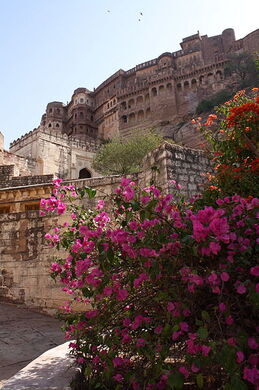

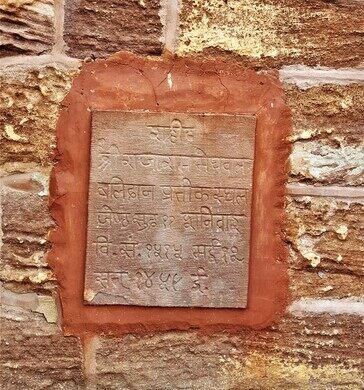
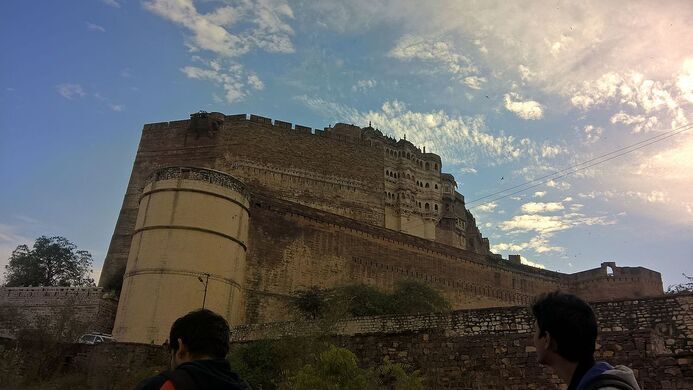
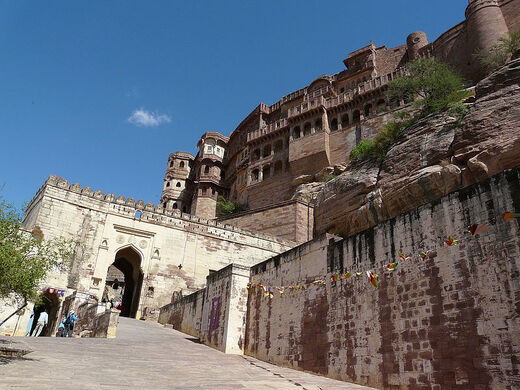
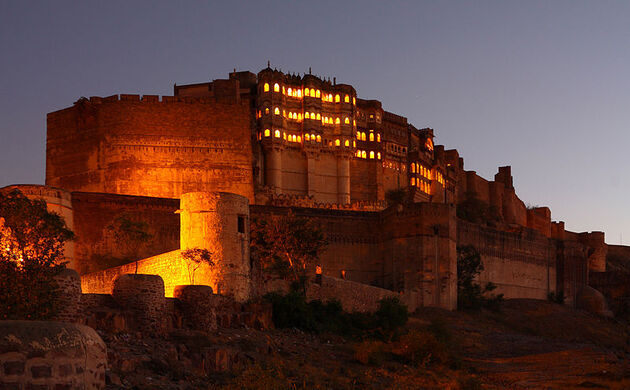

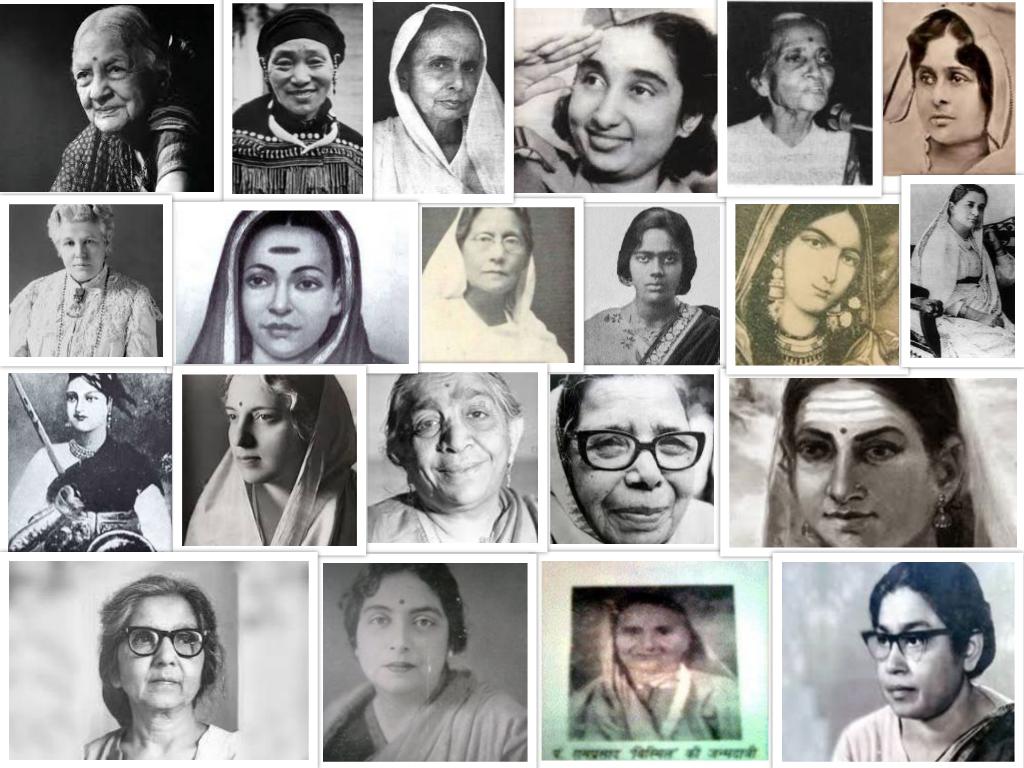
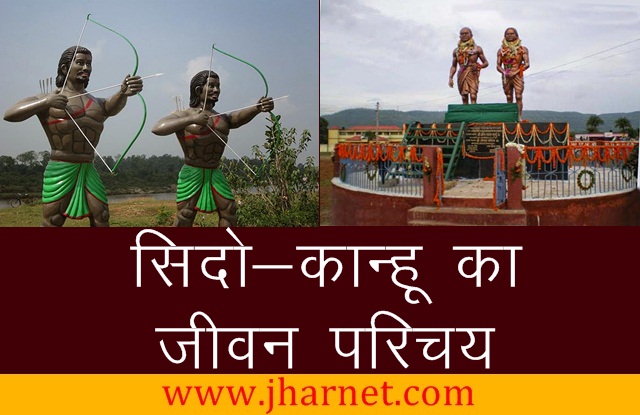
Sidhu Kanhu : संथाल परगना को पहले जंगल तराई के नाम से जाना जाता था। संथाल आदिवासी लोग संथाल परगना क्षेत्र में 1790 ई0 से 1810 ई0 के बीच बसे। संथाल परगना को अंग्रेजो द्वारा दामिन ए कोह कहा जाता था और इसकी घोषणा 1824 को हुई और इसी संथाल परगाना में संथाल आदिवासी परिवार में दो विर भईयों का जन्म हुआ जिसे हम सिदो-कान्हू मुर्मू के नाम से जानते हैं।
परिचय:- सिदो-कान्हू मुर्मू का जन्म भोगनाडीह नामक गाँव में एक संथाल आदिवासी परवार में हुआ था। सिदो मुर्मू का जन्म 1815 ई0 में हुआ था एवं कान्हू मुर्मू का जन्म 1820 ई0 में हुआ था। संथाल विद्रोह में सक्रिय भूमिका निभाने वाले इनके दो भाई भी थे जिनका नाम चाँद मुर्मू और भैरव मुर्मू था। चाँद का जन्म 1825 ई0 में एवं भैरव का जन्म 1835 ई0 में हुआ था। इनके अलावा इनकि दो बहने भी थी जिनका नाम फुलो मुर्मू एवं झानो मुर्मू था। इन 6 भाई-बहनो का पिता का नाम चुन्नी माँझी था। Sidhu Kanhu
जन्म स्थान:- इन छः भाई बहनो का जन्म भोगनाडी गाँव मे हुआ था जो कि वर्तमान में झारखण्ड राज्य के संथाल परगाना परमण्ल के साहेबगंज जिला के बरहेट प्रखण्ड के भोगनाडीह में है।
संथाल विद्रोह (हूल आंदोलन):- सिदो-कान्हू ने 1855-56 मे ब्रिटिश सत्ता, साहुकारो, व्यपारियों व जमींदारो के खिलाफ एक विद्रोह कि शुरूवात कि जिसे संथाल विद्रोह या हूल आंदोलन के नाम से जाना जाता है। संथाल विद्रोह का नारा था करो या मरो अंग्रेजो हमारी माटी छोड़ो । सिदो ने अपनी दैवीय शक्ति का हवाला देते हुए सभी मांझीयों को साल की टहनी भेजकर संथाल हुल में शामिल होने के लिए आमंत्रन भेजा। 30 जून 1855 को भेगनाडीह में संथालो आदिवासी की एक सभा हुई जिसमें 10,000 संथाल एकत्र हुए जिसमें सिदो को राजा, कान्हू को मंत्री, चाँद को मंत्री एवं भैरव को सेनापति चुना गया। संथाल विद्रोह भोगनाडीह से शुरू हुआ जिसमें संथाल तीर-धनुष से लेस अपने दुश्मनो पर टुट पड़े
जबकि अंग्रेजो मे इसका नेतृत्व जनरल लॉयर्ड ने किया जो आधुनिक हथियार और गोला बारूद से परिपूर्ण थे इस मुठभेड़ में महेश महेश लाल एवं प्रताप नारायण नामक दरोगा कि हत्या कर दि गई इससे अंग्रेजो में भय का माहोल बन गया संथालो के भय से अंग्रेजो ने बचने के लिए पाकुड़ में मार्टिलो टावर का निर्माण कराया गया था जो आज भी झारखण्ड के पाकुड़ जिले में स्थित है। अंततः इस मुठभेड़ में संथालो कि हार हुई और सिदो-कान्हू को फांसी दे दी गई। Sidhu Kanhu
मृत्यु:- इस भयंकर मुठभेड़ में संथालो हार हुई क्योंकि ये लोग तीर धनुष से लड़ रहे थे जबकि अंग्रेजो के पास आधुनिक हथियार था। सिदो को अगस्त 1855 में पकड़कर पंचकठिया नामक जगह पर बरगद के पेड़ पर फांसी दे दि गई वह पेड़ आज भी पंचकठिया में स्थित है जिसे शहिद स्थल कहा जाता है जबकि कान्हू को भोगनाडीह में फांसी दे दी गई पर आज भी वह संथालो के दिलो में आज भी जिन्दा है एवं याद किए जाते है।
संथालो के इस हार पर भी अंग्रेजी हुकूमत को जड़ से हिला कर रख दिया था। कार्ल मार्क्स ने इस विद्रोह को ‘भारत का प्रथम जनक्रांति’ कहा था। आज भी 30 जून को भोगनाडीह में हूल दिवस पर सरकार द्वारा विकस मेला लगाया जाता है एवं विर शहिद सिदो-कान्हू को याद किया जाता है।
सिद्धू - कान्हू: संथाल विद्रोह के प्रणेता
परिचय
झारखण्ड का इतिहास साक्षी है कि अपनी देशज – जन चेतना की रक्षा के लिए वह निरंतर संघर्ष करता रहता है। बिहार के जनजातीय समाज में अब तक जितने भी संघर्ष हुए हैं, उनका एक प्रधान पहलु सामुदायिक पहचान बचाना रहा है जोत जमीन के रक्षा के लिए जमीन से जुड़े आदिवासियों के आंदोलन के एक लंबा इतिहास है। अपने भूमि व्यवस्था के शत – विशत होने और ईसाई मिशनरियों के प्रभाव के फलस्वरूप आदिवासी द्वारा अपनी संस्कृति को पुनर्जीवन देने के लिए भी आंदोलन हुए हैं, सामाजिक आंदोलन की पृष्ठभूमि में सामाजिक संरचना में बदलाव लाने या बदलाव का विरोध करने के लिए संगठित प्रयास ही रहा है।
भारतीय स्वतंत्रता – संग्राम में भी बिहार की जनजातियों का महत्वपूर्ण योगदान रहा है। 1857 का सिपाही विद्रोह वस्तुतः राष्ट्रीय स्तर पर अंग्रेजी शासन के विरूद्ध स्वतंत्रता की पहली लड़ाई मानी जाती है, किन्तु इसके पूर्व भी स्थानीय या क्षेत्रीय आधार पर आंदोलन हुए हैं। बिहार की जनजातियों ने अपनी समस्याओं, शोषण – उत्पीडन व जुल्म से विवश और व्यथित होकर अंग्रेजी शासन और उसके समर्थन तत्वों, जैसे जमींदार, महाजन अमला, पुलिस आदि के विरूद्ध विद्रोह किया है। 1789 से 1831 – 32 के बीच अनेक जनजातीय आन्दोलन हुए हैं जिनके लिए खूँटी – कट्टी व्यवस्था के विघटन के प्रति प्रतिशोध की भावना मुख्य रूप से उत्तरदायी रही है। 1831 में कोल विद्रोह हुआ। मुंडा, ही उराँव आदि सभी विद्रोह के केंद्र रहे। मानसून में भी भूमिजों का विद्रोह हुआ। इस विद्रोह के दौरान गाँव लुटे गए, जलाये गए तथा पुलिस, सैनिक और नागरिक मारे गये।
ब्रिटिश राज के शुरू के सौ सालों में नागरिक विद्रोहों का सिलसिला किसी खास मुद्दे व स्थानीय असंतोष के कारण चलता रहा। 1763 से 1856 के बीच देश भर में अंग्रेजों के विरूद्ध 40 से ज्यादा बड़े विद्रोह तो हुए। छोटे पैमाने पर तो इनकी संख्या बेशुमार है। धार्मिक नेताओं ने भी विद्रोह के झंडे लहराए। ऐसे ही कुछ विद्रोह बिहार की जनजातियों द्वारा हुए। दरअसल अधिकांश जनजातीय विद्रोहों में उनके जातीय हित की बुनियादी कारण रहे हैं। जनजातियों में संथालों का विद्रोह सबसे जबरजस्त था। भारत से अंग्रेजों को भगाने के लिए यह प्रथम जनक्रांति थी जो संथाल हूल के नाम से प्रसिद्ध हुई।
बिहार की जनजातियों में संथालों की संख्या सबसे अधिक है। इनका मुख्य निवास – स्थल संथाल परगना है जो छोटानागपुर के उत्तरी - पूर्वी छोर पर स्थित है। इनकी बहूलता के कारण ही संथाल परगना नाम दिया गया है। छोटानागपुर के उत्तरी – पूर्वी छोर पर स्थित है। इनकी बहूलता के कारण ही संथाल परगना नाम दिया गया है। छोटानागपुर में प्रवेश के बाद संथालों ने इसी क्षेत्र को अपना आवास स्थल बनाया। संथाल परगना तब भागलपुर कमिश्नरी का अंग था। हजारीबाग और वीरभूम जिले में संथाल बहुत पहले आ बसे थे। इन्हीं इलाकों से आकर ये संथाल परगना में आ बसे थे। यहाँ के मूल निवासी भोले – भाले पहाड़िया की ओर से कोई खास विरोध नहीं हुआ। जंगल को साफ कर खेती के लायक जमीन तैयार करते गए, गांव बसाते गये। ओ, मैले के विचारानुसार से सर्वप्रथम 1790 – 1810 के बीच यहाँ बसे। इनकी आवा जाही जारी रही। 1836 तक 427 गाँव से कम नहीं बसाये गये। 1851 तक यहाँ संथाली के 1473 गांव बस चुके थे। जिनकी आबादी लगभग 82,795 हो गयी थी।
छोटानागपुर में अंग्रेजों का अधिपत्य 1756 से ही हो चुका था, किन्तु यहाँ की जनजातियों पर नहीं। धीरे – धीरे शोषण और अत्याचार का शिकंजा कसता गया। 1850 तक यहाँ तक के चप्पे – चप्पे में शोषण छा चुका था। संथाल भी इसके शिकार हो गये। ऐसे तो संथाल भोले – भाले शांतिप्रिय और थोड़े से ही संतुष्ट होने वाले होते हैं किन्तु जब उनका शोषण बढ़ने लगा। साहबों की उपेक्षा, महाजनों का शोषण, अमला के भ्रष्टाचार अत्याचार बढ़ते गये। संथाल स्त्रियां भी इस अत्याचार से अछूती नहीं रही। बंगाली – बिहारी महाजन ऋण देकर भारी सूद वसूलते, छोटे बटखरे से इन्हें सामान बेचते और बड़े बटखरे से इनका उत्पादन को खरीदते। इन्हें ठगते भी और ऋण की वसूली बड़ी क्रूरता – कठोरता से करते। न्यायालय दूर, पुलिस संवेदना शून्य। इन्हें कोई इंसाफ नहीं मिलता था। धीरे – धीरे इनकी जमीन भी महाजन हड़पने लगे। अंग्रेजों ने मालगुजारी बढ़ा दी कर लगान नहीं देने पर इनकी संपति को कुर्की जब्ती व नीलामी होने लगी। स्वदेशी महाजन जमींदारी और विदेशी हुक्मरान दोनों ओर से दोहरी मार। इनकी नजर में दोनों दिकू थे जिसके लिए इनके मन में भयंकर आक्रोश पनप चुका था। अतंत: इनका धैर्य टूट गया। संथाल हूल इसी शोषण की देन है।
सिद्धू – कान्हू
संथाल हूल का नेतृत्व भोगनाडीह निवासी चुन्नी मांझी के चार पुत्रों ने किया। ये थे सिद्धू कान्हू, चाँद और भैरव। हूल के समय कान्हू की उम्र 35 वर्ष, चाँद की आयु 30 वर्ष और भैरव की उम्र 20 वर्ष बतायी जाती हैं। सिद्धू सबसे बड़ा था किन्तु उसकी जन्मतिथि 1825 के आस – पास मानी गई है। जब सिद्धू - कान्हू ने शोषण के विरूद्ध विद्रोह करने का संकल्प ले लिया तो जन समूह को एकजुट करने तथा एकत्रित करने के लिए परंपरागत ढंग से अपनाया। दूगडूगी पिटवा दी और साल टहनी का संदेशा गाँव – गाँव भेजवाया। साल टहनी क्रांति संदेश का प्रतीक है। 30 जून, 1855 की तिथि भगनाडीहा में विशाल सभा रैली के लिए निर्धारित की गई। तीर धनुष के साथ लोगों को सभा में लाने की जिम्मेवारी मांझी/परगनाओं को सौंपी गई। संदेश चारों ओर फ़ैल गया। दूरदराज के गांवों से पद - यात्रा करते लोग चल पड़े तीर – धनुष और पारंपरिक हथियारों से लैस कोई बीस हजार संथाल 30 जून को भगनाडीह पहुँच गये। इस विशाल सभा में सिद्धू कान्हू के अंग्रेज हमारी भूमि छोड़ के नारे गूँज उठे। कभी तिलक ने कहा था। स्वाधीनता हमारा जन्मसिद्ध अधिकार है, नेताजी सुभाष चन्द्र बोस ने कहा था – तुम हमें खून दो, मैं तुम्हें आजादी दूंगा और गाँधी ने नारा दिया था – करो या मरो। इनसे पहले ही उसी तर्ज पर सिद्धू ने ललकारा था – करो या मरो, अंग्रेजों हमारी पार्टी छोड़ दो।
सिद्धू का लोकतंत्र में विश्वास था। उसने समझ लिया था कि केवल संथालों द्वारा जन – आंदोलन संभव नहीं है। इसलिए औरों का भी सहयोग लिया। इस विद्रोह में अन्य लोग भी जैसे कुम्हार, चमार, ग्वाला, तेली, लोहार, डोम और मुस्लिम भी शामिल हो गये।
सिद्धू - कान्हू ने हूल को सजीव और सफल बनाने के लिए धर्म का भी सहारा लिया। मरांग बूरू (मुख्य देवता) और जाहेर – एस (मुख्य देवी) के दर्शन और उनके आदेश (अबुआ राज स्थापित करने के लिए) की बात को प्रचारित कर लोगों की भावना को उभारा। सखुआ डाली घर – घर भेजवा का लोगों तक निमंत्रण पहूंचाया कि मुख्य देवी – देवता का आशीर्वाद लेने के लिए 30 जून को भगनाडीह में जमा होना है। फलस्वरूप 30 जून को भगनाडीह में कोई 30 हजार लोग सशस्त्र इकट्ठे हो गये। उस सभा में सिद्धू को राजा, कान्हू को मंत्री, चाँद को प्रशासक और भैरव को सेनापति मनोनीत कर नये संथाल राज्य के गठन की घोषणा कर दी गई। महाजन, पुलिस, जमींदार, तेल अमला, सरकारी कर्मचारी के साथ ही नीलहे गोरों को मार भगाने का संकल्प लिया गया तथा लगान नहीं देने व सरकारी आदेश हिन् मानने का निश्चय किया गया। नीलहे गोरों ने नील खेतों के लिए संथाली को उत्साहित किया था पर शीघ्र ही उनका शोषण शुरू हो गया था जो बढ़ता ही गया। संथाल उनसे भी क्रोधित थे।
इसी समय एक घटना घटी। रेल निर्माण कार्य से जुड़े एक अंग्रेज ठीकेदार ने तीन संथाली मजदूरिनों का अपरहण कर लिया। यह आग में घी का काम किया। क्रांति की शुरूआत हो गई। कुछ संथालों ने अंग्रेजों पर आक्रमण कर दिया। तीन अंग्रेज मारे गये। और अपहृत स्त्रियाँ मुक्त कर ली गई। हूल यात्रा शुरू हुई तो कलकत्ता की ओर बढ़ती गई। गाँव के गाँव लुटे गए, जलाये गये और लोग मारे जाने लगे। कोई 20 हजार संथाली युवकों ने अंबर परगना के राजभवन पर धावा बोल दिया और 2 जूलाई को उस पर कब्जा का लिया। फूदनीपुर, कदमसर और प्यालापुर के अंग्रेजों को मार गिराया गया। निलहा साहबों की विशाल कोठियों पर अधिकार पर अधिकार कर लिया गया। 7 जुलाई को दिघी थाना के दारोगा और अंग्रेजों के पिट्टू, महेशलाल दत्त की हत्या कर दी गई। तब तक 19 लोगों को मौत के घाट उतार दिया गया था। सुरक्षा के लिए बनाये गये मारटेल टाबर से अंधाधुंध गोलियां चलाकर संथाल सैनिकों को भारी क्षति पहुँचायी गई। फिर भी बन्दूक का मुकाबला तीर – धनुष करता रहा। संथालों ने वीरभूमि क्षेत्र पर कब्जा कर लिया और वहां से अंग्रेजों को भगा दिया। वीरपाईति में अंग्रेज सैनिकों की करारी हारी हुई। रघुनाथपुर और संग्रामपुर की लड़ाई में संथाली की सबसे बड़ी जीत हुई। इस संघर्ष में एक यूरोपियन सेनानायक, कुछ स्वदेशी अफसर और 25 सिपाही मार दिए गये। अंग्रेज बौखला गये। भागलपुर कमिश्नरी के सभी जिलों में मार्शल लॉ लागू कर दिया गया। विद्रोहियों की गिरफ्तारी के लिए पुरस्कार की घोषणा कर दी गई। उनसे मुकाबला के लिए भी जबरदस्त बंदोबस्त हुआ। बडहैत की लड़ाई में चाँद भैरव कमजोर पड़ गये और जब अंग्रेजों की गोलियों के शिकार हो गए। अब अंग्रेजों ने सिद्धू – कान्हू के कुछ साथी लालच में आकर अंग्रेजों से मिल गये। गद्दारों के सहयोग से आखिर उपरबंदा गाँव के पास कान्हू को गिरफ्तार कर लिया गया। बड़हैत में 19 अगस्त को सिद्धू को भी पकड़ा गया। मेहर शकवार्ग ने उसे बंदी बनाकर भागलपुर जेल ले गया। दोनों भाईयों को खुलेआम फांसी दे दी गई। सिद्धू को बड़हैत में जिस स्थान पर दरोगा मारा गाया था और कान्हू को भगनाडीह में ही फांसी पर चढ़ा दिया गया। इसके साथ ही संथाल विद्रोह का सशक्त नेतृत्व समाप्त हो गया। धीरे – धीरे विद्रोह को कुचल दिया गया। 30 नवंबर को कानूनन संथाल परगना जिला की स्थापना हुई और इसके प्रथम जिलाधीश के एशली इडेन बनाये गये। पूरे देश से भिन्न कानून से संथाल परगना का शासन शुरू हुआ।
संथाल हूल का तो अंत हो गया। किन्तु दो वर्ष के बाद ही 1857 में होने वाले सिपाही विद्रोह – प्रथम स्वतंत्रता संग्राम - की पीठिका तैयार कर दी गई। आज भी इन चारों भाईयों पर छोटानागपुर को गर्व है और संथाली गीतों में आज भी सिद्धू – कान्हू याद किये जाते हैं। इन शहीदों की जयंती संथाल हूल दिवस के रूप में मनायी जाती है।
स्त्रोत: जनजातीय कल्याण शोध संस्थान, झारखण्ड सरकार
Saifuddin Kitchlew

Born 15 January 1888
Amritsar, Punjab, British India
Died 9 October 1963 (aged 75)
Delhi, India
Nationality Indian
Occupation freedom fighter, politician
Saifuddin Kitchlew (15 January 1888 – 9 October 1963) was an Indian freedom fighter, barrister, politician and later a leader of the peace movement. A member of Indian National Congress, he first became Punjab Provincial Congress Committee (Punjab PCC) head and later the General Secretary of the AICC in 1924. He is most remembered for the protests in Punjab after the implementation of Rowlatt Act in March 1919, after which on 10 April, he and another leader Satyapal, were secretly sent to Dharamsala. A public protest rally against their arrest and that of Gandhi, on 13 April 1919 at Jallianwala Bagh, Amritsar, led to the infamous Jallianwala Bagh massacre. He was also a founding member of Jamia Millia Islamia. He was awarded the Stalin Peace Prize (now known as Lenin Peace Prize) in 1952.
Early life
Kitchlew was born to the Kashmiri Muslim family of Azizuddin Kitchlew and Dan Bibi in Amritsar, Punjab. His father owned a pashmina and saffron trading business and originally belonged to a Brahmin family of Baramulla. His ancestor, Prakash Ram Kitchlew, had converted to Islam and his grandfather, Ahmed Jo migrated from Kashmir in the mid-19th century after the Kashmir famine of 1871.
Kitchlew went to Islamia High School in Amritsar, later obtaining a B.A. from Cambridge University, and a Ph.D. from a German university, before practising law in India.
Career
On his return he established his legal practice in Amritsar, and soon came in contact with Gandhi. In 1919, he was elected the Municipal Commissioner of the city of Amritsar. He took part in the Satyagraha (Non-cooperation) movement and soon left his practice to join the freedom movement, as well as the All India Khilafat Committee.
Political career
Jallianwala Bagh
Kitchlew was first exposed to Indian nationalism after public outcry over the Rowlatt Acts. Kitchlew was arrested with Gandhi and Dr. Satyapal for leading protests in Punjab against the legislation. To protest the arrest of the trio, a public meeting had gathered at the Jallianwala Bagh, when General Reginald Dyer and his troops fired upon the unarmed, civilian crowd. Hundreds were killed, and hundreds more injured. This act was the worst case of civilian massacre since the Indian rebellion of 1857 and riots broke out throughout the Punjab.
Political mainstream
Kitchlew rose in the Congress Party, heading its Punjab unit before rising to the post of AICC General Secretary, an important executive position in 1924. Kitchlew was also the chairman of the reception committee of the Congress session in Lahore in 1929-30, where on 26 January 1930, the Indian National Congress declared Indian independence and inaugurated an era of civil disobedience and revolution aimed to achieve full independence.
Kithclew was a founding leader of the Naujawan Bharat Sabha (Indian Youth Congress), which rallied hundreds of thousands of students and young Indians to nationalist causes. He was a member of the Foundation Committee of Jamia Millia Islamia, which met on 29 October 1920 and led to the foundation of Jamia Millia Islamia University.
He started an Urdu daily Tanzim and was instrumental in the establishment of Swaraj Ashram in January 1921 at Amritsar to train young men for national work and to promote Hindu-Muslim unity. Throughout the 1930-1934 struggles, Kitchlew was repeatedly arrested, and in all spent fourteen years behind bars.
Kitchlew supported a united Indian nationalism against British imperialism and opposed the partition of India, holding that a divided India would weaken Muslims, both economically and politically.
Post-independence
Kitchlew was opposed to the Muslim League's demand for Pakistan and later in the 1940s became President of the Punjab Congress Committee. In 1947 he strongly opposed the acceptance of the Partition of India. He spoke out against it at public meetings across the country, and at the All India Congress Committee session that ultimately voted for the resolution. He called it a blatant "surrender of nationalism for communalism". Some years after partition and Independence, he left the Congress. He moved closer to the Communist Party of India. He was the founder president of the All-India Peace Council and remained President of 4th Congress of All-India Peace Council, held at Madras in 1954, besides remaining Vice President of the World Peace Council.
Kitchlew moved to Delhi after his house burnt down during the partition of India riots of 1947, spending the rest of his life working for closer political and diplomatic relations with the USSR. He received the Stalin Peace Prize in 1952. In 1951, a Government Act made him, Jawaharlal Nehru, and Maulana Abul Kalam Azad, life trustees of the Jallianwala Bagh National Memorial Trust.
He died on 9 October 1963, survived by a son, Toufique Kitchlew, who lives in a Lampur village on the outskirts of Delhi, and five daughters. While four of his daughters married men from Pakistan, one daughter, Zahida Kitchlew, was married to Malayalam music director M. B. Sreenivasan, a Hindu man.
Legacy
A colony in Ludhiana, Punjab, popularly called Kitchlu Nagar, is named after him. Indian Post released a special commemorative stamp featuring him in 1989. The Jamia Milia Islamia created a Saifuddin Kitchlew Chair at the MMAJ Academy of Third world Studies in 2009.
On the afternoon of February 15 , 1932 , hundreds of freedom lovers set out to wave tricolor at Tarapur police station in Munger district . Those immortal fighters wore the national flag in their hands and laughed at the lips echoing the slogans of ' Vande Mataram ', 'Bharat Mata Ki Jai'. In the biggest shootout of the Indian freedom struggle , the patriots were ready to eat sticks and left home. The tricolor was hoisted at the local police station building after the martyrdom of more than 50 sons. After the incident, the British loaded the bodies of the martyrs in vehicles and washed them away in the Ganges river of Sultanganj .
Only 13 of the martyr sons were identified. Known martyrs include Vishwanath Singh (Chhathar), Mahipal Singh (Ramchua), Sheetal (Asarganj), Sukul Sonar (Tarapur), Santa Passi (Tarapur), Jonti Jha (Satkharia), Sinhareshwar Rajhans (Bihma), Badri Mandal (Dhanpura), Vasant Dhanuk (Lodhiya), Rameshwar Mandal (Padhabhara), Gabi Singh (Maheshpur), Ashrafi Mandal (Khasikari) and Chandi Mahato (Chorgaon) were. 31 unidentified bodies were also found, which were not identified. Some bodies were buried in the lap of Ganga .
According to the elders of the area, there was a plan to hoist the flag at Tarapur police station in Khawjari hill of Shambhuganj police station. Khajuri Pahad, Mandar, Barahat and Dholpahari were built for the protection of revolutionaries. To save the motherland, both the fighters and those who gave their lives, had plagued the British government . Historian DC Deenkar, in his book "Contribution of the Untouchables in the Freedom Struggle", also mentions the incident of Tarapur, specifically the contributions of Santa Pasi and Sheetal Chamar .
Shital

Shital: Resident of v. Jalalabad, p.s. Tarapur, distt. Munger, Bihar. Belonging to a lower class, he actively participated in the Civil Disobedience movement of 1930. He joined the 4000 strong crowd which had assembled around the Tarapur Police Station with the object of hoisting the Congress Flag over it on 15 February 1932ññthe day declared to be the ëJhanda Satyagrah Diwasí by the local Congress Committee. The police first warned the gathering to disperse and then opened indiscriminate fire on it. He was critically injured in the firing and died on the spot the same day. [Poll/Special (Confd.), F. No. 24 (II)/1932, BSAP; BMSAI, 2, p. 443; WWIM, I, p. 336]
Dr. Syed Mahmud
Dr. Syed Mahmud
Syed Mahmud was born in the village Syedpur Bhitari, Ghazipur (UP). His father's name was Md Umar and grandfather's name was Qazi Farzand Ali. His ancestors had come to Bihar during the Lodis (and had subsequently migrated to Ghazipur, only to return back to Bihar). But his political life started in Aligarh where he received his education during 1901-08. During his student days at Aligarh from 1901 to 1908 he had among his friends and class fellows persons like Tasadduq Ahmad Khan Shervani, Abdurrahman Bijnori, Syed Husain and Saifuddin Kitchlew. Though belonging to a very aristocratic family, Syed Mahmud was an ardent supporter of Congress from its very early days. Here he was among those few students, who were trying to make Muslims join the ongoing anti colonial nationalist struggle led by the Indian National Congress. He, along with his friends, participated in the annual session of the Congress in 1905 at Benaras. In February 1907, he led a strike against the British manned management of the college. It started with disciplinary action against a sharp student, Raja Ghulam Husain, who had some confrontation with a constable in the annual exhibition (numaish). Violating the assurance given by the European Principal to Mohsinul Mulk, six students (including the three students viz. Syed Mahmud, Tasadduq Sherwani and Abdur Rahman Bijnori) were punished.
Having expelled out of MAO College Aligarh, Syed Mahmud went to the Lincoln's Inn of London to become a barrister. Later, wrote a thesis on Mughal Politics and Administration from the Cambridge. He also got influenced with Pan Islamism under the influence of W.S. Blunt and E.G. Brown. Here also he organized some students and developed ideological conflicts with Ameer Ali (d.1928), who was running the London branch of the Muslim League. In 1909, in London he came in contact with Mahatma Gandhi and J.L. Nehru. In 1912, he obtained Ph.D. from Germany and came back to India, and from 1913 he started his legal profession in Patna under the able guidance of Mazharul Haq. In 1915, he married Mazharul Haq's niece. Throughout his career he insisted on communal harmony, played significant role in the Congress- League Pact of Lucknow in 1916. Served with the Home Rule League, AICC and gave up his legal practice to participate in the Khilafat Movement. He also authored, The Khilafat & England. In 1922, he was imprisoned. In 1923, he was elected Deputy General Secretary of the AICC along with Jawaharlal Nehru which resulted in close friendship between the two leaders. Nehru signed as witness at the marriage of Syed Mahmud's daughter. In 1929, with M.A. Ansari, he formed `Muslim Nationalist Party' within the Congress, and became the General Secretary of the Congress, and served in this capacity till 1936. In 1930, along with M.L. Nehru and J.L. Nehru he was imprisoned in the Naini Jail of Allahabad, for his participation in the Civil Disobedience Movement.
The S.K. Sinha led cabinet in Bihar made Syed Mahmud Minister for Education, Development and Planning in 1937. His emphasis was on providing primary education to largest possible number of people, worked for revision of curricula, appointed Urdu teachers in the Patna University. He fought for raising the proportion of Muslims in the government jobs and in the local bodies. To mitigate the Hindi-Urdu tension, he launched a bilingual (Urdu; Hindi) newspaper called Raushni. He also wrote a book, A Plan of Provincial Reconstruction (1939). It became so popular that several editions were re-printed in the same year. It displays his vision for the problems like public health, education and human resources, material resources of Bihar. This book dealt at length about rural indebtedness and agricultural finance. He was engaged in such exercise when other big leaders of Bihar were engaged in caste based factionalism, much lamented by Ram Manohar Lohia, Jaya Prakash Narayan and Sahajanand Saraswati.
During 1946-52, Syed Mahmud was the Minister for Transport, Industries and Agriculture in Bihar. In 1949 he suggested Nehru to enter into a particular military pact with Pakistan in order to safeguard the nation from China which could not materialize. Pained with communal partition of India, an optimist in him motivated him to write another book Hindu Muslim Accord (1949), celebrating the `Ganga-Jamuni Tehzeeb of India'. From 7th December 1954 to 17th April 1957 he was the Union Minister of State for External Affairs but resigned due to eye troubles. He participated in the historic Bandung Conference (1955), where the Panchsheel was spelled out. He played remarkable roles in India's useful diplomatic relations with the Gulf countries, Iran and Egypt.
By 1940s, the Muslim League leaders of Bihar had developed a low level hostility against him, so much so that they instructed their followers not to participate in the last rites (janaza) of his mother –in-law, the marriage ceremony of his daughter was sought to be disturbed by the lumpens claiming to be supporters of the Muslim League. In June 1961, the communal riots and the abdication of responsibilities by the state disillusioned him. It got further accentuated in the riots of 1964, when he started re-thinking the question of minorities in both India and Pakistan, founded the Muslim Majlis Mashawerat (MMM), yet he warned against having exclusively identity based political party in the India's secular democracy. He rather wanted it to act more as a pressure group. In April 1968 he left the MMM precisely because its leaders started talking in exclusivist language. In post-Independent Bihar, the Congress leaders acted only as caste leaders, established linear network of patronage distribution. For example, the Bhumihar and Rajput leaders had their `sub-contractors' in many districts, who established a large number of high schools and colleges, offering recruitments to their caste fellows. These employees acted as their electoral strength/booth managers. Syed Mahmud did not develop this kind of linear networks of patronage distribution. His eminence draw attention among the scholarly organizations likes Darul Musannefin Shibli Academy Azamgarh (UP) and they elected him as President. He served as Shibli Academy’s President till his last breath.
Surya Sen
Source: topyaps.com
He lead the Chittagong Armory Raid to prove that an armed uprising against the mighty British was possible. In his leadership, a group of sixty-four other revolutionaries captured the Police Armory, destroyed the telephones and telegraph lines and dislocated the railway lines to and from Chittagong. After capturing the town. they declared it as Gandhi’s Raj by hoisting the tricolor. They were eventually surrounded as they were greatly outmatched and overpowered by the British forces. Also, they could not find any ammunition. Sen was captured, tried and hanged. He used to be a school teacher before he became a revolutionary.
The Trio: Benoy, Badal & Dinesh

Source: Wikimedia
The trio is mostly remembered together for their attack on the Dalhousie Square in Kolkata. Their full names are Badal Gupta, Dinesh Gupta and Benoy Basu and all of them hailed from Bengal. Col N.S. Simpson, the Inspector General of Prisons, was infamous for brutally oppressing prisoners. The revolutionaries decided not only to murder him, but also to strike terror among British officials by launching an attack on the Secretariat Building – the Writers’ Building in Dalhousie Square, Kolkata. The three of them were dressed as Europeans when they went and killed Simpson, but they did not wish to get arrested. So, Badal consumed poison, while the other two shot themselves using revolvers. The Dalhousie Square was renamed as the B.B.D. Bagh after them.
Surendra Sai

Source: Wikimedia
The man died in obscurity despite protecting Western Orissa from the British rule along with a few other comrades. Eligible as the next in line to the throne of Sambalpur after the death of Maharaja Sai in 1827, he helped the lower caste tribal people in Sambalpur against the British by encouraging their language and culture development. Affectionately called Bira by the local people because of his swordsmanship, he began protesting from the age of 18 and spent some 17 years in jail after that. But he continued the protest till 1862, when he surrendered and went to jail. He spent 20 years in prison after his surrender. Also, Sambalpur was the last patch of land to be occupied by the British except for the princely state, and it is said that it was largely due to the efforts of Sai.
Author: Jagran
मुंगेर जिले के तारापुर थाने पर तिरंगा फहराते हुए देश की स्वतंत्रता के 60 से अधिक दीवाने शहीद हो गए थे।
भागलपुर । मुंगेर जिले के तारापुर थाने पर तिरंगा फहराते हुए देश की स्वतंत्रता के 60 से अधिक दीवाने शहीद हो गए थे। 15 फरवरी 1932 की दोपहर में भारत माता की आजादी के सैकड़ों दीवाने मुंगेर जिले के तारापुर थाने पर तिरंगा फहराने के लिए जमा हुए थे। उन वीर बाकुरे सेनानियों की टोलियों ने फिरंगियों की गोलिया खाकर भी थाने पर तिरंगा फहरा कर ही दम लिया था। उसमें 60 से ज्यादा सपूतों को शहादत देनी पड़ी थी। लेकिन उसकी चिंता छोड़ सारे लोगबाग थाने पर ध्वज फहराने की सफलता के जश्न मनाने में डूब गए थे। उनमें देशभक्ति की भावना हिलोरें ले रही थीं।
उस गोलीकाड के बाद काग्रेस ने प्रस्ताव पारित कर हर साल देश में 15 फरवरी को तारापुर दिवस मनाने का निर्णय लिया था। पंडित जवाहरलाल नेहरू ने भी 1942 में तारापुर की यात्रा कर वहा के 34 शहीदों के बलिदान का उल्लेख किया था।
आजादी के उपरात हर वर्ष यहा यह दिवस समारोह पूर्वक मनाया जाने लगा। उसकी सभा में आज भी देश के उन वीर सपूतों की साहसिक गाथा सुनाई जाती है। 15 फरवरी को थाने पर तिरंगा लहराने को संकल्पित सेनानियों की जमघट लगी हुई थी। उनके हाथों में तिरंगे और होठों से वंदे मातरम व भारत माता की जय के नारे गूंज रहे थे। दो-तीन सेनानियों की टोली तिरंगा लिए थाने की ओर बढ़ती और फिरंगी सिपाहियों की गोलिया खाकर जमीन पर गिर जाती। इस तरह दर्जनों सेनानियों के शहीद होने के बाद आखिरकार उन्होंने थाने पर तिरंगा फहरा कर ही दम लिया था। भारतीय स्वतंत्रता संग्राम के सबसे बड़े गोली काडों में शुमार उस घटना को याद कर आज भी लोग देशभक्ति के जज्बे से भर उठते हैं। उन शहीदों की याद में उनके सिर नत हो जाते हैं।
तारापुर थाने पर तिरंगा फहराने का दायित्व युवा स्वतंत्रता सेनानियों के धावक दल को सौंपा गया था। उनका मनोबल बढ़ाने के लिए थाने के आसपास बड़ी संख्या में देशभक्त लोगों की भीड़ जमा थी। वे भारत माता की जय और वंदे मातरम के नारे लगा रहे थे। उनके इस अभियान को नाकामयाब बनाने के लिए ब्रितानी कलक्टर ई ओली एवं एसपी डब्ल्यू फ्लैग के नेतृत्व में बड़ी संख्या में पुलिस बल तैनात थे। हाथ में तिरंगा लिए भीड़ को चीरती स्वतंत्रता सेनानियों की टोली तीर की तरह थाने की ओर बढ़ती थी और पुलिस की बंदूक से छूटी गोलिया खाकर बीच राह में ही गिर पड़ते थे। वहा भारत माता की जय और गोलिया की तड़तड़ाहट के बीच अविराम संगति चल रही थी। लेकिन न कोई भाग रहा था और न देशभक्तों की टोलियों के पाव रुक थम रहे थे। उस अनूठी देशभक्ति के दम पर आखिरकार वे वहा तिरंगा फहराने में सफल रहे थे। घटना के बाद अंग्रेजों ने कई शहीदों के शव वाहनों में लाद कर सुल्तानगंज स्थित गंगा नदी में बहा दिए थे। शहीद सपूतों में से केवल 13 की ही पहचान हो पाई थी। उनमें विश्वनाथ सिंह (छत्रहार), महिपाल सिंह (रामचुआ), शीतल (असरगंज), सुकुल सोनार (तारापुर), संता पासी (तारापुर), झोंटी झा (सतखरिया), सिंहेश्वर राजहंस (बिहमा), बदरी मंडल (धनपुरा), वसंत धानुक (लौढिय़ा), रामेश्वर मंडल (पड़भाड़ा), गैबी सिंह (महेशपुर), अशर्फी मंडल (कष्टीकरी) तथा चंडी महतो (चोरगाव) शामिल थे। 31 अज्ञात शव भी मिले थे, जिनकी पहचान नहीं हो पाई थी। कुछ अन्य शव गंगा की गोद में समा गए थे।
तिलकामाझी भागलपुर विश्वविद्यालय के इतिहासकार प्रो. रमन सिन्हा के अनुसार स्वतंत्रता सेनानियों ने शभूगंज थाने के खौजरी पहाड़ के सुनसान स्थान पर बैठक कर तारापुर पुलिस थाने पर झडा फहराने की योजना बनाई थी। इतिहासकार डीसी डीन्कर ने अपनी पुस्तक 'स्वतंत्रता संग्राम में अछूतों का योगदान' में भी तारापुर की इस घटना का जिक्र करते हुए संता पासी के योगदान का विशेष रूप से उल्लेख किया है।
Sufi Amba Prasad, India's Forgotten Freedom FighterA firm promoter of Hindu-Muslim unity, Amba Prasad fought the colonial powers through his writings and was even arrested several times for exposing the injustices of colonial rule.
Bharat Dogra


Sufi Amba Prasad. Credit: Wikimedia Commons
Sufi Amba Prasad was one of our greatest freedom fighters, and yet he has remained forgotten even during the year of his death centenary. Prasad has probably been revered more in Iran where he died fighting colonial powers in Shiraz at the age of 58. While most of his life was devoted to the freedom struggle of India, Prasad was also a great journalist and writer.
Prasad was one of the heroes of the freedom struggle much admired by Bhagat Singh. In fact, Prasad was a frequent visitor to his family home and worked in very close collaboration with an uncle of Bhagat’s – Sardar Ajit Singh. When the going got too difficult for both of them in India and there was the apprehension of yet another arrest, they both escaped quietly to Iran where they continued their work in exile.
Prasad was born in Moradabad in 1858. One of his hands was missing right from birth and when he grew up, he used to jokingly tell his friends, “I must have lost a hand before dying while fighting in the 1857 war of independence. So when I was born again next year, one hand remained missing.”
It is a testimony to the great courage of this revolutionary that despite missing a hand, he engaged in battles with the police, served prison sentences and of course contributed greatly to the freedom struggle with his writings. It has been said that he even trained himself to be able to write with his foot.
Having completed his school, college and law education in Moradabad, Bareilly and Jalandhar, at a young age Prasad decided to serve his country through his writings in Urdu. He emerged as a firm promoter of Hindu-Muslim unity and at the age of 32, he started an Urdu weekly.
At 39, Prasad was arrested for his ‘seditious’ writings. Released in 1899 after serving a two-year prison sentence, he immediately plunged into exposing the injustices of colonial rule. The empire struck back in a more cruel way this time, sentencing him to six years imprisonment and confiscating of his properties. He was subjected to many cruelties in prison. He was denied medicine for his illness and frequently taunted by the jailor who would say, “Sufi, you still alive?”
Prasad survived all the hardships and upon his release, he contemptuously turned from colonial rulers who sought to buy a compromise. He joined a larger newspaper to earn a livelihood but could last there only for a short time because of the constraints placed on his writings.
It was at this stage that he happened to meet Ajit and they immediately took to each other like long-lost brothers. Their collaboration resulted in the rapid strengthening of anti-colonial work in Punjab and this, in turn, resulted in increased repression and arrests. Prasad, along with Ajit’s younger brother (Sardar Kishan Singh, the Bhagat’s father) escaped to Nepal. However, after a while, they were caught and brought back to Lahore. Somehow they could avoid a prison sentence. But Prasad could not remain silent.
He was very active in bringing out literature for the freedom movement and helping the Bharat Mata Book Society started by Ajit. His book The Rebel Messiah was banned and confiscated.
In 1909, Prasad started a newspaper called Peshwa, which led to increased surveillance of his work and activities. When another arrest appeared imminent, he escaped to Iran with Ajit to continue working for the freedom movement while in exile.
Here they also got involved with nationalist activities in Iran. When Ajit had to leave for Turkey, most of the burden of the work in Iran was shouldered by Prasad at a time when the British were also consolidating their hold over Iran and were on the lookout for Prasad. True to his calling, Prasad had started a newspaper even during his exile in Iran, which made it easier for him to be traced.
This ultimately led to a confrontation in Shiraz where Prasad faced his attackers with a revolver in his left hand. He fought very bravely but was finally overpowered and imprisoned. He was given the death sentence but died in jail. A large crowd gathered at his last rites in Iran. He had gained widespread respect in the country. A memorial, erected in his honour, is still visited by several people.
Bharat Dogra is a freelance journalist who has been involved with several social movements and initiatives.

कोंडाणा तक पहुंचने पर, तानाजी और ३४२ सैनिकों की उनकी टुकड़ी ने पश्चिमी भाग से किले को एक घनी अंधेरी रात को घोरपड़ नामक एक सरीसृप की मदद से खड़ी चट्टान को मापने का फैसला किया। घोरपड़ को किसी भी ऊर्ध्व सतह पर खड़ी कर सकते हैं और कई पुरुषों का भार इसके साथ बंधी रस्सी ले सकती है। इसी योजना से तानाजी और उनके बहुत से साथी चुपचाप किले पर चढ़ गए। कोंडाणा का कल्याण दरवाजा खोलने के बाद मुग़लों पर हमला किया।
किला उदयभान राठौड़ द्वारा नियंत्रित किया जाता था, जो राजकुमार जय सिंह-१ द्वारा नियुक्त किया गया था। उदय भान राठौड़ के नेतृत्व में ५००० मुगल सैनिकों के साथ तानाजी का भयंकर भयंकर युद्ध हुआ। तानाजी एक लड़ाई लड़े । इस किले को अन्ततः जीत लिया गया, लेकिन इस प्रक्रिया में, तानाजी गंभीर रूप से घायल हो गए थे और युद्ध में वीरगति को प्राप्त हुए। जब छत्रपती शिवाजी महाराज जी को यह दुःखद वार्ता मिली तो वे अत्यंत दुखी एवं आहात हुये । छत्रपती शिवाजी महाराज ने काहा - मराठी - "गढ़ आला, पण सिंह गेला".अर्थ -"हमने गढ़ तो जीत लिया, लेकिन मेने मेरा सिंह खो दिया" Ghad jita par Singh nahi
स्मारक
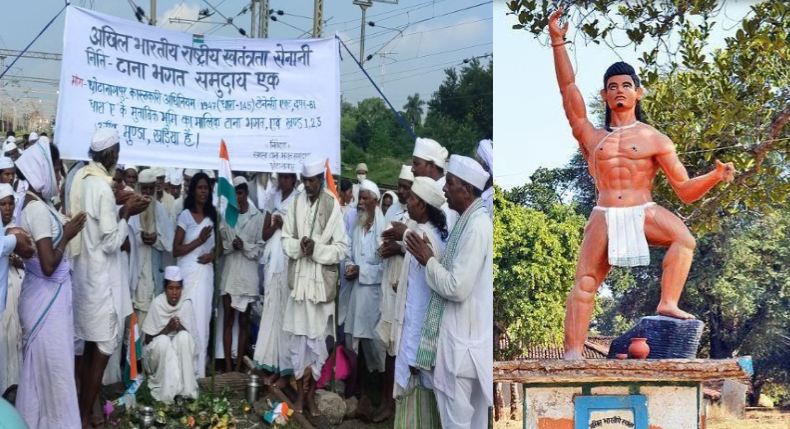
ताना भगत आन्दोलन की शुरुआत वर्ष 1914 ईं. में बिहार में हुई थी। यह आन्दोलन लगान की ऊँची दर तथा चौकीदारी कर के विरुद्ध किया गया था। इस आन्दोलन के प्रवर्तक 'जतरा भगत' थे, जिसे कभी बिरसा मुण्डा, कभी जमी तो कभी केसर बाबा के समतुल्य होने की बात कही गयी है। इसके अतिरिक्त इस आन्दोलन के अन्य नेताओं में बलराम भगत, गुरुरक्षितणी भगत आदि के नाम प्रमुख थे।
आन्दोलन की शुरुआत
भूखे पेट देशभक्ति की मशाल जला रहे हैं टाना भगत
तिरंगे की पूजा और भारत माता की वंदना से अपने दिनचर्या की शुरुआत करने वाले महात्मा गांधी के अनुयायी झाररखंड के आदिवासी टाना भगत पूरी दुनिया में बेमिसाल हैं. अंग्रेजी हुकूमत के खिलाफ विद्रोह का बिगुल फूंकने वाला झारखंड का आदिवासी समुदाय टाना भगत विश्व का इकलौता और अनोखा समुदाय हैं जिसकी रग-रग में राष्ट्र प्रेम का लहू आज भी दौड़ता है. .
आज भी हर घर में हर दिन तिरंगे की पूजा और भारत माता की वंदना होती है. बगैर तिरंगे की पूजा और भारत माता की वंदना किए ये समुदाय अन्न का एक दाना भी ग्रहण नहीं करता है. देश भक्ति का ऐसा जज्बा शायद ही किसी ने कहीं देखा हो. बावजूद इसके आज भी इन्हें भर पेट भोजन नसीब नहीं होता. इसके पीछे की कहानी बड़ी मार्मिक है.
महात्मा गांधी के अनुयायी के तौर पर देश में पहचान रखने वाले आदिवासी टाना भगतों ने 1914 में अपने गुरु जतरा टाना भगत और तुरिया टाना भगत के नेतृत्व में अंग्रेजी हुकूमत के साथ जमींदारी प्रथा का विरोध करना शुरू किया था. वर्तमान झारखंड के रांची, लोहरदगा, गुमला, सिमडेगा और पलामू हिस्से में रहने वाले आदिवासी टाना भगतों के अहिंसावादी आंदोलन की जानकारी महात्मा गांधी को भी मिली थी. फिर गांधी जी से 1921 में टाना भगतों की मुलाकात हुई इसके बाद यह समुदाय पूरी तरह गांधी के रंग में रंग गया.
गांधी जी के आह्वान पर 1921-1922 में असहयोग आंदोलन में शामिल होकर इन्होंने अंग्रेजों को मालगुजारी देना बंद कर दिया. बदले में अंग्रेजी सरकार ने 786 टाना भगत परिवार की 4500 एकड़ जमीन तत्कालीन रातू महाराजा को निर्देश देकर नीलाम करवा दी थी. तब महात्मा गांधी ने इन आजादी के दीवानों को देश के आजाद होने पर जमीन वापसी का भरोसा दिलाया था.
आजादी के बाद गांधी जी की बातों को मानते हुए भारत सरकार ने तत्कालीन बिहार के मुख्यमंत्री श्री कृष्ण सिंह के हाथों 125 परिवार को 1000 एकड़ जमीन वापस भी हुई थी. लेकिन उसके बाद से शेष टाना भगत परिवार के लोग केंद्र सरकार से लेकर बिहार सरकार और वर्तमान झारखण्ड सरकार से गुहार लगा कर थक चुके हैं. नीलाम हुई इनकी जमीन आज तक इन्हें वापस नहीं मिल पाई है. आज आदिवासी टाना भगत परिवार की संख्या झारखण्ड में पांच हजार से भी ज्यादा है.
जिस जमीन के मालिक थे आज उसी जमीन पर मजदूरी करते हैं
आदिवासी टाना भगत परिवार से एक विधायक भी अविभाजित बिहार के समय रहा, गंगा टाना भगत. पूर्व कांग्रेसी विधायक गंगा टाना भगत आज भी अपने समुदाय के हक की लड़ाई लड़ रहे हैं. इसी क्रम में रांची में 25 सितंबर 2012 को कांग्रेस उपाध्यक्ष राहुल गांधी से भी टाना भगतों ने रांची में मुलाकात की थी. उस समय केंद्र में कांग्रेस यूपीए की सरकार थी. लेकिन मामला फिर भी सिफर ही रहा.

2014 में झामुमो नेतृत्व वाली यूपीए सरकार के मुख्यमंत्री हेमंत सोरेन ने भी इन्हें सिर्फ भरोसा ही देने का काम किया था. अब ये टाना भगत समुदाय 15 अगस्त स्वतंत्रता दिवस के पावन मौके पर झारखंड के वर्तमान मुख्यमंत्री रघुवर दास से मिलकर अपनी लंबित जमीन वापसी की मांग करने वाला है.
टाना भगतों की विवशता का आलम आज यह है कि जिस जमीन के ये कभी मालिक थे, आज उसी जमीन पर मजदूरी करते हैं. फिर भी दो जून की रोटी इन्हें नसीब नहीं है. गरीबी और लाचारी आज टाना भगतों की पहचान बन गई है. पलायन और अशिक्षा इनकी किस्मत है. बूढ़ों की जिंदगी खेत में बीत रही है तो जवान टाना भगत पेट की खातिर पलायन को मजबूर हैं. मासूम बच्चे गांव की गलियों में नजर आते हैं. बावजूद इसके राष्ट्र प्रेम और भक्ति से ही आज भी इनकी दिनचर्या की शुरुआत होती है. हर दिन घर के आंगन में सजे तिरंगे की पूजा और भारत माता की वंदना करना नहीं भूलते.
From Wikipedia, the free encyclopedia
Tana Bhagat Movement
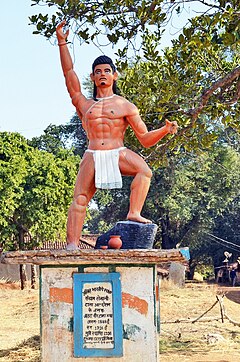
Statue of Veer Jatra Tana Bhagat in Ranchi District, Jharkhand
Duration 1914 - 1919
Location Chhotanagpur district of Bihar, India
Also known as Oraon Tana Bhagat Movement
Type Satyagraha
Organised by Jatra Bhagat and Turia Bhagat
Participants Tana Bhagats, Oraon, Munda
Tana Bhagat Movement (1914-1919) was a tribal uprising of a section of the Tana Bhagats and Oraons under the leadership of Jatra Oraon occurring during the late colonial period in the Chhotanagpur region of Bihar, India.
The Tana Bhagats opposed the taxes imposed on them by the British and they staged a Satyagraha (civil disobedience movement) even before Gandhi's satyagraha movement. They opposed the zamindars, the banias (moneylenders), the missionaries, the Muslims and the British state. Tana Bhagats are followers of Mahatma Gandhi, and believes in Ahimsa(Non-violence).
From Wikipedia, the free encyclopedia
Tipu Sultan
Badshah
Nasib-ud-Daulah
Mir Fateh Ali Bahadur Tipu

Sultan of Mysore
Reign 10 December 1782 – 4 May 1799
Coronation 29 December 1782
Predecessor Hyder Ali
Successor Krishnaraja Wodeyar III (as Wodeyar ruler)
Born 20 November 1750[1]
Devanahalli, present-day Bangalore, Karnataka
Died 4 May 1799 (aged 48)[1]
Srirangapatna, present-day Mandya, Karnataka
Burial
Srirangapatna, present-day Mandya, Karnataka
Spouse Khadija Zaman Begum and 2 or 3 others
Issue Shezada Hyder Ali, Ghulam Muhammad Sultan Sahib and many others
Names
Badshah Nasib-ud-Daulah Sultan Mir Fateh Ali Bahadur Saheb Tipu
House Mysore
Father Hyder Ali
Mother Fatima Fakhr-un-Nisa
Religion Islam
Tipu Sultan (born Sultan Fateh Ali Sahab Tipu, 20 November 1750 – 4 May 1799), also known as Tipu Sahab or the Tiger of Mysore, was the ruler of the Kingdom of Mysore based in South India and a pioneer of rocket artillery. He introduced a number of administrative innovations during his rule, including a new coinage system and calendar, and a new land revenue system which initiated the growth of the Mysore silk industry. He expanded the iron-cased Mysorean rockets and commissioned the military manual Fathul Mujahidin. He deployed the rockets against advances of British forces and their allies during the Anglo-Mysore Wars, including the Battle of Pollilur and Siege of Seringapatam.
Napoleon Bonaparte, the French commander-in-chief, sought an alliance with Tipu Sultan. Both Tipu Sultan and his father used their French-trained army in alliance with the French in their struggle with the British, and in Mysore's struggles with other surrounding powers, against the Marathas, Sira, and rulers of Malabar, Kodagu, Bednore, Carnatic, and Travancore. Tipu's father, Hyder Ali, rose to power and Tipu succeeded him as the ruler of Mysore upon his father's death in 1782. He won important victories against the British in the Second Anglo-Mysore War and negotiated the 1784 Treaty of Mangalore with them after his father died from cancer in December 1782 during the Second Anglo-Mysore War.
Second Anglo-Mysore War

Mural of the Battle of Pollilur on the walls of Tipu's summer palace, painted to celebrate his triumph over the British
Flag of Mysore during the reign of Hyder Ali and Tipu Sultan.
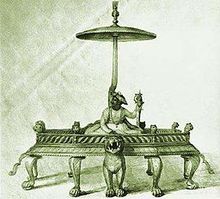
Tipu Sultan seated on his throne (1800), by Anna Tonelli
In 1780, Tipu crowned himself Badshah or Emperor of Mysore, and struck coinage.

Tipu Sultan's summer palace at Srirangapatna, Karnataka
Conflicts with Maratha Confederacy
The Maratha Empire, under its new Peshwa Madhavrao I, regained most of Indian subcontinent, twice defeating Tipu's father, who was forced to accept Maratha Empire as the supreme power in 1764 and then in 1767. In 1767 Maratha Peshwa Madhavrao defeated both Hyder Ali and Tipu Sultan and entered Srirangapatna, the capital of Mysore. Hyder Ali accepted the authority of Madhavrao who gave him the title of Nawab of Mysore.
However Tipu Sultan wanted to escape from the treaty of Marathas and therefore tried to take some Maratha forts in Southern India, which were captured by Marathas in the previous war. Tipu also stopped the tribute to Marathas which was promised by Hyder Ali. This brought Tipu in direct conflict with the Marathas, leading to Maratha–Mysore War Conflicts between Mysore (under Tipu) and Marathas:
Siege of Nargund during February 1785 won by Mysore
Siege of Badami during May 1786 in which Mysore surrendered
Siege of Adoni during June 1786 won by Mysore
Battle of Gajendragad, June 1786 won by Marathas
Battle of Savanur during October 1786 won by Mysore
Siege of Bahadur Benda during January 1787 won by Mysore
Conflict ended with Treaty of Gajendragad in March 1787, as per which Tipu returned all the territory captured by Hyder Ali to Maratha Empire. Tipu agreed to pay four year arrears of tribute which his father Hyder Ali had agreed to pay to Maratha Empire (4.8 million rupees), The Marathas agreed to address Tipu sultan as "Nabob Tipu Sultan Futteh Ally Khan".
The Invasion of Travancore by Sultanate of Mysore (1766–1790)
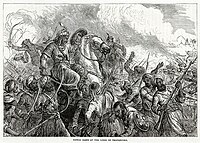
Tipu Sultan at the lines of Travancore.
In 1766, when Tipu Sultan was just 15 years old, he got the chance to apply his military training in battle for the first time, when he accompanied his father on an invasion of Malabar. After the incident- Siege of Tellicherry in Thalassery in North Malabar, Hyder Ali started losing his territories in Malabar. Tipu came from Mysore to reinstate the authority over Malabar. After the Battle of the Nedumkotta (1789–90), due to the monsoon flood, the stiff resistance of the Travancore forces and news about the attack of British in Srirangapatnam he went back.
Third Anglo-Mysore War

Cannon used by Tipu Sultan's forces at the battle of Srirangapatna 1799

Very small Cannon used by Tipu Sultan's forces now in Government Museum (Egmore), Chennai
In 1789, Tipu Sultan disputed the acquisition by Dharma Raja of Travancore of two Dutch-held fortresses in Cochin. In December 1789 he massed troops at Coimbatore, and on 28 December made an attack on the lines of Travancore, knowing that Travancore was (according to the Treaty of Mangalore) an ally of the British East India Company. On account of the staunch resistance by the Travancore army, Tipu was unable to break through the Tranvancore lines and the Maharajah of Travancore appealed to the East India Company for help. In response, Lord Cornwallis mobilised company and British military forces, and formed alliances with the Marathas and the Nizam of Hyderabad to oppose Tipu. In 1790 the company forces advanced, taking control of much of the Coimbatore district. Tipu counter-attacked, regaining much of the territory, although the British continued to hold Coimbatore itself. He then descended into the Carnatic, eventually reaching Pondicherry, where he attempted without success to draw the French into the conflict.

General Lord Cornwallis, receiving two of Tipu Sultan's sons as hostages in the year 1793.
In 1791 his opponents advanced on all fronts, with the main British force under Cornwallis taking Bangalore and threatening Srirangapatna. Tipu harassed the British supply and communication and embarked on a "scorched earth" policy of denying local resources to the invaders. In this last effort he was successful, as the lack of provisions forced Cornwallis to withdraw to Bangalore rather than attempt a siege of Srirangapatna. Following the withdrawal, Tipu sent forces to Coimbatore, which they retook after a lengthy siege.
The 1792 campaign was a failure for Tipu. The allied army was well-supplied, and Tipu was unable to prevent the junction of forces from Bangalore and Bombay before Srirangapatna. After about two weeks of siege, Tipu opened negotiations for terms of surrender. In the ensuing treaty, he was forced to cede half his territories to the allies, and deliver two of his sons as hostages until he paid in full three crores and thirty lakhs rupees fixed as war indemnity to the British for the campaign against him. He paid the amount in two instalments and got back his sons from Madras.
Napoleon's attempt at a junction

Louis XVI receives the ambassadors of Tipu Sultan in 1788. Tipu Sultan is known to have sent many diplomatic missions to France, the Ottoman Empire, Sultanate of Oman, Zand Dynasty and Durrani Empire.
In 1794, with the support of French Republican officers, Tipu helped found the Jacobin Club of Mysore for 'framing laws comfortable with the laws of the Republic'. He planted a Liberty Tree and declared himself Citizen Tipoo.
One of the motivations of Napoleon's Invasion of Egypt was to establish a junction with India against the British. Bonaparte wished to establish a French presence in the Middle East, with the ultimate dream of linking with Tippoo Sahib. Napoleon assured the French Directory that "as soon as he had conquered Egypt, he will establish relations with the Indian princes and, together with them, attack the English in their possessions." According to a 13 February 1798 report by Talleyrand: "Having occupied and fortified Egypt, we shall send a force of 15,000 men from Suez to India, to join the forces of Tipu-Sahib and drive away the English." Napoleon was unsuccessful in this strategy, losing the Siege of Acre in 1799 and at the Battle of Abukir in 1801.
Although I never supposed that he (Napoleon) possessed, allowing for some difference of education, the liberality of conduct and political views which were sometimes exhibited by old Hyder Ali, yet I did think he might have shown the same resolved and dogged spirit of resolution which induced Tipu Sahib to die manfully upon the breach of his capital city with his sabre clenched in his hand.
— Sir Walter Scott, commenting on the abdication of Napoleon Bonaparte in 1814
Death
Fourth Anglo-Mysore War

The Last Effort and Fall of Tipu Sultan by Henry Singleton, c. 1800

The spot in Srirangapatana where Tipu's body was found
Horatio Nelson defeated François-Paul Brueys D'Aigalliers at the Battle of the Nile in Egypt in 1798. Three armies marched into Mysore in 1799—one from Bombay and two British, one of which included Arthur Wellesley. They besieged the capital Srirangapatna in the Fourth Mysore War. There were more than 26,000 soldiers of the British East India Company, approximately 4,000 Europeans and the rest Indians; while Tipu Sultan's forces numbered only 30,000. The betrayal by Tipu Sultan's ministers in working with the British and weakening the walls to make an easy path for the British.
When the British broke through the city walls, French military advisers told Tipu Sultan to escape via secret passages and to fight the rest of the wars from other forts, but he refused.
Tipu Sultan was killed at the Hoally (Diddy) Gateway, which was located 300 yards (270 m) from the N.E. Angle of the Srirangapatna Fort. He was buried the next afternoon at the Gumaz, next to the grave of his father. Many members of the British East India Company believed that Nawab of Carnatic Umdat Ul-Umra secretly provided assistance to Tipu Sultan during the war and sought his deposition after 1799.
Administration
Tipu introduced a new calendar, new coinage, and seven new government departments, during his reign, and made military innovations in the use of rocketry.
Mysorean rockets

Tipu Sultan organised his Rocket artillery brigades known as Cushoons, Tipu Sultan expanded the number of servicemen in the various Cushoons from 1500 to almost 5000. The Mysorean rockets utilised by Tipu Sultan, were later updated by the British and successively employed during the Napoleonic Wars.
Dr APJ Abdul Kalam, the former President of India, in his Tipu Sultan Shaheed Memorial Lecture in Bangalore (30 November 1991), called Tipu Sultan the innovator of the world's first war rocket. Two of these rockets, captured by the British at Srirangapatna, were displayed in the Royal Artillery Museum in London. According to historian Dr Dulari Qureshi Tipu Sultan was a fierce warrior king and was so quick in his movement that it seemed to the enemy that he was fighting on many fronts at the same time. Tipu managed to subdue all the petty kingdoms in the south. He was also one of the few Indian rulers to have defeated British armies.
Tipu Sultan's father had expanded on Mysore's use of rocketry, making critical innovations in the rockets themselves and the military logistics of their use. He deployed as many as 1,200 specialised troops in his army to operate rocket launchers. These men were skilled in operating the weapons and were trained to launch their rockets at an angle calculated from the diameter of the cylinder and the distance to the target. The rockets had twin side sharpened blades mounted on them, and when fired en masse, spun and wreaked significant damage against a large army. Tipu greatly expanded the use of rockets after Hyder's death, deploying as many as 5,000 rocketeers at a time. The rockets deployed by Tipu during the Battle of Pollilur were much more advanced than those the British East India Company had previously seen, chiefly because of the use of iron tubes for holding the propellant; this enabled higher thrust and longer range for the missiles (up to 2 km range).
British accounts describe the use of the rockets during the third and fourth wars. During the climactic battle at Srirangapatna in 1799, British shells struck a magazine containing rockets, causing it to explode and send a towering cloud of black smoke with cascades of exploding white light rising up from the battlements. After Tipu's defeat in the fourth war the British captured a number of the Mysorean rockets. These became influential in British rocket development, inspiring the Congreve rocket, which was soon put into use in the Napoleonic Wars.
Navy
In 1786 Tipu Sultan, again following the lead of his father, decided to build a navy consisting of 20 battleships of 72 cannons and 20 frigates of 62 cannons. In the year 1790 he appointed Kamaluddin as his Mir Bahar and established massive dockyards at Jamalabad and Majidabad. Tipu Sultan's board of admiralty consisted of 11 commanders in service of a Mir Yam. A Mir Yam led 30 admirals and each one of them had two ships. Tipu Sultan ordered that the ships have copper-bottoms, an idea that increased the longevity of the ships and was introduced to Tipu by Admiral Suffren.
Economy
Road development
Tipu Sultan was considered as pioneer of road construction, especially in Malabar, as part of his campaigns, he connected most of the cities by roads.
Foreign relations
Mughal Empire
Both Hyder Ali and Tipu Sultan owed nominal allegiance to the Mughal Emperor Shah Alam II; both were described as Nabobs by the British East India Company in all existing treaties. But unlike the Nawab of Carnatic, they did not acknowledge the overlordship of the Nizam of Hyderabad.
Immediately after his coronation as Badshah, Tipu Sultan sought the investiture of the Mughal emperor. He earned the title "Nasib-ud-Daula" with the heavy heart of those loyal to Shah Alam II. Tipu was a selfdeclared "Sultan" this fact drew towards him the hostility of Nizam Ali Khan, the Nizam of Hyderabad, who clearly expressed his hostility by dissuading the Mughal emperor and laying claims on Mysore. Disheartened, Tipu Sultan began to establish contacts with other Muslim rulers of that period.
Tipu Sultan was the master of his own diplomacy with foreign nations, in his quest to rid India of the East India Company and to ensure the international strength of France. Like his father before him he fought battles on behalf of foreign nations which were not in the best interests of Shah Alam II.
After Ghulam Qadir had Shah Alam II blinded on 10 August 1788, Tipu Sultan is believed to have broken into tears.
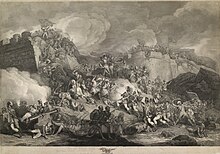
Tipu Sultan's forces during the Siege of Srirangapatna.
After the Fall of Seringapatam in 1799, the blind emperor did remorse for Tipu, but maintained his confidence in the Nizam of Hyderabad, who had now made peace with the British.Afghanistan
After facing substantial threats from the Marathas, Tipu Sultan began to correspond with Zaman Shah Durrani, the ruler of the Afghan Durrani Empire, so they could defeat the British and Marathas. Initially, Zaman Shah agreed to help Tipu, but the Persian attack on Afghanistan's Western border diverted its forces, and hence no help could be provided to Tipu.Ottoman Turkey
In 1787, Tipu Sultan sent an embassy to the Ottoman capital Constantinople, to the Ottoman Sultan Abdul Hamid I requesting urgent assistance against the British East India Company. Tipu Sultan requested the Ottoman Sultan to send him troops and military experts. Furthermore, Tipu Sultan also requested permission from the Ottomans to contribute to the maintenance of the Islamic shrines in Mecca, Medina, Najaf and Karbala.
However, the Ottomans were themselves in crisis and still recuperating from the devastating Austro-Ottoman War and a new conflict with the Russian Empire had begun, for which Ottoman Turkey needed British alliance to keep off the Russians, hence it could not risk being hostile to the British in the Indian theatre.
Due to the Ottoman inability to organise a fleet in the Indian Ocean, Tipu Sultan's ambassadors returned home only with gifts from their Ottoman brothers.
Nevertheless, Tipu Sultan's correspondence with the Ottoman Turkish Empire and particularly its new Sultan Selim III continued till his final battle in the year 1799.Persia and Oman
Like his father before him, Tipu Sultan maintained friendly relations with Mohammad Ali Khan, ruler of the Zand Dynasty in Persia. Tipu Sultan also maintained correspondence with Hamad bin Said, the ruler of the Sultanate of Oman.France

In his attempts to junction with Tipu Sultan, Napoleon annexed Ottoman Egypt in the year 1798. Both Hyder Ali and Tipu sought an alliance with the French, the only European power still strong enough to challenge the British East India Company in the subcontinent. In 1782, Louis XVI concluded an alliance with the Peshwa Madhu Rao Narayan. This treaty enabled Bussy to move his troops to the Isle de France (now Mauritius). In the same year, French Admiral De Suffren ceremonially presented a portrait of Louis XVI to Haidar Ali and sought his alliance.
Napoleon conquered Egypt in an attempt to link with Tipu Sultan. In February 1798, Napoleon wrote a letter to Tipu Sultan appreciating his efforts of resisting the British annexation and plans, but this letter never reached Tipu and was seized by a British spy in Muscat. The idea of a possible Tipu-Napoleon alliance alarmed the British Governor, General Sir Richard Wellesley (also known as Lord Wellesley), so much that he immediately started large scale preparations for a final battle against Tipu Sultan.
Social system
Judicial system
Tipu Sultan appoints Judges from both communities for Hindu and Muslim subjects. Qadi for Muslims and Pandit for Hindu in each province. Upper courts also having similar system.
Moral Administration
Usage of liquor and prostitution were strictly prohibited in his administration. Usage and agriculture of psychedelics, such as Cannabis, were also prohibited.
Polyandry in Kerala was prohibited by Tipu Sultan. He passed a decree for all women to cover their breasts, which was not practised in Kerala in previous era.
The decree is as follows:In the whole of the territories of the Balaghat (i.e., in the country below the ghats) most of the Hindu women go about with their breasts and heads uncovered. This is animal-like. No one of these women should hereafter go out without a fuller robe and a veil.
Religious policy
On a personal level, Tipu was a devout Muslim, saying his prayers daily and paying special attention to mosques in the area. As a Muslim ruler of a predominantly Hindu country, some of his policies have evoked controversy. The mainstream view considers Tipu's administration to have been tolerant. Regular endowments were made during this period to about 156 Hindu temples, including the famed Ranganathaswami Temple at Srirangapatna.
His religious legacy has become a source of considerable controversy in India, with some groups (including Christians and even Muslims) proclaiming him a great warrior for the faith or Ghazi for both religious and political reasons. On one hand, many sources mention the appointment of Hindu officers in Tipu's administration and his land grants and endowments to Hindu temples, which are cited as evidence for his religious tolerance. On the other hand, various sources describe the massacres, imprisonment and forced conversion of Hindus (Kodavas of Coorg, Nairs of Malabar) and Christians (Catholics of Mangalore), the destruction of churches and temples, and the clamping down on Muslims (Mappila of Kerala, the Mahdavia Muslims, the rulers of Savanur and the people of Hyderabad State), which are sometimes cited as evidence for his intolerance.
British accounts
Historians such as Brittlebank, Hasan, Chetty, Habib, and Saletare, amongst others, argue that controversial stories of Tipu Sultan's religious persecution of Hindus and Christians are largely derived from the work of early British authors (who were very much against Tipu Sultan's independence and harboured prejudice against the Sultan) such as James Kirkpatrick and Mark Wilks, whom they do not consider to be entirely reliable and likely fabricated. A. S. Chetty argues that Wilks' account in particular cannot be trusted.
Irfan Habib and Mohibbul Hasan argue that these early British authors had a strong vested interest in presenting Tipu Sultan as a tyrant from whom the British had liberated Mysore. This assessment is echoed by Brittlebank in her recent work where she writes that Wilks and Kirkpatrick must be used with particular care as both authors had taken part in the wars against Tipu Sultan and were closely connected to the administrations of Lord Cornwallis and Richard Wellesley, 1st Marquess Wellesley.
The French were allies of Tipu Sultan. Francois Fidele Ripaud de Montaudevert, a French soldier who fought for Tippu, in his diary entry of 14 January 1799 writes: "I'm disturbed by Tipu Sultan's treatment of these most gentle souls, the Hindus. During the siege of Mangalore, Tipu's soldiers daily exposed the heads of many innocent Brahmins within sight from the fort for the Zamorin and his Hindu followers to see."
Relations with Muslims
During his campaigns of clamping down on groups that helped the British, Tipu Sultan targeted several Muslim groups, including the Mappila Muslims of Malabar, the Mahadevi Muslims, and the Nawab of Savanur and Nizam.
Relations with Hindus
Hindu officers
Tipu Sultan's treasurer was Krishna Rao, Shamaiya Iyengar was his Minister of Post and Police, his brother Ranga Iyengar was also an officer, and Purnaiya held the very important post of "Mir Asaf". Moolchand and Sujan Rai were his chief agents at the Mughal court, and his chief "Peshkar", Suba Rao, was also a Hindu.
Regular endowments to 156 Hindu temples
The Editor of Mysore Gazette reports of correspondence between his court and temples, and his having donated jewellery and deeded land grants to several temples, which he was compelled to for forming alliances with Hindu rulers. Between 1782 and 1799 Tipu Sultan issued 34 "Sanads" (deeds) of endowment to temples in his domain, while also presenting many of them with gifts of silver and gold plate.
The Srikanteswara Temple in Nanjangud still possesses a jeweled cup presented by the Sultan He also gave a greenish linga; to Ranganatha temple at Srirangapatna, he donated seven silver cups and a silver camphor burner. This temple was hardly a stone's throw from his palace from where he would listen with equal respect to the ringing of temple bells and the muezzin's call from the mosque; to the Lakshmikanta Temple at Kalale he gifted four cups, a plate and Spitoon in silver.
Sringeri incident, Maratha sacking, and rebuilding temple
During the Maratha–Mysore War in 1791, a group of Maratha horsemen under Raghunath Rao Patwardhan raided the temple and matha of Sringeri Shankaracharya. They wounded and killed many people, including Brahmins, plundered the monastery of all its valuable possessions, and desecrated the temple by displacing the image of goddess Sarada.
The incumbent Shankaracharya petitioned Tipu Sultan for help. About 30 letters written in Kannada, which were exchanged between Tipu Sultan's court and the Sringeri Shankaracharya, were discovered in 1916 by the Director of Archaeology in Mysore. Tipu Sultan expressed his indignation and grief at the news of the raid:
"People who have sinned against such a holy place are sure to suffer the consequences of their misdeeds at no distant date in this Kali age in accordance with the verse: "Hasadbhih kriyate karma rudadbhir-anubhuyate" (People do [evil] deeds smilingly but suffer the consequences crying)."
He immediately ordered the Asaf of Bednur to supply the Swami with 200 rahatis (fanams) in cash and other gifts and articles. Tipu Sultan's interest in the Sringeri temple continued for many years, and he was still writing to the Swami in the 1790s.
Controversial figure
In light of this and other events, historian B. A. Saletare has described Tipu Sultan as a defender of the Hindu dharma, who also patronised other temples including one at Melkote, for which he issued a Kannada decree that the Shrivaishnava invocatory verses there should be recited in the traditional form. The temple at Melkote still has gold and silver vessels with inscriptions indicating that they were presented by the Sultan. Tipu Sultan also presented four silver cups to the Lakshmikanta Temple at Kalale. Tipu Sultan does seem to have repossessed unauthorised grants of land made to Brahmins and temples, but those which had proper sanads (certificates) were not. It was a normal practice for any ruler, Muslim or Hindu, on his accession or on the conquest of new territory.
Noted for his persecution of Christians, historian Thomas Paul notes that Tipu had shifted his hatred for the British to Catholics of Mangalore and other Christian communities of South India.According to historian Praxy Fernandes, Tipu Sultan was "an enlightened monarch who followed a se cular policy towards his subjects."
C. Hayavadana Rao wrote about Tipu in his encyclopaedic court history of Mysore. He asserted that Tipu's "religious fanaticism and the excesses committed in the name of religion, both in Mysore and in the provinces, stand condemned for all time. His bigotry, indeed, was so great that it precluded all ideas of toleration". He further asserts that the acts of Tipu that were constructive towards Hindus were largely political and ostentatious rather than an indication of genuine tolerance.
In Contrary to the writings of Historian B.A. Saletare, an article published by the New Indian Express in Nov 2016, mentions about the mass murdering of the Mandyam Iyengars. it states as "On the evening of Deepavali that more than 700 Mandyam Iyengars who congregated at Narasimhaswamy temple on the banks of Cauvery at Srirangapatna town, capital of Tipu Sultan, were killed by Tipu's army on charges of colluding with British while supporting Maharani Lakshmammanni, according to Lakshmi Thatchar, a Sanskrit scholar and a researcher.
Persecution of Hindus outside Mysore
Kodagu (Coorg)

A soldier from Tipu Sultan's army, using his rocket as a flagstaff.
Tipu got Runmust Khan, the Nawab of Kurnool, to launch a surprise attack upon the Kodavas who were besieged by the invading Muslim army. 500 were killed and over 40,000 Kodavas fled to the woods and concealed themselves in the mountains.[113] Thousands of Kodavas were seized along with the Raja and held captive at Seringapatam.
Mohibbul Hasan, Prof. Sheikh Ali, and other historians cast great doubt on the scale of the deportations and forced conversions in Coorg in particular. Hassan says that it is difficult to estimate the real number of Kodava captured by Tipu.
In a letter to Runmust Khan, Tipu himself stated:
"We proceeded with the utmost speed, and, at once, made prisoners of 40,000 occasion-seeking and sedition-exciting Kodavas, who alarmed at the approach of our victorious army, had slunk into woods, and concealed themselves in lofty mountains, inaccessible even to birds. Then carrying them away from their native country (the native place of sedition) we raised them to the honour of Islam, and incorporated them into our Ahmedy corps."North Malabar
In 1788, Tipu entered into Malabar to quell a rebellion. Nairs were surrounded with offers of death or circumcision. Chirakkal's Nair Raja who was received with distinctions for surrendering voluntarily was later hanged. Tipu then divided Malabar into districts, with three officers in each district given the task of numbering productive trees, collecting revenue and giving religious orders to Nairs.
During his invasion of Malabar, Tipu forcefully converted over 400,000 Hindus to Islam. He sent a letter on January 19, 1790 to Bekal's governor Budruz Zuman Khan. It says:
Don't you know I have achieved a great victory recently in Malabar and over four lakh Hindus were converted to Islam? I am determined to march against that cursed Raman Nair (Raja of Travancore) very soon. Since I am overjoyed at the prospect of converting him and his subjects to Islam, I have happily abandoned the idea of going back to Srirangapatanam now.
Inscriptions
On the handle of the sword presented by Tipu to Marquess Wellesley was the following inscription:
"My victorious sabre is lightning for the destruction of the unbelievers. Ali, the Emir of the Faithful, is victorious for my advantage, and moreover, he destroyed the wicked race who were unbelievers. Praise be to him (God), who is the Lord of the Worlds! Thou art our Lord, support us against the people who are unbelievers. He to whom the Lord giveth victory prevails over all (mankind). Oh Lord, make him victorious, who promoteth the faith of Muhammad. Confound him, who refuseth the faith of Muhammad; and withhold us from those who are so inclined from the true faith. The Lord is predominant over his own works. Victory and conquest are from the Almighty. Bring happy tidings, Oh Muhammad, to the faithful; for God is the kind protector and is the most merciful of the merciful. If God assists thee, thou will prosper. May the Lord God assist thee, Oh Muhammad, with a mighty great victory."
During a search of his palace in 1795, some gold medals were found in the palace, on which the following was inscribed on one side in Persian: "Of God the bestower of blessings", and the other: "victory and conquest are from the Almighty". These were carved in commemoration of a victory after the war of 1780.
The following is a translation of an inscription on the stone found at Seringapatam, which was situated in a conspicuous place in the fort:
"Oh Almighty God! dispose the whole body of Kafirs (infidels)! Scatter their tribe, cause their feet to stagger! Overthrow their councils, change their state, destroy their very root! Cause death to be near them, cut off from them the means of sustenance! Shorten their days! Be their bodies the constant object of their cares (i.e., infest them with diseases), deprive their eyes of sight, make black their faces (i.e., bring shame), destroy in them organs of speech! Slay them as Shedaud (i .e. the Prince who presumptuously aimed at establishing a paradise for himself and was slain by command of God); drown them as Pharaoh was drowned, and visit them with the severity of the wrath. Oh Avenger! Oh Universal Father ! I am depressed and overpowered, grant me thy assistance."
The Mysore Gazetteer states that this inscription should have been engraved after the Cornwallis Treaty, stating it showed his inveterate rancour and determined hostility to the English.
Persecution of Mangalorean Catholics
Background : Hyder Ali learned that the Mangalorean Catholics had helped the British in their conquest of Mangalore, behaviour he considered treasonous. He summoned a Portuguese officer and several Christian priests from Mangalore to suggest an appropriate punishment to impose on the Mangalorean Catholics for their treachery. The Portuguese officer suggested the death penalty for those Catholics who helped the British as a typical punishment for the betrayal of one's sovereign in Catholic nations. But Hyder Ali exhibited a diplomatic stance and instead imprisoned those Christians who were condemned for treachery.

The Jamalabad fort route. Mangalorean Catholics had travelled through this route on their way to Seringapatam
Tipu is considered to be anti-Christian by several historians, while Alan Machado in his book 'Slaves of Sultans', argues that by expelling Christian priests, Tipu was only following precedent set by European rivals. Historian J. B. Prashant More in his paper 'Tipu Sultan and the Christians' argues that Tipu's encounters and dealings with the Christians of both European and Indian origin were in accordance with the spirit of his times and also had a political dimension. The captivity of Mangalorean Catholics at Seringapatam, which began on 24 February 1784 and ended on 4 May 1799, remains the most disconsolate memory in their history.
Soon after the Treaty of Mangalore in 1784, Tipu gained control of Canara. He issued orders to seize the Christians in Canara, confiscate their estates, and deport them to Seringapatam, the capital of his empire, through the Jamalabad fort route. However, there were no priests among the captives. Together with Fr. Miranda, all the 21 arrested priests were issued orders of expulsion to Goa, fined Rupees 200,000, and threatened with death by hanging if they ever returned.
Tipu ordered the destruction of 27 Catholic churches. Among them included the Church of Nossa Senhora de Rosario Milagres at Mangalore, Fr Miranda's Seminary at Monte Mariano, Church of Jesu Marie Jose at Omzoor, Chapel at Bolar, Church of Merces at Ullal, Imaculata Conceicão at Mulki, San Jose at Perar, Nossa Senhora dos Remedios at Kirem, Sao Lawrence at Karkal, Rosario at Barkur, Immaculata Conceição at Baidnur. All were razed to the ground, with the exception of The Church of Holy Cross at Hospet, owing to the friendly offices of the Chauta Raja of Moodbidri.
According to Thomas Munro, a Scottish soldier and the first collector of Canara, around 60,000 people, nearly 92 percent of the entire Mangalorean Catholic community, were captured; only 7,000 escaped. Francis Buchanan gives the numbers as 70,000 captured, from a population of 80,000, with 10,000 escaping. They were forced to climb nearly 4,000 feet (1,200 m) through the jungles of the Western Ghat mountain ranges. It was 210 miles (340 km) from Mangalore to Seringapatam, and the journey took six weeks. According to British Government records, 20,000 of them died on the march to Seringapatam.
According to Mr. Silva of Gangolim, a survivor of the captivity, if a person who had escaped from Seringapatam was found, the punishment under the orders of Tipu was the cutting off of the ears, nose, feet and one hand. Gazetteer of South India describes Tipu Sultan forcibly circumcising 30,000 West Coast Christians and deporting them to Mysore.
Tipu Sultan is also admired as a hero in Pakistan. Pakistan's Prime Minister Imran Khan has said that he admires Tipu Sultan as a freedom fighter.
Family

The mausoleum housing Tipu's tomb is another example of Islamic architecture. Tipu's flag is in the foreground.
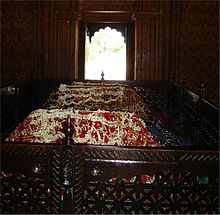
The tomb of Tipu Sultan at Srirangapatna. Tipu's tomb is adjacent to his mother's and father's graves.
Tipu had several wives. One of them, Sindh Sahiba, was quite renowned for her beauty and intelligence and whose grandson was Sahib Sindh Sultan also known as His Highness Shahzada Sayyid walShareef Ahmed Halim-az-Zaman Khan Sultan Sahib. Tipu's family was sent to Calcutta by the British. Many other descendants continue to live in Kolkata.
His sons are:
Shahzada Sayyid walShareef Hyder Ali Khan Sultan (1771 – 30 July 1815)
Shahzada Sayyid walShareef Abdul Khaliq Khan Sultan (1782 – 12 September 1806)
Shahzada Sayyid walShareef Muhi-ud-din Ali Khan Sultan (1782 – 30 September 1811)
Shahzada Sayyid walShareef Mu'izz-ud-din Ali Khan Sultan (1783 – 30 March 1818)
Shahzada Sayyid walShareef Mi'raj-ud-din Ali Khan Sultan (1784? – ?)
Shahzada Sayyid walShareef Mu'in-ud-din Ali Khan Sultan (1784? – ?)
Shahzada Sayyid walShareef Muhammad Yasin Khan Sultan (1784 – 15 March 1849)
Shahzada Sayyid walShareef Muhammad Subhan Khan Sultan (1785 – 27 September 1845)
Shahzada Sayyid walShareef Muhammad Shukrullah Khan Sultan (1785 – 25 September 1830)
Shahzada Sayyid walShareef Sarwar-ud-din Khan Sultan (1790 – 20 October 1833)
Shahzada Sayyid walShareef Muhammad Nizam-ud-din Khan Sultan (1791 – 20 October 1791)
Shahzada Sayyid walShareef Muhammad Jamal-ud-din Khan Sultan (1795 – 13 November 1842)
Shahzada Sayyid walShareef Munir-ud-din Khan Sultan (1795 – 1 December 1837)
His Highness Shahzada Sir Sayyid walShareef Ghulam Muhammad Sultan Sahib, KCSI (March 1795 – 11 August 1872)
Shahzada Sayyid walShareef Ghulam Ahmad Khan Sultan (1796 – 11 April 1824)
Shahzada Sayyid walShareef Hashmath Ali Khan Sultan (expired at birth)
Sword and tiger
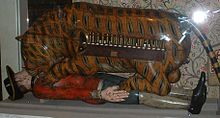
Tipu Sultan's Tiger. Victoria and Albert Museum, London
Tipu Sultan had lost his sword in a war with the Nairs of Travancore during the Battle of the Nedumkotta (1789), in which he was forced to withdraw due to the severe joint attack from the Travancore army and British army. The Nair army under the leadership of Raja Kesavadas again defeated the army of Tipu near Aluva. The Maharaja, Dharma Raja, gave the famous sword to the Nawab of Arcot, from whom the sword was taken away forcibly by the British after annexing Arcot and sent to London. The sword was on display at the Wallace Collection, No. 1 Manchester Square, London.
Tipu was commonly known as the Tiger of Mysore and adopted this animal as the symbol (bubri/babri) of his rule. It is said that Tipu Sultan was hunting in the forest with a French friend. They came face to face with a tiger there. The tiger first pounced on the French soldier and killed him. Tipu's gun did not work, and his dagger fell on the ground as the tiger jumped on him. He reached for the dagger, picked it up, and killed the tiger with it. That earned him the name "the Tiger of Mysore". He even had French engineers build a mechanical tiger for his palace. The device, known as Tipu's Tiger, is on display in the Victoria and Albert Museum, London. Not only did Tipu place relics of tigers around his palace and domain, but also had the emblem of a tiger on his banners and some arms and weapons. Sometimes this tiger was very ornate and had inscriptions within the drawing, alluding to Tipu's faith - Islam. Historian Alexander Beatson reported that "in his palace was found a great variety of curious swords, daggers, fusils, pistols, and blunderbusses; some were of exquisite workmanship, mounted with gold, or silver, and beautifully inlaid and ornamented with tigers' heads and stripes, or with Persian and Arabic verses".
The last sword used by Tipu in his last battle, at Sri Rangapatnam, and the ring worn by him were taken by the British forces as war trophies. Till April 2004, they were kept on display at the British Museum London as gifts to the museum from Maj-Gen Augustus W.H. Meyrick and Nancy Dowager. At an auction in London in April 2004, Vijay Mallya purchased the sword of Tipu Sultan and some other historical artefacts, and brought them back to India.
In October 2013, another sword owned by Tipu Sultan and decorated with his babri (tiger stripe motif) surfaced and was auctioned by Sotheby's. It was purchased for £98,500 by a telephone bidder.
Tipu Sultan Jayanti
In 2015, the Government of Karnataka, under the leadership of then Chief Minister Siddaramaiah from the Congress party, began to celebrate Tipu's birth anniversary as the "Tipu Sultan Jayanti". The Congress regime declared it as an annual event to be celebrated on 20 November. It was officially celebrated in Karnataka initially by the Minority Welfare department, and later by the Kannada & Culture department. However, on 29 July 2019, the next Chief Minister B. S. Yediyurappa, who belongs to the Bharatiya Janata Party (BJP), ordered the celebrations cancelled, saying: "Legislators from Kodagu had highlighted incidents of violence during Tipu Jayanti." The previous Congress government’s decision to organise the Jayanti was also seen as the party’s move to pander to the minorities.
Objecting against the cancellation of the celebrations, the previous Chief Minister Siddaramaiah said: "BJP has cancelled it because of their hatred towards minorities. It’s a big crime. He [Tipu] was a king of Mysore and fought against the British [as] a freedom fighter. It was during his time when the foundation was laid for the Krishna Raja Sagara dam. He also tried to improve industry, agriculture and trade". The previous year, not a single JD(S) leader, including the then chief minister HD Kumaraswamy, attended the event, turning it into a fiasco.
The Lok Sabha Congress leader, Mallikarjun Kharge, also earlier criticized BJP and RSS for their opposition against holding the celebrations, and asked: "When RSS can celebrate Nathuram Godse, can't we celebrate Tipu Sultan?”
In fiction
He has a role in G.A.Henty's 1896 book The Tiger of Mysore, and is also mentioned in Henty's 1902 At the Point of the Bayonet, which deals with much the same period.
In Jules Verne's Mysterious Island, Captain Nemo is described as Tipu's nephew.
Tipu's life and adventures were the central theme of a short-running South Indian television series The Adventures of Tipu Sultan, and of a more popular national television series The Sword of Tipu Sultan.
He was portrayed by Paidi Jairaj in the 1959 Indian historical drama film Tipu Sultan, directed by Jagdish Gautam.
Naseem Hijazi's novels Muazam Ali and Aur Talvar Ṭūṭ Gaye (And The Sword Broke) describe Tipu's wars.
Wilkie Collins's novel The Moonstone contains an account of Tipu and the fall of Srirangapatna in the prologue.
In The Surprising Adventures of Baron Munchausen by Rudolf Erich Raspe, Munchausen vanquishes Tipu near the end of the novel.
Sharpe's Tiger is a novel by Bernard Cornwell in which Napoleonic–era British soldier Richard Sharpe fights at Seringapatam, later killing Tipu.
Tipu appears as a "Great Person" in the video games, Sid Meier's Civilization: Revolution and Sid Meier's Civilization IV.






https://www.livehistoryindia.com/history-daily/2019/06/16/u-tirot-singh-meghalayas-fight-for-freedom
Umaji Naik Khomene

Umaji Naik Khomane, also known as Raje Umaji Naik, was a prominent Indian revolutionary and freedom fighter from Maharashtra, celebrated for his resistance against British colonial rule in the early 19th century. Belonging to the Ramoshi-Berad community, he led a significant rebellion against the British East India Company, earning a lasting legacy as a symbol of defiance and social justice. Below is a comprehensive account of his life, contributions, and legacy.
Early Life and Background
- Community: Umaji Naik was born into the Ramoshi-Berad community, a nomadic group historically associated with roles as warriors, night patrol guards, and intelligence gatherers during the Maratha Empire. The Ramoshis migrated from Telangana to Maharashtra and were known for their martial skills and loyalty to Maratha rulers, particularly during the reign of Chhatrapati Shivaji Maharaj.
- Socio-Economic Context: After the fall of the Maratha Empire following the Third Anglo-Maratha War (1817–1818), the British East India Company annexed Maratha territories, including Pune. The imposition of heavy taxes, discriminatory laws, and the British Criminal Tribes Act of 1871 (which later branded the Ramoshi-Berad as a "criminal tribe") marginalized communities like the Ramoshis, stripping them of their traditional roles and livelihoods. This socio-economic oppression fueled Umaji Naik's rebellion.
- Birth and Early Life: While exact details about his birth date and place are scarce, Umaji Naik is believed to have been born around the late 18th or early 19th century in Maharashtra, likely in the Pune region. Historical records are limited due to the oral tradition of his community's history and British suppression of such narratives.
Role as a Freedom Fighter
Umaji Naik emerged as a leader of the Ramoshi-Berad community and other marginalized groups, organizing them to resist British rule. His rebellion was both a fight for independence and a response to the socio-economic injustices faced by his people.
- Rebellion Against the British (1826–1832):
- Context: After the British defeated the Marathas, they imposed harsh policies, including heavy taxation and the disarmament of local communities. The Ramoshis, who had served as guards and soldiers under the Marathas, were left jobless and stigmatized. Umaji Naik rallied these disaffected groups to challenge British authority.
- Guerrilla Warfare: Umaji Naik adopted guerrilla tactics, leveraging his knowledge of the rugged terrain of Maharashtra’s Sahyadri mountains. He led raids on British outposts, looted their treasuries, and disrupted their administrative control. His attacks targeted symbols of British oppression, such as tax collectors and revenue offices.
- Charter of Demands (1830): In a bold move, Umaji Naik issued a charter of demands to the British, seeking the restoration of land rights, employment opportunities, and dignity for his community. He demanded that the Ramoshis be employed as hill watchmen and fort guards, roles they had historically held. When the British rejected these demands, he escalated his rebellion, declaring himself a "Raja" and issuing a manifesto to overthrow British rule.
- Support Base: Umaji Naik mobilized not only the Ramoshi-Berad but also other tribal and marginalized communities, such as the Kolis and Bhils, creating a broad-based resistance movement. His leadership inspired many to join the fight against colonial exploitation.
- Key Actions:
- He organized attacks on British-controlled villages and towns, redistributing looted wealth to the poor, which earned him a Robin Hood-like reputation among locals.
- His forces operated from the forests and hills, making it difficult for the British to capture him.
- Umaji Naik’s rebellion posed a significant challenge to British authority in western Maharashtra, particularly in the Pune and Satara regions.
Capture and Execution
- British Response: The British, alarmed by Umaji Naik’s growing influence, launched a manhunt to capture him. They offered rewards for information leading to his arrest and deployed troops to suppress his rebellion.
- Betrayal and Capture: In 1831, Umaji Naik was betrayed by some locals, possibly due to the British reward or internal rivalries. He was captured near Jejuri, a town in Pune district.
- Execution: On February 3, 1832, Umaji Naik was executed by hanging in Pune. The British publicly displayed his execution to deter other rebels, but his martyrdom only strengthened the resolve of his followers and inspired future resistance movements.
Legacy and Impact
- Symbol of Resistance: Umaji Naik is remembered as a fearless leader who fought against colonial oppression and championed the rights of marginalized communities. His rebellion was one of the earliest organized resistances against British rule in Maharashtra, predating the larger 1857 Revolt.
- Cultural Impact: In Maharashtra, Umaji Naik is celebrated as a folk hero, particularly among the Ramoshi-Berad and other tribal communities. His life and struggle are recounted in folk songs, ballads, and oral traditions.
- Recognition:
- The Government of Maharashtra honors his legacy through various memorials and tributes. For instance, a statue of Umaji Naik stands in Pune, and his name is associated with schemes for the upliftment of the Ramoshi community.
- He is recognized as a freedom fighter in Indian history, with his contributions highlighted in regional histories of Maharashtra’s anti-colonial struggles.
- Social Justice: Umaji Naik’s fight was not only against foreign rule but also for the dignity and rights of oppressed communities. His rebellion highlighted the intersection of caste, class, and colonial exploitation, making him a symbol of resistance against both external and internal injustices.
Historical Significance
Umaji Naik’s rebellion was a precursor to later tribal and peasant uprisings against British rule, such as the Bhil and Koli revolts. His use of guerrilla tactics and mobilization of marginalized groups set a precedent for future freedom fighters. While his movement was localized, it contributed to the broader narrative of resistance that culminated in India’s independence in 1947.
Sources and Further Reading
- Historical Records: Much of Umaji Naik’s story is preserved in oral traditions and limited colonial records. British accounts often portrayed him as a bandit, while Indian narratives celebrate him as a revolutionary.
- Books and Articles: Works on Maharashtra’s freedom struggle, such as those by historians like G.S. Sardesai and regional Marathi literature, provide insights into his life.
- Web Resources: Websites like those maintained by the Government of Maharashtra or cultural organizations in Pune offer details on his contributions.
Conclusion
Unniyarcha (sometimes spelled Unniarcha) is a popular legendary warrior and heroine mentioned in the Vadakkan Pattukal, the old ballads of North Malabar. She was from famous Thiyyar Chekavar family of Puthooram Veed at Kadathanad.Her father's name was kannappa chekaver.She is believed to have lived in northern part of Kerala, India during the 16th century. She is a popular character in Kerala's folklore remembered for her valour and skills in martial art of Kalaripayattu.She was trained in kalari at the age of seven.
History
Attummanammel Unniyarcha was from the famous Puthooram Veedu of North Malabar. Unniyarcha was married to Attumanammel Kunjiraman.Attamael kumjiram had a kalari known as Puthussery kalari which is still there at kannur district of kerala. She was the sister of Aromal Chekavar and Unnikannan. Unniyarcha spurned Chandu Chekavar (or Chanthu)love for her, which led to the murder of her brother Aromal by Chanthu chekavar. Later, Aromalunni, the son of Unniyarcha, took revenge against Chanthu. Unniyarcha is praised for her bravery and beauty and chronicles have to this day kept the legend alive.
In popular culture
The legend of Unniyarcha has been made into films such as Unniyarcha (1961), Oru Vadakkan Veeragatha (1989), and Puthooramputhri Unniyarcha (2002). A television serial titled Unniyarcha was aired in Asianet (2006).Her character was also shown in Veeram (2016)
Udaiya Chamar

Udaiya Chamar (late 18th–early 19th century) was an early Indian freedom fighter and Dalit warrior from the Chamar community, renowned for his fierce resistance against British colonial forces in the pre-1857 era. As a loyal associate of the Nawab of Chhatari, he symbolized the unsung contributions of Dalit and Bahujan communities to India's independence struggle. His acts of bravery, including single-handedly killing hundreds of British soldiers, are celebrated in Dalit folklore and historical narratives, though detailed records remain sparse due to the marginalization of subaltern voices. Below is a comprehensive overview of his life, contributions, and legacy, drawn from available historical accounts.
Early Life and Background
- Birth and Origins: Specific details about Udaiya Chamar's birth date and early years are not well-documented, reflecting the limited archival focus on Dalit figures from the era. He was born in the late 18th century in the Chhatari region (present-day Ghazipur district, Uttar Pradesh), into the Chamar community—a Scheduled Caste group historically associated with leatherwork and facing severe caste-based oppression.
- Family and Influences: Udaiya rose as a trusted warrior and close friend of Nawab Nahar Khan of Chhatari, a Muslim Rajput ruler and staunch opponent of British expansionism. This alliance highlights cross-community solidarity against colonial rule, with Udaiya serving as a key military aide in the Nawab's court. His background as a Dalit underscores the broader participation of marginalized groups in early anti-colonial resistance, often overlooked in mainstream histories.
Role in the Freedom Struggle
- Context of Resistance: Udaiya's activism occurred during the early phases of British consolidation in northern India, amid policies like land revenue reforms and subsidiary alliances that encroached on princely states like Chhatari. The Nawab's opposition to these "wrong policies" (as described in contemporary accounts) fueled localized revolts, predating the more famous 1857 Rebellion.
- Key Battles (1804–1807):
- 1804 Revolt: Udaiya, enraged by British interference and exploitative measures, led attacks alongside the sons of Nawab Nahar Khan. He is credited with single-handedly killing numerous British soldiers—accounts vary from dozens to hundreds—disrupting colonial outposts and supply lines in the Ghazipur-Chhatari area. His guerrilla-style tactics earned him notoriety among the British, who viewed him as a formidable threat.
- 1807 Capture and Martyrdom: After sustained resistance, Udaiya was captured by British forces. He was tried summarily and hanged in 1807 as a rebel, becoming one of the earliest documented Dalit martyrs against colonial rule. His execution was part of a broader British strategy to suppress princely and subaltern uprisings through public hangings to instill fear.
- Military Prowess: Described as a "beloved warrior" and the Nawab's favorite, Udaiya's valor was acknowledged even by his adversaries. He fought without formal arms, relying on local knowledge and sheer determination, embodying the spirit of grassroots resistance.
Contributions and Significance
- Dalit Empowerment: Udaiya's story challenges the narrative that Dalits were passive or pro-British during the freedom struggle. As a Chamar leader, he exemplified how oppressed castes actively resisted both colonial and caste hierarchies, inspiring later Dalit movements.
- Broader Impact: His actions weakened British control in eastern Uttar Pradesh temporarily and contributed to the cumulative pressure that led to larger revolts like 1857. He is often grouped with other early Bahujan heroes, such as Tilka Manjhi and Matadin Valmiki, in Dalit historiographies.
- Literary and Cultural Depictions: Udaiya features in regional folklore, ballads, and oral traditions of Ghazipur, where he is portrayed as a symbol of unyielding courage. Modern retellings appear in Dalit literature and media, emphasizing his role in "Bahujan" (oppressed majority) narratives.
Legacy and Recognition
- Posthumous Remembrance: Despite his heroism, Udaiya remained largely forgotten in official histories until Dalit scholars and activists revived his story in the late 20th century. Articles in publications like Navodaya Times (2016) and Dalit Dastak (2018) highlighted him as an "unsung hero," countering upper-caste centric accounts of independence.
- Modern Tributes: In Uttar Pradesh, local commemorations and Dalit cultural events honor him annually. His narrative aligns with Ambedkarite efforts to reclaim Dalit history, and he is invoked in discussions on caste and colonialism. No major memorials exist, but community-led initiatives, including books like those on "Dalit Studies in Higher Education," keep his memory alive.
- Challenges in Documentation: Fact-checks have clarified misattributions, such as viral photos falsely claiming to depict him (actually of unrelated figures like a Kaibarta fisherman). This underscores the need for authentic sourcing in subaltern histories.
Key Contributions Summarized
| Aspect | Details |
|---|---|
| Timeline | Active 1804–1807; hanged on 19 September 1807 |
| Affiliation | Loyal to Nawab Nahar Khan of Chhatari |
| Major Acts | Killed hundreds of British soldiers in guerrilla attacks; disrupted colonial expansion |
| Community Impact | Pioneered Dalit-Bahujan resistance; symbol of cross-caste anti-colonial alliance |
| Historical Era | Pre-1857; early British subsidiary alliances period |
Udaiya Chamar's life stands as a testament to the bravery of Dalit warriors in India's long freedom saga, reminding us that independence was forged not just by elites but by the marginalized who bore the brunt of oppression. His story, though brief in records, resonates as a call for inclusive historiography.
Biography of a Remarkable Woman (1892-1992)

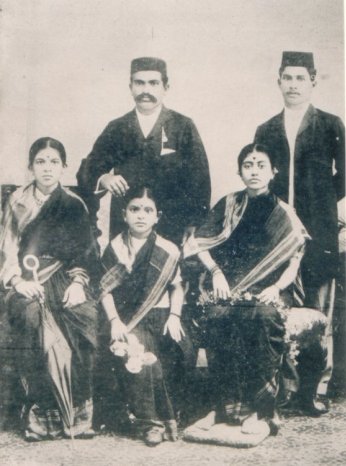
 Umabai Kundapur
Umabai Kundapur
Uda Devi Pasi

Uda Devi Pasi (1830–1857), also known as Uda Devi, was a prominent Dalit freedom fighter from the Pasi community during India's First War of Independence in 1857. Often hailed as a "Dalit Veerangana" (brave Dalit woman warrior), she symbolized resistance against British colonial rule and caste-based oppression. Belonging to a community stigmatized as a "criminal caste" under British laws like the Criminal Tribes Act of 1871, Uda Devi's story highlights the overlooked contributions of marginalized groups to the revolt. She fought alongside her husband and led an all-women battalion, becoming an enduring icon for Dalit and women's empowerment.
Early Life
Uda Devi was born on June 30, 1830, in Ujariya village (now part of Gomti Nagar) in Lucknow district, Uttar Pradesh, into a Pasi family—a Scheduled Caste community traditionally involved in toddy-tapping and facing severe social discrimination. Little is documented about her childhood, but she married Makka Pasi, a skilled wrestler and soldier in the army of Begum Hazrat Mahal, the wife of the deposed Nawab Wajid Ali Shah of Awadh. The couple lived in Lucknow, where Uda Devi honed her marksmanship skills, possibly influenced by her husband's military background. Her life reflected the resilience of Pasi women amid colonial exploitation and caste hierarchies.
Role in the 1857 Revolt
The Indian Rebellion of 1857 erupted as a widespread uprising against British East India Company rule, triggered by grievances like the annexation of Awadh and cultural insensitivities (e.g., greased cartridges). Uda Devi played a pivotal role in the defense of Lucknow, aligning with Begum Hazrat Mahal's forces. She formed and commanded the "Dalit Veeranganas"—an all-women battalion of Pasi and other Dalit fighters—who provided crucial support to the rebel army.
Her most legendary exploit occurred during the Battle of Sikandar Bagh on November 16, 1857. As British forces, led by Sir Colin Campbell, advanced to recapture Lucknow, Uda Devi climbed a tall pipal tree near the Sikandar Bagh gardens for a strategic vantage point. Armed with two heavy cavalry pistols (looted from British armories), she rained fire on the troops from above, killing or wounding over a dozen soldiers. Eyewitness accounts from British officer William Forbes-Mitchell noted the unusual downward trajectories of bullets, later attributing them to snipers in trees. Uda Devi's precision and bravery disrupted the assault, buying time for Indian forces. She fought not just for independence but also against the systemic erasure of Dalit voices in the freedom struggle.
Death
Uda Devi was fatally shot during the intense crossfire at Sikandar Bagh on November 16, 1857, at the age of 27. Her body was discovered beside the tree, with one pistol still loaded and unused ammunition in her pouch, underscoring her unyielding determination. She died shortly after learning of her husband Makka Pasi's death in the same battle, reportedly vowing to avenge him by intensifying her fight. Her martyrdom marked the end of a fierce stand that delayed British victory in Lucknow.
Legacy and Cultural Impact
Uda Devi's story was initially suppressed in mainstream histories, which often centered upper-caste figures like Rani Lakshmibai, sidelining Dalit contributions. However, Dalit oral traditions and later scholarship revived her narrative, portraying her as a symbol of intersectional resistance—against colonialism, casteism, and patriarchy.
- Commemorations: The Pasi community annually gathers at her martyrdom site in Sikandar Bagh on November 16 to honor her with memorials and cultural programs. Today, November 16, 2025, marks her 168th death anniversary, with events likely held across Uttar Pradesh.
- Government Recognition: In 2021, under the Azadi Ka Amrit Mahotsav initiative, the Uttar Pradesh government named a women's battalion of the Provincial Armed Constabulary after her, alongside units for Rani Avantibai and Jhalkaribai, promoting her as a role model for female police officers.
- Modern Influence: She inspires Dalit literature, feminist movements, and social justice campaigns. Books like Women Heroes and Dalit Assertion in North India by Badri Narayan detail her as a catalyst for Dalit assertion. Statues and plaques in Lucknow, including at Gomti Nagar, keep her memory alive. Her tale challenges caste narratives, emphasizing how Pasi warriors like "Maharaja" Bijli Pasi (a legendary ancestor credited with founding Bijnor) contributed to regional history.
Veera Pasi
Veera Pasi (also known as Vira Pasi or Shivdeen Pasi) was a valiant Dalit freedom fighter from Uttar Pradesh, renowned for his indomitable courage and guerrilla warfare tactics during India's First War of Independence in 1857. Hailing from the Pasi community—a Scheduled Caste group historically known for their martial prowess (the term "Pasi" derives from "pasi," meaning "one who holds a sword")—Veera Pasi exemplified the subaltern resistance against British colonial rule. Often overlooked in mainstream histories dominated by upper-caste narratives, he remains a symbol of Dalit valor and sacrifice, inspiring generations to reclaim marginalized contributions to the freedom struggle.
Early Life and Background
- Birth and Family: Born on November 11, 1835, in Lodhawari village, Raebareli district, Uttar Pradesh (then part of the North-Western Provinces under British India). His original name was Shivdeen Pasi. Orphaned at a young age, he was raised by his sister Batsiya in the nearby village of Bhira Govindpur (in Dalmau tehsil, Raebareli). This early hardship forged his resilient spirit, turning him into a robust and agile youth skilled in combat.
- Community Roots: As a member of the Pasi community, Veera embodied their tradition of loyalty and swordsmanship. The Pasis were often employed as guards and warriors by local rulers, a role Veera embraced early on. His life reflects the broader socio-economic marginalization faced by Dalits under both pre-colonial and British systems, fueling his revolutionary zeal.
Military Service and Rise to Prominence
- Enlistment: In his youth, Veera joined the army of Rana Beni Madhav Singh (also known as Madho Singh), the ruler of the Shankarpur estate in Raebareli. Madho Singh was the grandson of Maharaja Ranjit Singh, the legendary Sikh emperor, which connected Veera to a legacy of resistance against foreign domination.
- Skills and Reputation: Renowned for his archery, sword-fighting, and horsemanship, Veera quickly rose to become a trusted commander. His moniker "Veera" (meaning "brave" or "hero") was earned through feats of daring, including protecting the estate from bandits and rival forces. He symbolized the Pasi community's unyielding loyalty to their patrons while harboring deep resentment toward British exploitation, such as heavy taxation and land grabs that impoverished rural folk.
Role in the 1857 Revolt
The Indian Rebellion of 1857, sparked by sepoys in Meerut and spreading like wildfire across northern India, found a fierce ally in Veera Pasi. Shankarpur became a hotbed of rebellion, with Madho Singh declaring open defiance against the British.
- Key Contributions:
- Guerrilla Warfare: Veera led daring raids on British outposts, supply lines, and garrisons in Raebareli and surrounding areas. His tactics—ambushes in dense forests, night assaults, and hit-and-run maneuvers—struck terror into British ranks, earning him a fearsome reputation. British officers reportedly shuddered at the mention of "Veera Pasi," as his strikes disrupted their control over Awadh and the Gangetic plains.
- Alliance with Rebel Leaders: He coordinated with iconic revolutionaries like Nana Sahib (in Kanpur), Rani Lakshmibai (in Jhansi), Tatya Tope, and Maulvi Ahmadullah Shah. These alliances amplified the revolt's reach, blending Dalit ground-level fighters with princely uprisings.
- Jailbreak Heroics: In a legendary episode, Veera orchestrated the daring escape of his patron, Madho Singh, from British custody. Disguised and using insider intelligence, he and his men stormed the prison, freeing Madho and several rebel comrades. This act not only boosted rebel morale but also prolonged resistance in Shankarpur for months.
- Defense of Shankarpur: Returning to his base, Veera fortified the estate against British reprisals. He trained local Pasi and other Dalit volunteers, turning them into a formidable irregular force that harried colonial troops.
Despite the revolt's eventual suppression—due to British reinforcements and internal divisions—Veera's efforts delayed their advance in the region, contributing to the broader narrative of 1857 as a pan-Indian uprising rather than a mere "sepoy mutiny."
Capture, Martyrdom, and Legacy
- Death: Veera was captured in late 1857 during a fierce skirmish near Shankarpur. Tried summarily by a British military court for treason, he was executed by hanging—probably on 10 December 1857 in Raebareli or Lucknow—refusing to beg for mercy and defiantly proclaiming his loyalty to India's freedom. Exact records of his trial are scarce, as British archives often downplayed subaltern roles to minimize the revolt's scale.
- Martyrdom's Impact: His sacrifice galvanized the Pasi community, who view him as a "subaltern braveheart." Post-1857, British reprisals devastated Dalit villages, but Veera's legend endured through oral histories, folk songs, and community gatherings.
Recognition and Modern Relevance
- Historical Oversight: Like many Dalit heroes (e.g., Uda Devi Pasi, who sniped British soldiers from a tree in Lucknow), Veera's story was sidelined by colonial and post-colonial historiography favoring elite figures. Recent scholarship and Dalit movements have reclaimed him as a symbol of inclusive nationalism.
- Government Honors:
- Uttar Pradesh Chief Minister Yogi Adityanath has invoked Veera in speeches on Pasi heritage, linking him to the beautification of Maharaja Bijli Pasi Fort (a Pasi landmark) and plans for light-and-sound shows to educate youth about warriors like Veera, Lakhan Pasi, and Cheeta Pasi.
- In February 2025, Congress leader Rahul Gandhi unveiled Veera's statue in Raebareli, emphasizing Dalit contributions to 1857 and critiquing narratives that diminish them.
- Cultural Depictions: Featured in Hindi documentaries (e.g., a 2017 YouTube video by Dalit Dastak titled "आजादी के नायक: वीरा पासी से अंग्रेजों की रुह कांपती थी") and community events like Pasi Swabhiman Diwas (November 16, tied to Uda Devi's martyrdom). His birth anniversary (November 11) is marked by tributes across Uttar Pradesh.
- Broader Significance: Veera Pasi underscores the 1857 revolt's diverse character—uniting peasants, Dalits, Muslims, and princes against imperialism. In today's India, he inspires affirmative action, caste equity, and the fight against historical erasure, reminding us that freedom was won by the marginalized as much as the mighty.
Veera Pasi's life was short but blazing—a testament to how ordinary swordsmen from oppressed communities became extraordinary revolutionaries. As one chronicler notes, "His courage shook the foundations of empire," proving that true veerata (bravery) knows no caste.










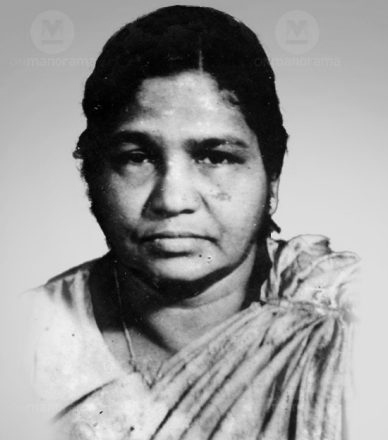




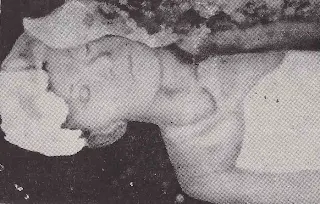







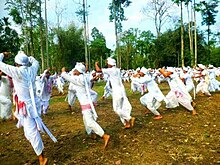

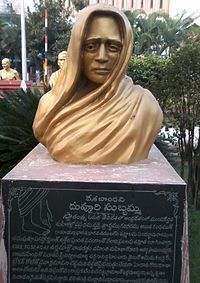














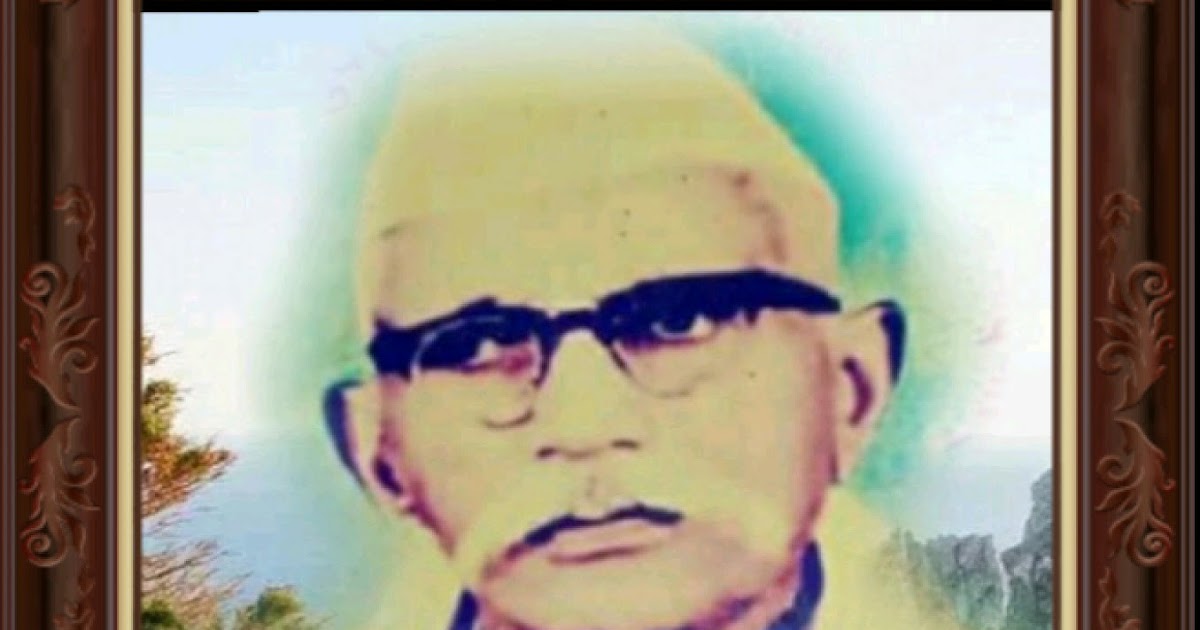





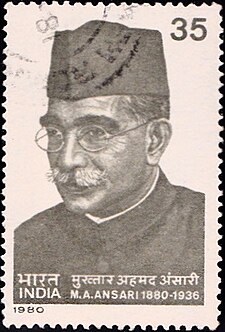





















.jpg)
























Comments
Post a Comment
Thanks for feedback